
THE ABCS OF CBD VEGETARIAN EATS SELF-CARE SMARTS +





21 22 SEASON


THE ABCS OF CBD VEGETARIAN EATS SELF-CARE SMARTS +





21 22 SEASON
Our 21/22 symphony season is scheduled to begin in September 2021 — a joyous celebration of Beethoven that will feature many of the artists and programs we had anticipated experiencing throughout this season.
We are planning to open 21/22 season renewals and new subscriptions in the Spring, and for single tickets to go on sale in August. We’re excited to be together with you again feeling the thrill of live music with our orchestra and John DeMain in beautiful Overture Hall.
madison symphony.org/ 21-22
JOIN US FOR TWO FREE VIRTUAL EVENTS
An exciting performance will be recorded live in Overture Hall featuring MSO’s Principal Organist Greg Zelek and trumpet soloist Ansel Norris. The concert will be streamed this spring on our website. Learn more: madisonsymphony.org/ zeleknorris
“Wisconsin Young Artists Compete: The Final Forte,” will take place in Overture Hall, featuring the finalists who competed in the 2021 Bolz Young Artist Competition. The performances and competition will be presented virtually in the spring. Watch for announcemnts. More: madisonsymphony.org/ finalforte

What began as a dream to connect two communities via a historic railroad trestle and create Wisconsin’s longest trestle trail bridge has become a scenic reality of four trestles, four developed parks and miles of shoreline often referred to as “The Loop.” Hike, bike or run this 3.5-mile loop that offers views of Little Lake Butte des Morts’ stunning vistas and wildlife. Explore the beauty of the waterfront at this Fox Cities Original, and find your original.
For more Originals stories, visit FoxCities.org/originals
39
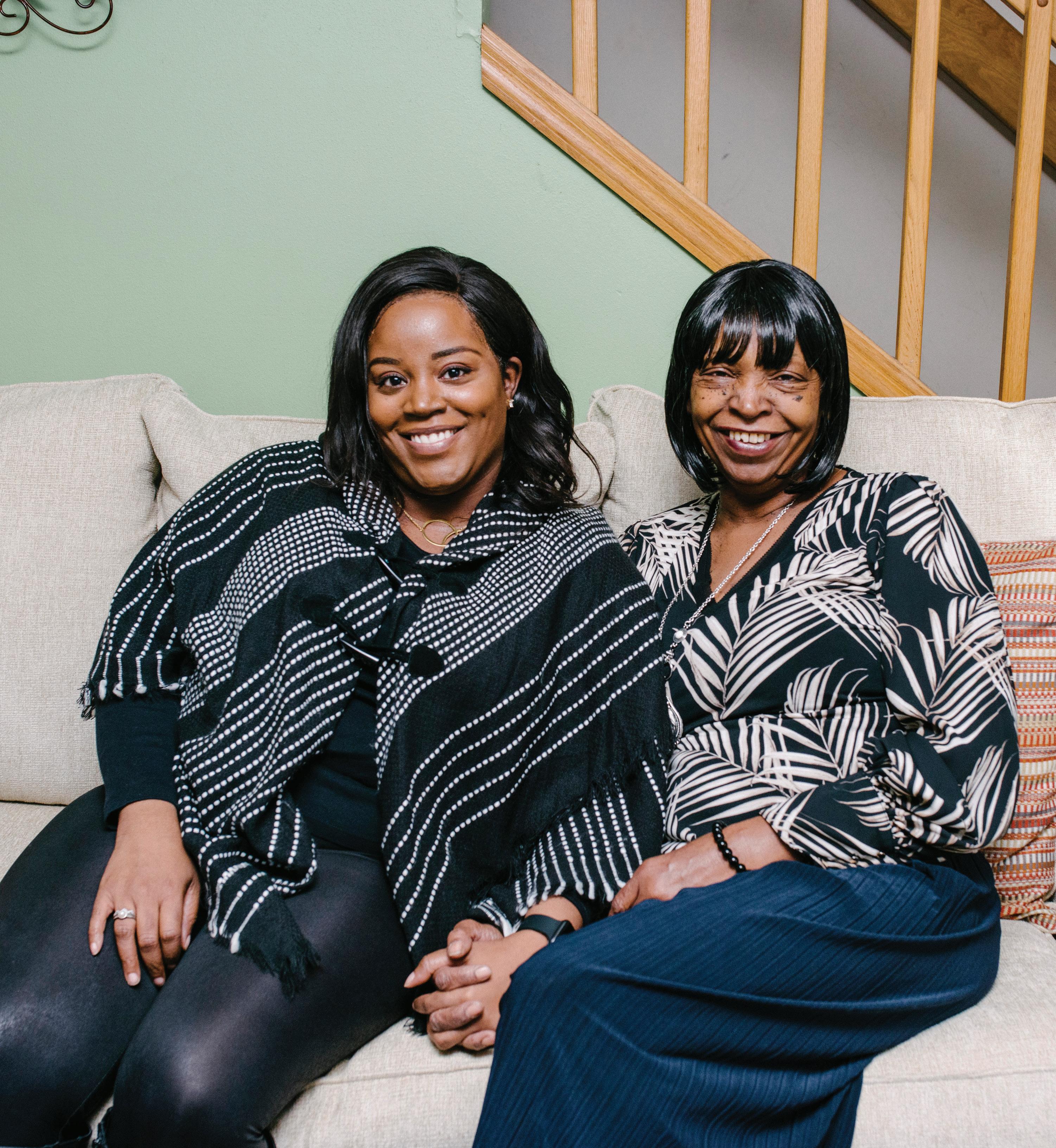
30
Being a caregiver for an older relative is one of the most important jobs we’ll ever have.
Besides reducing and reusing, recycling is just as important. Here are easy ways you can make a difference.
More than ever, people are expanding their focus beyond traditional medicine to holistic practices that can boost and improve their health.
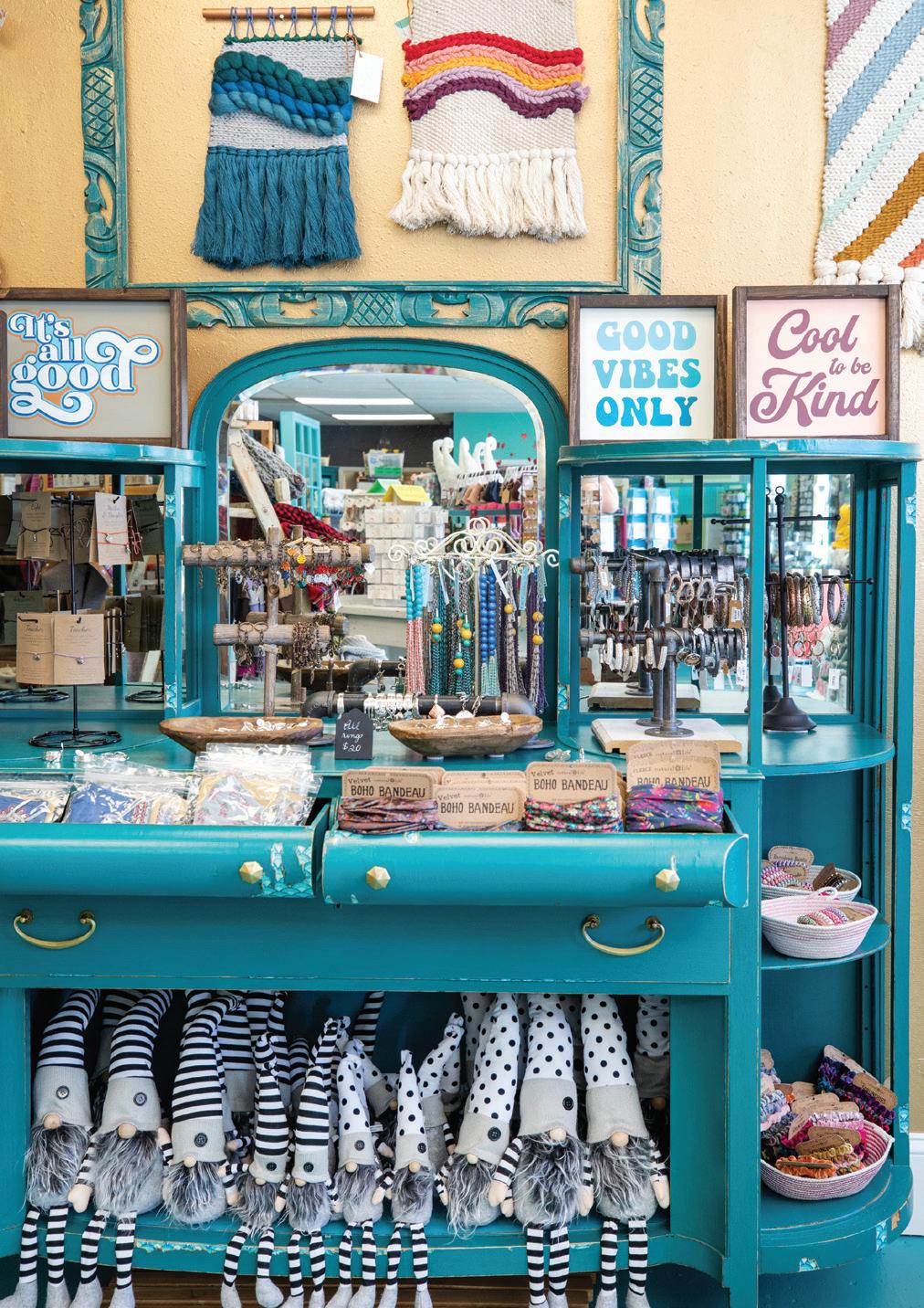



BY KIM SPONEM
How can I reduce stress around handling money?
Most people experience at least some stress around money which can have negative impacts on our lives. Helping people envision possibilities and take actions to reduce stress is a primary motivator for what we do at Summit every day. One powerful action, sometimes overlooked, is asking yourself some questions.
Here are some questions to answer yourself, with a partner or the family. I’ve included some reallife answers from people who want to improve their financial lives. These may spark ideas for you and there are no right or wrong answers. Addressing them from a comfy chair makes it more fun and relaxing. And, fun reduces stress!
Who is impacted by my financial decisions?
• My future self, my loved ones, my employees
Is my spending related to what I value?
• If you value vacations, are you saving money to travel versus buying something? If you value financial stability, are you buying things that work against that or are you setting aside money each pay period?
What would make me feel financially secure?
• Knowing if my paychecks stopped I’d have time to figure out what to do
• Having an emergency fund for when a car breaks down or the washing machine needs repair
• Having the money to retire at 65 or earlier
• Less stress at the holidays or when it’s backto-school time
What is one money habit I would like to develop?
• Automatic transfers to savings accounts
• Using envelopes or multiple savings accounts to set aside spending in different categories
• Waiting a day or week before an unplanned purchase to make sure I still want or need it
What would my life be like if I did not have “X” payment?
• Set money aside for college or retire early
• Plan a dream trip!
Where would I like to be financially by the end of this year?
• Have an emergency savings, all the bills paid on time, a budget, or no credit card debt
• Build a better credit score
What keeps me up at night?
Use your answers here to help establish your goal(s) and new habits.
• Worrying about covering unexpected expenses
• Paying for my kids’ activities
• Wondering if I’ll be able to retire
What do I tell myself over and over about how I handle money, and how is that serving me?
• “It’s just $5, or it’s just $20”…it adds up and I never saw it slipping away.
• “I can’t save. I try but something always throws me off track.”
What money issue causes tension in my relationship(s)?
• Not communicating before spending a lot or figuring out how to split expenses
• Not having the same goals or understanding each other’s habits
• Feeling like my spending is under a microscope
What would I like to do if money were no object?
• Buy land, a vacation home
• Help others pay for school or pay off debts, spoil grandkids, leave money to my family
• Change the view: retire, take more vacations
Look back at your answers. Determine what your top goals/stress relievers are and what’s getting in your way. Use this to determine behaviors or attitudes around money you can realistically change. Our Project Money page at SummitCreditUnion.com will give you real-life ideas and experiences from people who have decided to Own It. You can too.
Kim Sponem is CEO & President since 2002, of Summit Credit Union, a $4.3 billion, memberowned financial cooperative with more than 208,000 members and is federally insured by the NCUA. Kim has a passion for empowering people to improve their financial well-being for a richer life.
Ask Kim your money questions at MoneySmarts@SummitCreditUnion.com.
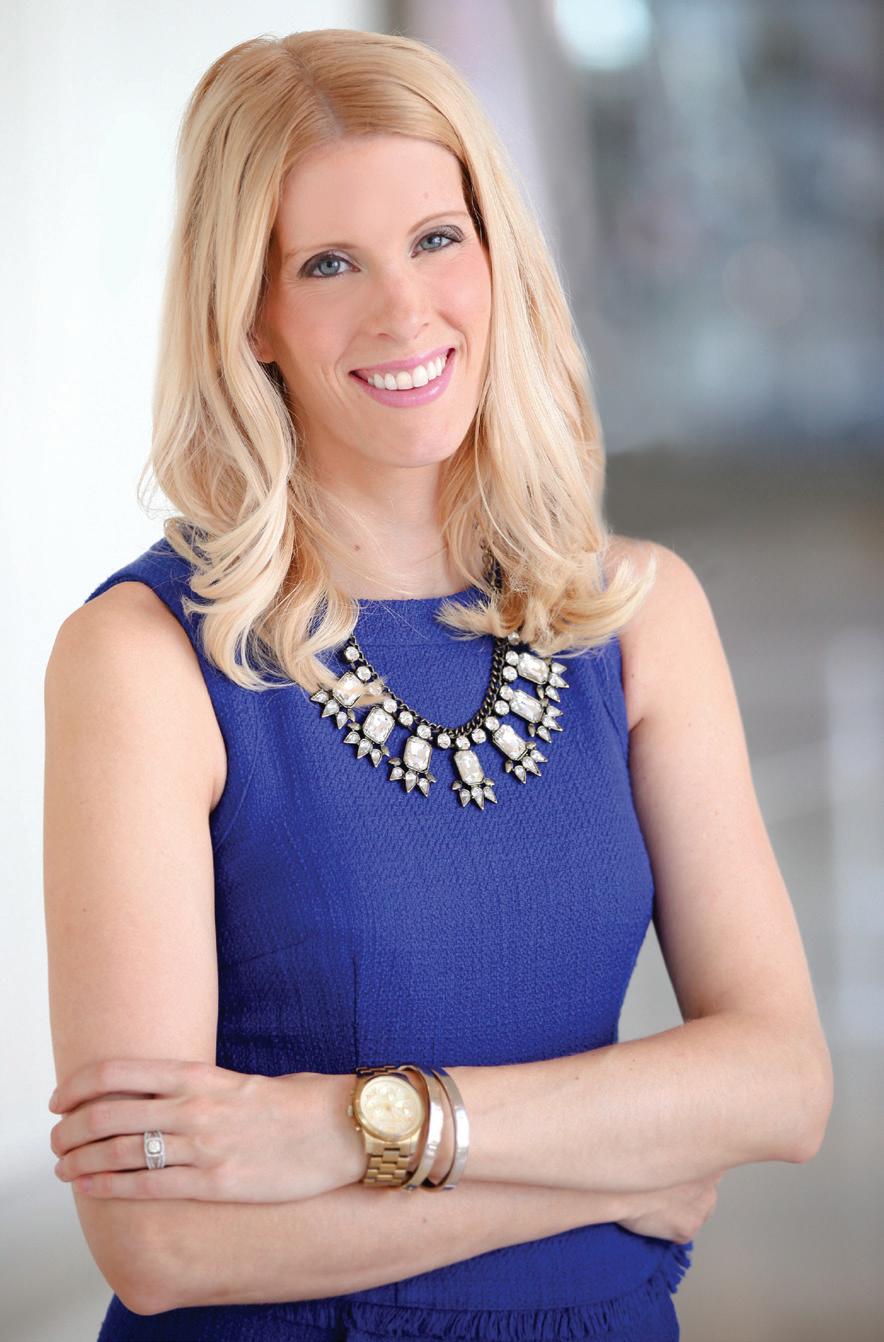
When our editorial staff first started brainstorming topic ideas for a green-themed feature in our March/ April issue, we kept coming back to one idea: recycling. Of course, this is not a new concept, and we all think we know what to recycle. But as we were chatting, we realized that each of us thought different things were recyclable — that actually aren’t. Sometimes, we place an unsuitable item into our recycling bins with the hope that it’ll be recycled — even if we don’t know if it actually is recyclable. Commonly called “wishcyling,” things like deli containers, plastic wrap and even diapers (!) are items that Pellitteri Waste Systems, who handles curbside garbage and recycling pickup for 29 municipalities in our area, encounter at their Materials Recovery Facility. It reinforced the idea that publishing a guide on how to best recycle and what the process is would be helpful to readers. Interested? Read about it starting on P. 30.
Also, choosing better-for-theenvironment products when it comes to our daily habits can make a difference. I’ve stopped using plastic straws at home and only use stainless steel versions now. I replaced a body care product I use that came in a non-recyclable container with a different one that comes in a recyclable container. We use reusable snack and sandwich bags for kid lunches rather than disposable ones. Although these are tiny things, it’s still better to either use less when we can, or choose recyclable products as much as possible. If you need more ideas on what single-use items you can replace in your
home, check out P. 28.
Several of our stories also have a self-care vibe, which is much-needed during these long pandemic days.
“Treating the Whole You” on P. 45 digs into complementary health therapies you may want to look into for a more holistic approach to your health. “The ABCs of CBD” on P. 17 also outlines various CBD products and their health benefits. Eating a vegetarian diet (or even introducing a few meatless dishes into your repertoire every week) can boost your health, too. That’s why you’ll want to read about eight “Mighty and Meatless” eateries on P. 63 that offer tasty vegan and vegetarian eateries. Need to get out (who doesn’t)?
Take a gander at a few indoor gardens in Madison and Milwaukee on P. 67 that will lift your spirits.
We love connecting with you, and we’ve been hearing some really positive messages about what you enjoy in BRAVA, and we appreciate it! Please do give us a follow if you haven’t already on Facebook, Instagram or LinkedIn. And we love to watch your successes in our social feeds, too!
I always welcome your ideas on people and places we should feature within the pages of BRAVA. Feel free to send me a note at shayna@ntmediagroup.com.

Shayna Mace Editorial Director @shaynamace

NEW LIFE | According to thredUp, 73% of apparel is sent to the landfill or incinerated when 95% of it could’ve been reused or recycled. (Yikes). I’ve always been a resale shopper and love finding chic clothing and accessories for myself and my kids. Why always buy new when you can find something totally unique? And, we’ve got a treasure trove of thrift, resale, vintage and consignment shops here in the city that you can shop at and resell or donate your clothing to. (We feature two of them, Stillgood’s Madison and Good Style Shop shown in the outfit, left, and also on P. 9.) We also have a more comprehensive guide to the city’s secondhand shopping scene at bravamagazine.com/consignment-shoppingmadison . There are also a number of apps you can use if you’d like to clear out your closet that way — Poshmark, thredUp and Vinted are a few I’ve used before. It feels so much better knowing that your clothing can have a second life, and it lessens your environmental impact when buying used garments.
BUSINESS
PUBLISHER
Barbara Krause bak@ntmediagroup.com
VICE PRESIDENT OF PUBLICATIONS
Becky Peck bpeck@ntmediagroup.com
EDITORIAL
EDITORIAL DIRECTOR
Shayna Mace shayna@bravamagazine.com
ASSISTANT EDITORIAL DIRECTOR
Shelby Rowe Moyer smoyer@ntmediagroup.com
GRAPHIC DESIGNER
Ashley Duchemin and@ntmediagroup.com
SALES
SALES MANAGER
Dena Frisch dena@ntmediagroup.com
ADVERTISING COORDINATOR
Julie Schiller ads@ntmediagroup.com
CONTRIBUTORS

Emmy Bawden, Ann Christianson, Shelby Deering, Sunny Frantz, Holly Marley-Henschen, Shalicia Johnson, Katy Macek, Emily McCluhan, Hillary Schave, Candice Wagener, Hannah Wente, Shanna Wolf
BRAVA Magazine is a publication of Nei-Turner Media Group, Inc. Gary E. Nei, Chairman, William Turner, President.
This issue or any part thereof may not be reproduced in any form without written permission from the publisher. All rights reserved. ©2021
951 Kimball Lane, Suite 104, Verona, WI. (608) 848-6700


SUBSCRIBE AT BRAVAMAGAZINE.COM
Subscription information: (262) 729-4471 or kerri@ntmediagroup.com.
BRAVA (ISSN 1934-4317) March/April 2021, Volume 22, Number 02, is published bimonthly (six times a year) by Nei-Turner Media Group, Inc. Periodicals postage paid at 3902 Milwaukee St., Madison WI 53714 and additional offices. Subscriptions are $12/year. Postmaster send address changes to: BRAVA Magazine, 951 Kimball Ln., Ste. 104, Verona WI 53593-1786.
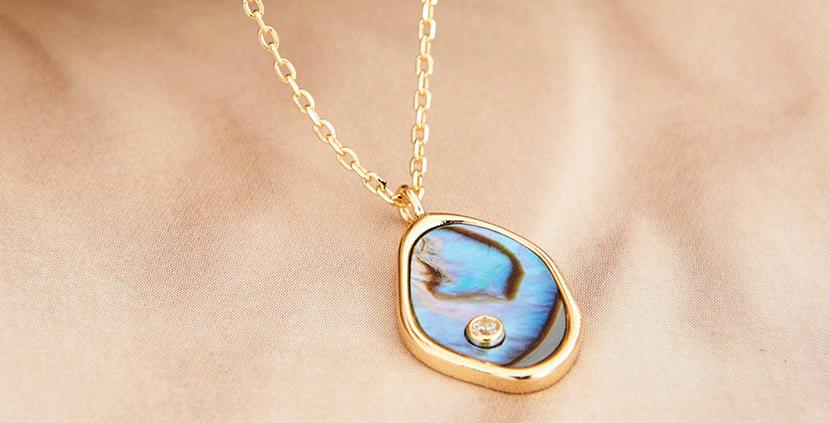






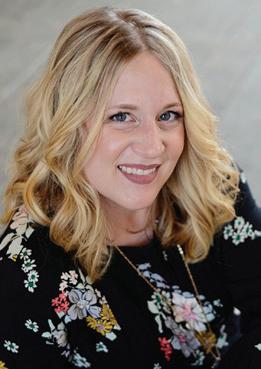
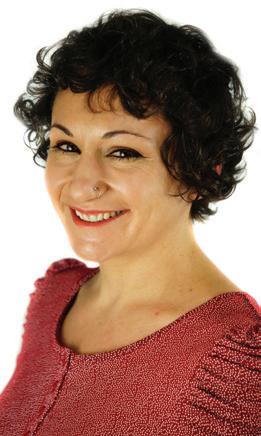

SHELBY DEERING
Shelby is a Madison-based lifestyle writer specializing in home design, wellness, mental health, and travel, among other topics. Those topics pop up in the pieces she wrote for this issue, including “Garden Variety” in Jaunt, “Good Nature” in Dwell and mental wellness in “Treating the Whole You.” She has contributed to Good Housekeeping, Martha Stewart Living, Domino and more. When she’s not writing, you will find her hiking a local trail or spending time with her husband and corgi, Dolly.
@shelbydeeringwriter
HOLLY MARLEY-HENSCHEN
Holly is a community journalist, communications consultant and nonfiction editor. A regular BRAVA contributor, she researched and wrote this month’s feature “Let’s Dig Into Recycling.” Holly grew up watching “Captain Planet” and has been a stickler about recycling since she started taking the daily newspapers from her first job to the community recycling bins after work. When she’s not silently judging others’ recycling habits and fighting the urge to inform them of their errors, Holly is grateful to engage with sources, nonprofits and small businesses to share their stories and promote connection, understanding and growth. She enjoys backpacking, concerts (remember those?), yoga and other people’s pets.
@riotspinstrrr
HANNAH WENTE
Hannah is a freelance writer and health communications professional based in Madison. She has worked for several nonprofits in the area, including the American Parkinson Disease Association and the Wisconsin Council of the Blind & Visually Impaired. She used this expertise to pen “A Generational Shift” about Madison-area women who are caregivers for family members. When Hannah’s not gardening or baking, you can find her at an ultimate frisbee field or paddling on the nearest lake.
@thehannahwente
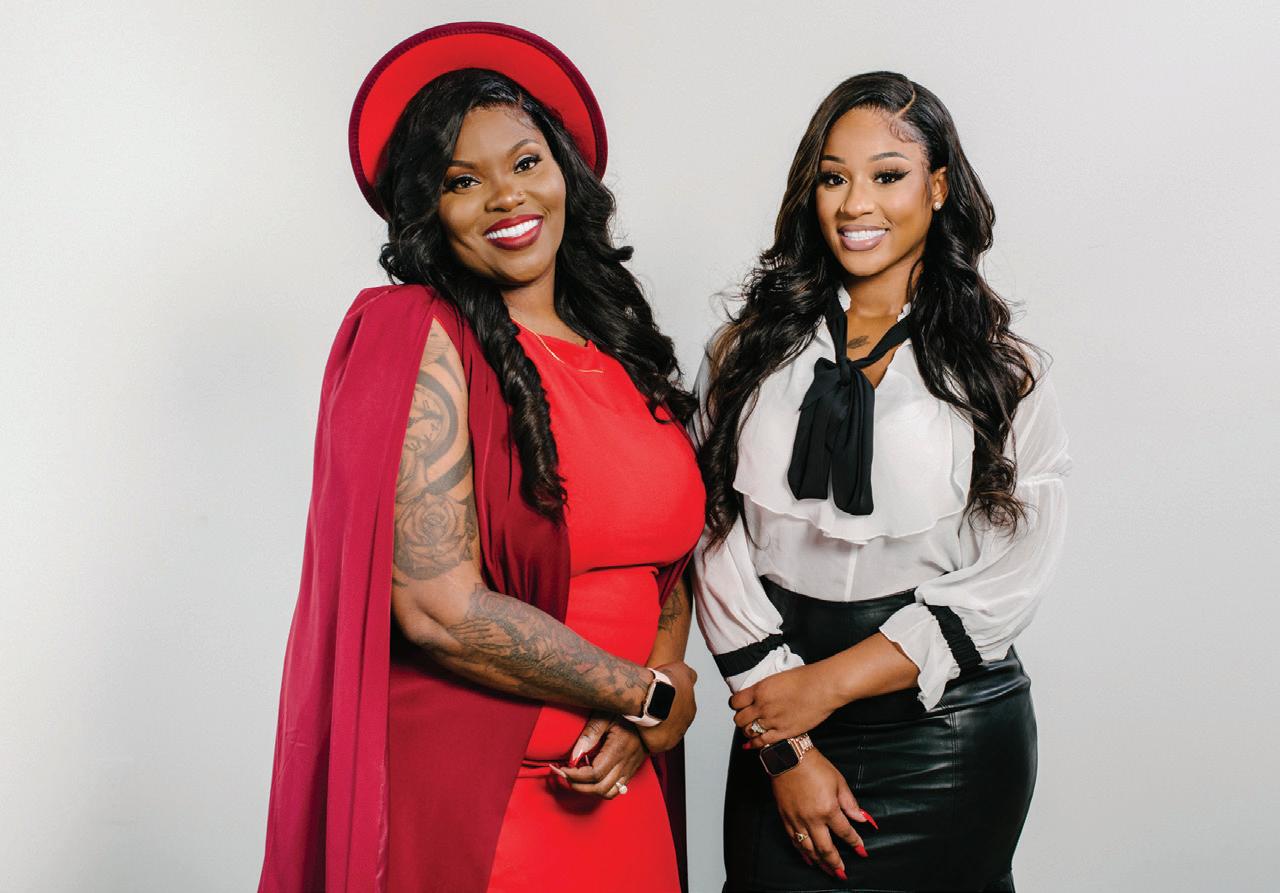

(608) 590-2940
(608) 960-6761
snhelpinghands18@yahoo.com partnersincaresnhelpinghands.com
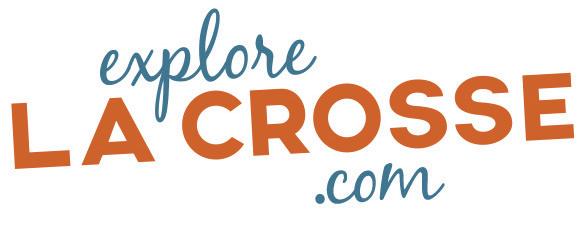


Nicole Pecku and Shatara Jackson have worked in the healthcare industry for a combined 16 years. Both Pecku and Jackson have worked as certified nursing aides, medical administrators and fiscal affairs representatives. Jackson graduated with honors from Madison Area Technical College, while obtaining an Associate Degree in Healthcare Administration. Pecku graduated with honors from Upper Iowa University, while obtaining a Bachelor’s Degree in Healthcare Administration.
The mission for our Adult Family Homes (AFH) is to serve as elite facilities within Dane County for individuals who need assistance with daily living care. We also offer direct support to those in the community through Comprehensive Care Services, known as CCS. Our agency serves a variety of clients that have physical disabilities, developmental disabilities, mental illness and traumatic brain injuries. Our commitment to serving our community is our top priority, as our agency is a part of the WCCEAL Diamond Accreditation Program.
BY SHELBY ROWE MOYER PHOTOGRAPHY BY HILLARY SCHAVE
Information about the fashion industry’s detrimental effect on the planet has paved the way for an ever-blooming array of earthfriendly fashion, like shopping for resale items, which is gentler on the planet. Plus, what would otherwise be a $200 purchase brand new can easily be a $10 bargain find.
You can build a high-powered wardrobe without the hefty price tag and environ mental impact. Here’s what to look for.
Silk shirts are a great layering item under blazers, sweaters, vests and cardigans, and flawlessly tuck into trousers and skirts because of the light, flowy material. Resale shops are a great place to find killer T-shirts. Use them for an elevated casual look, like we did here.
Focus on quality when shoe shopping. Leather tends to hold up better and can more easily be mended and repolished. Keep an eye out for Enzo Angiolini leather loafers and Franco Sarto heels and flats.

Silk scarf, $6 , vintage concert tee, $12 , men’s vintage wool trousers, $34 , leather belt, 18 , Rothschild’s lavender coat, $39, Bed | Stu wingtip loafers, $40 , all from Stillgood’s Madison, stillgoodsmadison.com ; flying bird brooch, $16 , Good Style Shop, goodstyleshop.com

Tie them in a bow or in a simple knot (so that the tails hang down) for a breezy, sophisticated look. They’re also beautiful tied to a leather handbag.
Blazers and coats made with 100% wool fibers are plentiful on the resale market (as are wool sweaters, so keep your eyes peeled for those, too). You’re also more likely to find a wider range of colors, patterns and sizes.
You’re more likely to find these at antique shops than thrift stores, but keep your eye out. Dress up a casual outfit by affixing one to a blazer lapel or at the neck of a button-down shirt.

The clothes you buy, wash and throw away have a big impact on the planet.

For decades, conversations around climate change and sustainability have centered around the cars we drive, the single-use plastics we toss, and the ways in which to conserve water.
But one element has largely stayed out of the spotlight: fashion.
How our clothes are made and how quickly we discard them are one of the leading contributors to climate change.
Manmade fabrics like polyester, acrylic and nylon were engineered to last, well, basically forever. They’re resistant to breaking down in the environment, and when we wash them, these textiles shed 500,000 tons of microplastics into the oceans each year — the equivalent to 50
billion plastic bottles.
Even cotton, a textile that’s generally considered sustainable, is problematic.
According to the World Wildlife Foundation, roughly 700 gallons of water are required to make a single T-shirt.
The issue, however, goes beyond the fabric. The industry as a whole is responsible for 10% of carbon emissions — more than international flights and maritime shipping combined, according to Business Insider.
And that’s partially because the majority of our clothing is discarded the same year it is purchased. The EPA announced that there’s currently more than 14 million tons of clothing in landfills.
If that clothing had been recycled, it would be the equivalent of taking 7.3 million cars off the road.
This is a lot of doom and gloom, but the good news is that the industry is changing, and resale is booming. A 2019 report from thredUP, an online clothing reseller, noted that the $24 billion resale market was rapidly approaching the $35 billion fast-fashion market. Based on current trends, Statistica predicts that the secondhand apparel market will be worth $64 billion by 2024.
In short, sourcing even a portion of your wardrobe from resale shops can make a big difference.
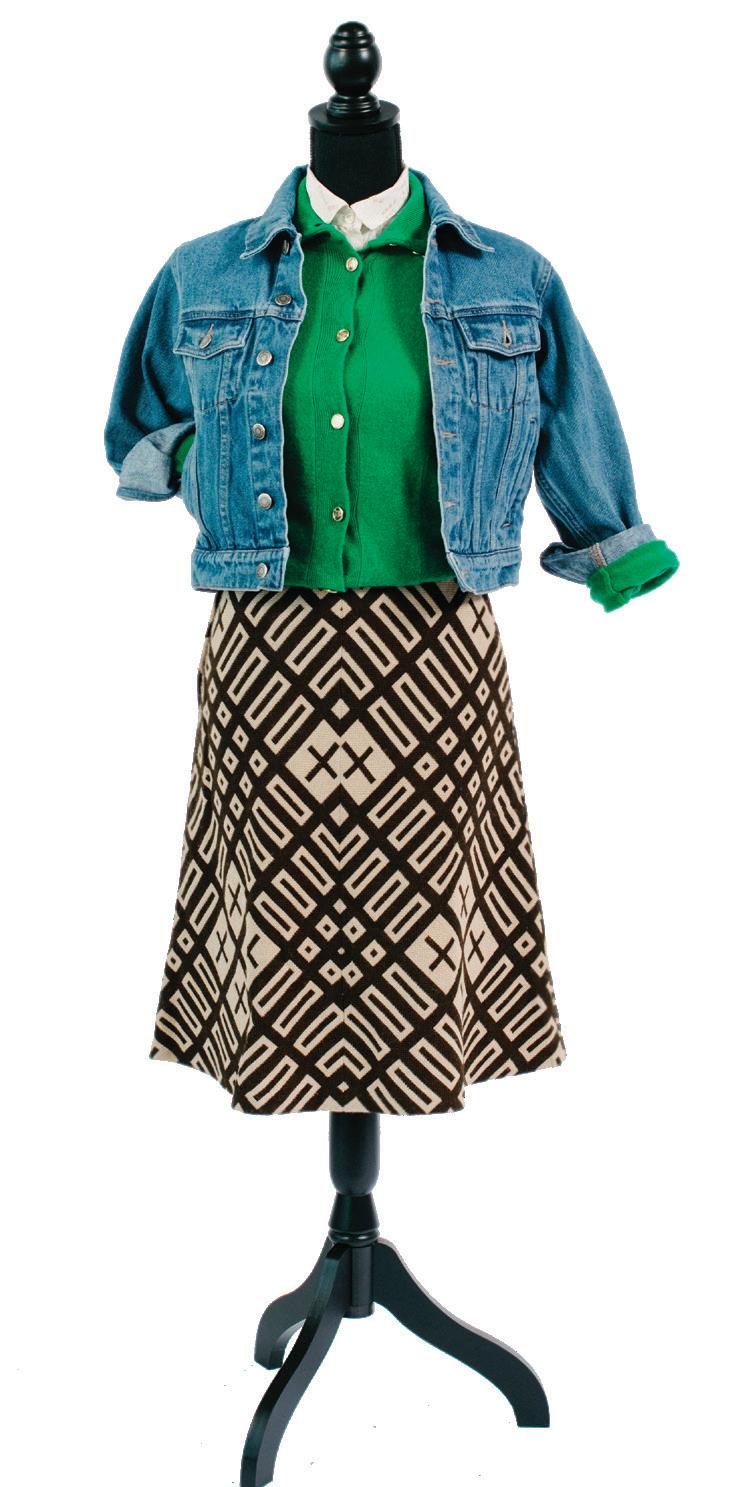
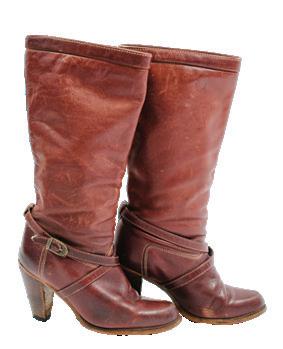
Take this quiz from thredUP to measure your own fashion-related carbon footprint. It takes you through a series of questions and then the algorithm calculates how many pounds of carbon your fashion choices emit annually. thredup.com/fashionfootprint
Coolest Apparel to Come Through the Shop: Hudson Bay Company blanket coats, Escada silks, Korean War-era Sukajan Jackets, all things Levi’s, Jean Paul Gaultier jackets and separates, Frye Boots, UW throwbacks.
What I Shop For: “Once I have a steady set of things to reliably wear in a season, I just sorta hunt and peck for ornaments to go on top. Now, I’m usually on the hunt for early to mid-century blanket coats, gabardine menswear, Nordic wool fair isle sweaters and Mosquitohead idol worship graphic tees.
Coolest Apparel to Come Through the Shop: Hand-knit sweaters, rhinestone jackets, a stunning vintage Gunne Sax dress, Pendleton shirts and jackets, a Universal Standard puffer jacket, fun ’80s jeans.
A Passion for Earth-Friendly Fashion: The fashion industry is one of the largest industries in the world, so you can only imagine what it is doing to our planet. There are so many reasons to buy resale. Most importantly, it’s good for the environment. It also helps save you money, and it’s fun to discover new styles and create unique ways to express your personality.
1990s Wrangler crop denim jacket, $28 , patterned cream button-down blouse, $28 , 1980s Forenza Kelly green wool cardigan, $28 , 1970s geometric bias-cut A-line wool skirt, $28 , Zodiac cordovan leather wraparound stack boots, $34 , all from Good Style Shop
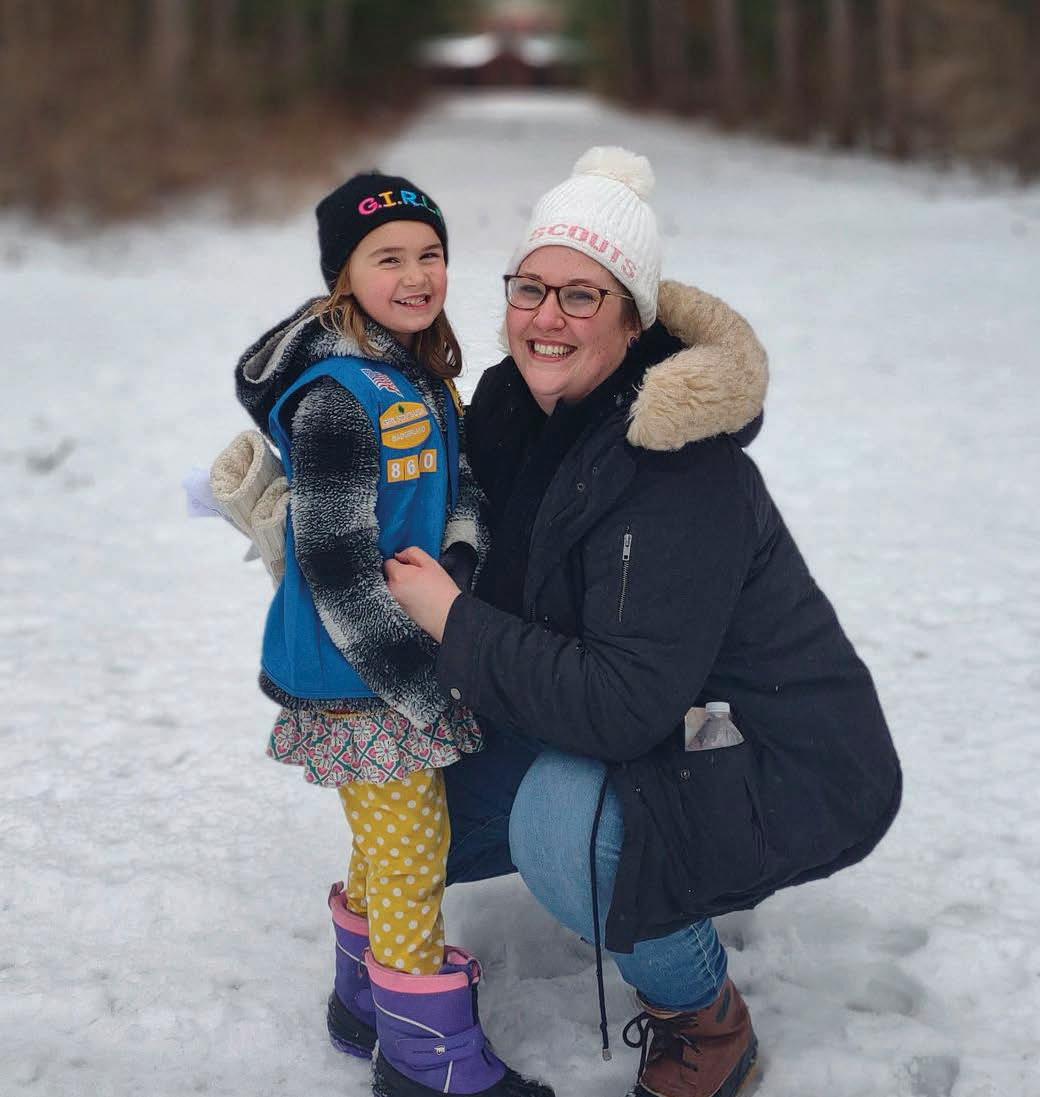
BY SHAYNA MACE PHOTOGRAPHY BY SHANNA WOLF
When Leah Robertson and Rebecca Aide
teamed up to open Booth 121 in 2015, Robertson’s upcycled furnishings business was already a hit. Like any successful enterprise, the sisters-in-law decided to level up to open a retail shop that offered Robertson’s pieces — plus home décor, gifts, jewelry and clothing.
The quirky and colorful shop is known for its snark, and shoppers will find funny “The Golden Girls” memorabilia, sassy magnets, candles with witty sayings and even cross-stitch wall hangings with a naughty (and nice) streak. The majority of pieces in the shop are handmade, and Robertson says they carry over 100 makers — 90% of which are from Wisconsin.
“Our customers come in here because they appreciate what our makers do, and the value of their talent,” says Robertson.
Aide loves coming into work every day. “No one comes in here because they have to, they come in here because they want to!”
6203 Monona Dr., booth121.com
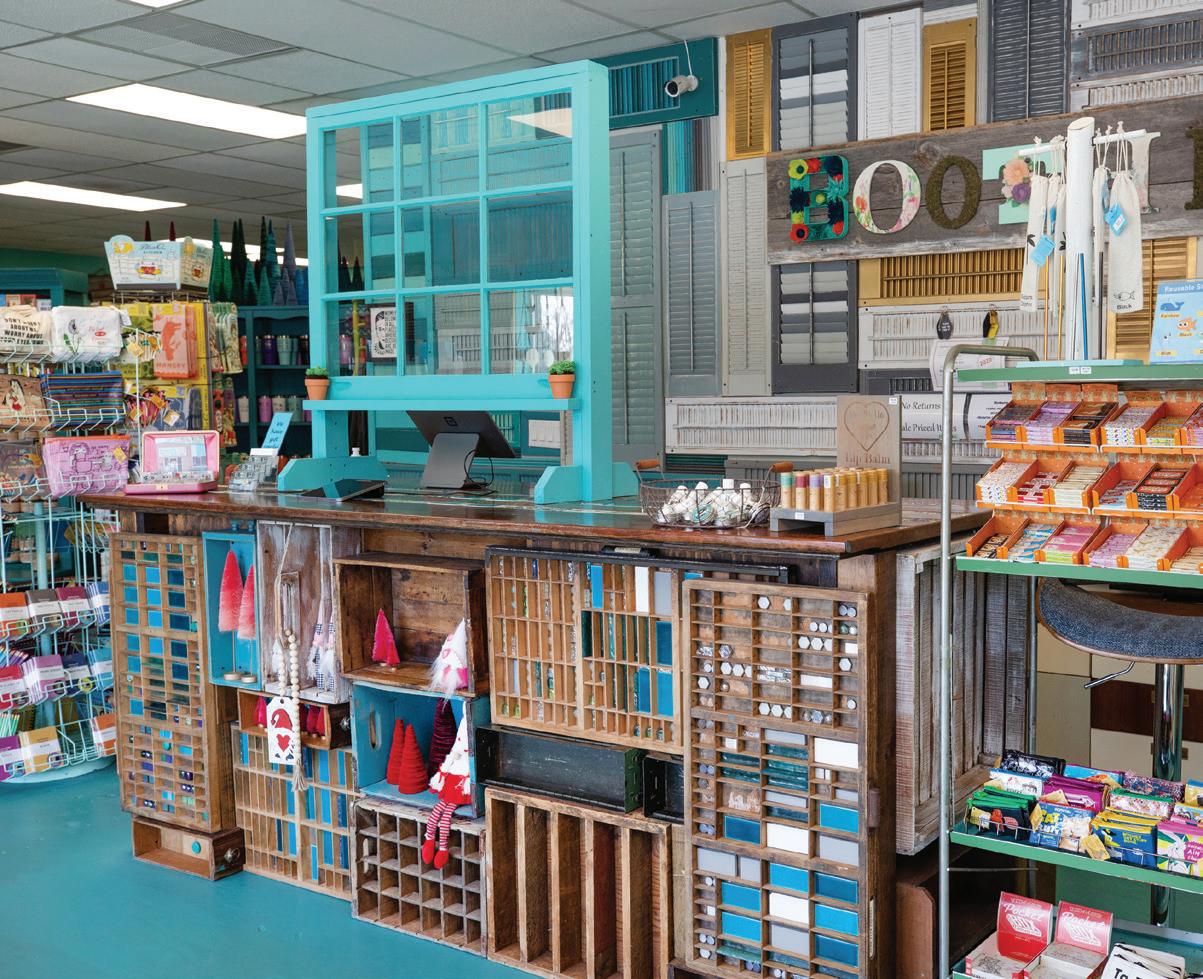

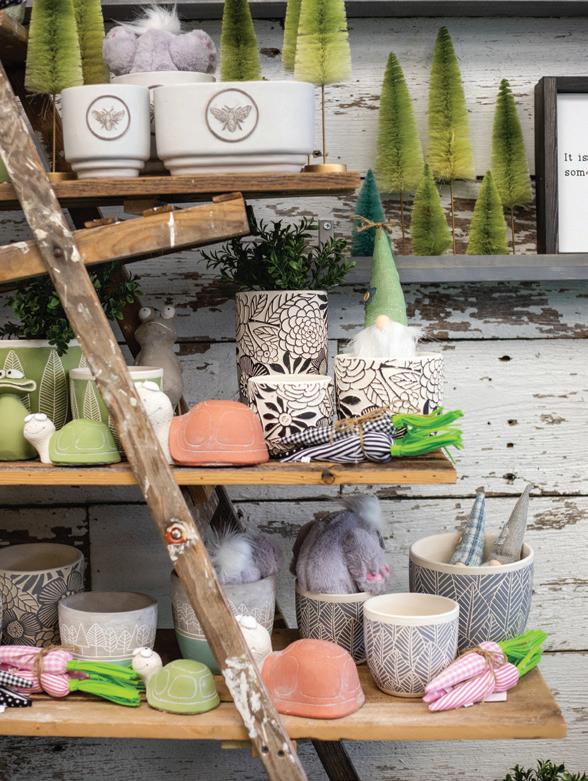
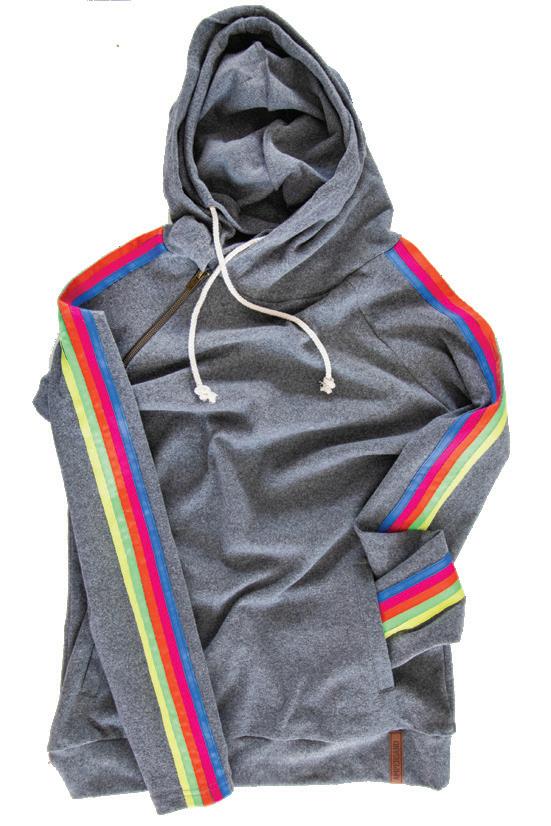
The shop’s impressive array of MeraVic gnomes will brighten your day. $25

South Street Soapworks’ handmade body products are
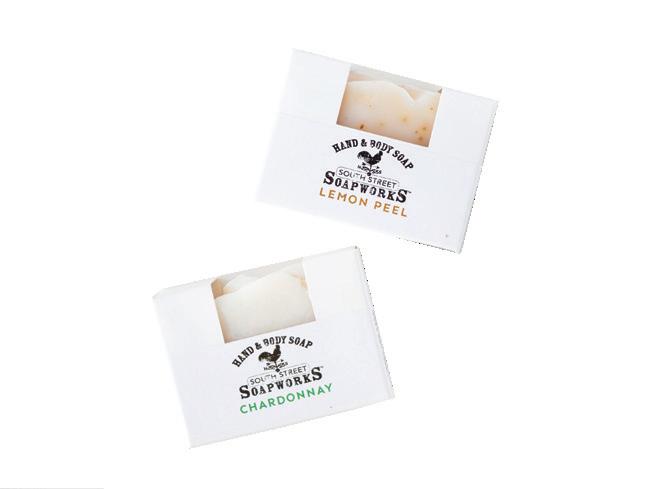
Madison-based Bohemian Bauble crafts unique jewelry out of reclaimed beads.
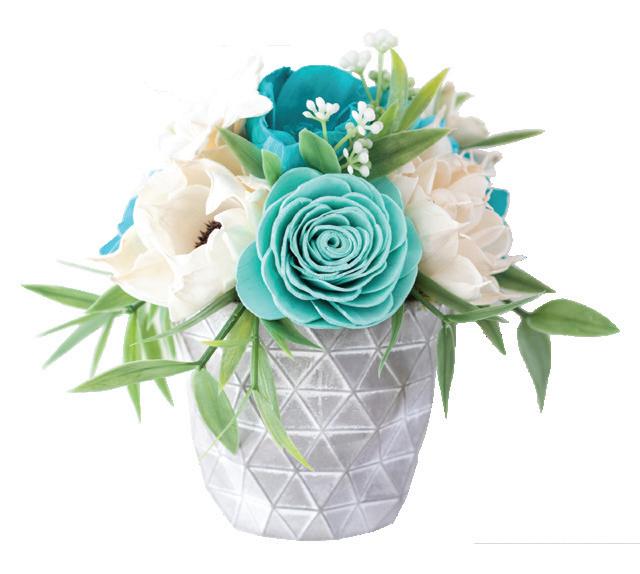


Booth 121 carries a lot of upcycled items, like this license plate sign by Valley
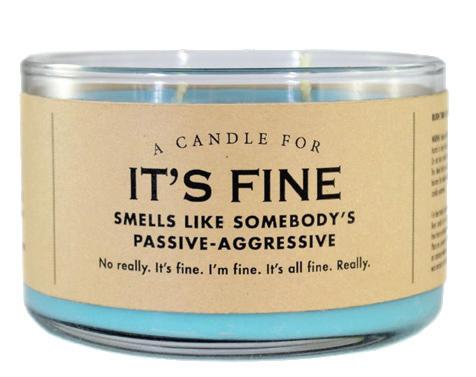

By creating several sociallyresponsible companies and programs in Madison, Alnisa Allgood continues to elevate the voices and viewpoints of underrepresented groups in business and nonprofit boards.
BY CANDICE WAGENER PHOTOGRAPHY
BY
SHALICIA JOHNSON
Alnisa Allgood is determined to change the ideology around nonprofits. She’s widening the perspective of those outside the nonprofit sector by telling the stories of those involved in the sector, and helping Black, Indigenous and People of Color (BIPOC) and women founders appreciate their own worth.
Allgood is behind several socially-responsible programs in Madison, including Social Good Accelerator, an initiative working to propel social entrepreneurs in underrepresented groups, and Madison Nonprofit Day, a conference aimed toward growing the connections and skills of activists and advocates. Both fall under the umbrella of Collaboration for Good, a nonprofit that Allgood founded with the intent of helping other nonprofits improve and enhance their infrastructures so they can thrive well into the future.
“Our [country’s] economic system and the way it’s set up is the reason why we don’t make as much headway on these other issues,” says Allgood. “Because as much as I think most people want racism, sexism and all of these things to go away or to be reduced, ultimately, they don’t want their lives to change.”
This focus on economic equity and ensuring BIPOC and women have access to the resources they need to succeed and taking control of their own financial wellbeing through social entrepreneurship have been Allgood’s driving force. So often, she says, BIPOC and women undervalue themselves, living dangerously close to the poverty line where one mistake, lost contract or change in a client policy can be a tipping point.
Preston Austin, who co-founded the Social Good Accelerator with Allgood and partnered with her on Forward Fest (a technology and entrepreneurship festival), says she is laserfocused on understanding and being understood, making her a colleague who improves the lives of the people around her.
“As a Black woman making new spaces in a field over-full

DÉCOR FOR THE WELL-DRESSED HOME
3000 Cahill Main, Suite 215 Fitchburg, WI 53711
608.444.0571
decormadison.com
At Décor we offer something for every client’s taste. You will find an array of seasonal and everyday home accents, art, furniture and more. Call to schedule a private shopping experience or stop in today. Visit our Facebook page @decormadison for new items and upcoming events.


These raincoats from Kitty’s Free Range Designs are made locally and feature a reflective strip, fleece lining and fun patterns. Shop online, call or email to order.
BAD DOG FRIDA
2094 Atwood Ave. Madison, WI 53704
608.442.6868
baddogfrida.com
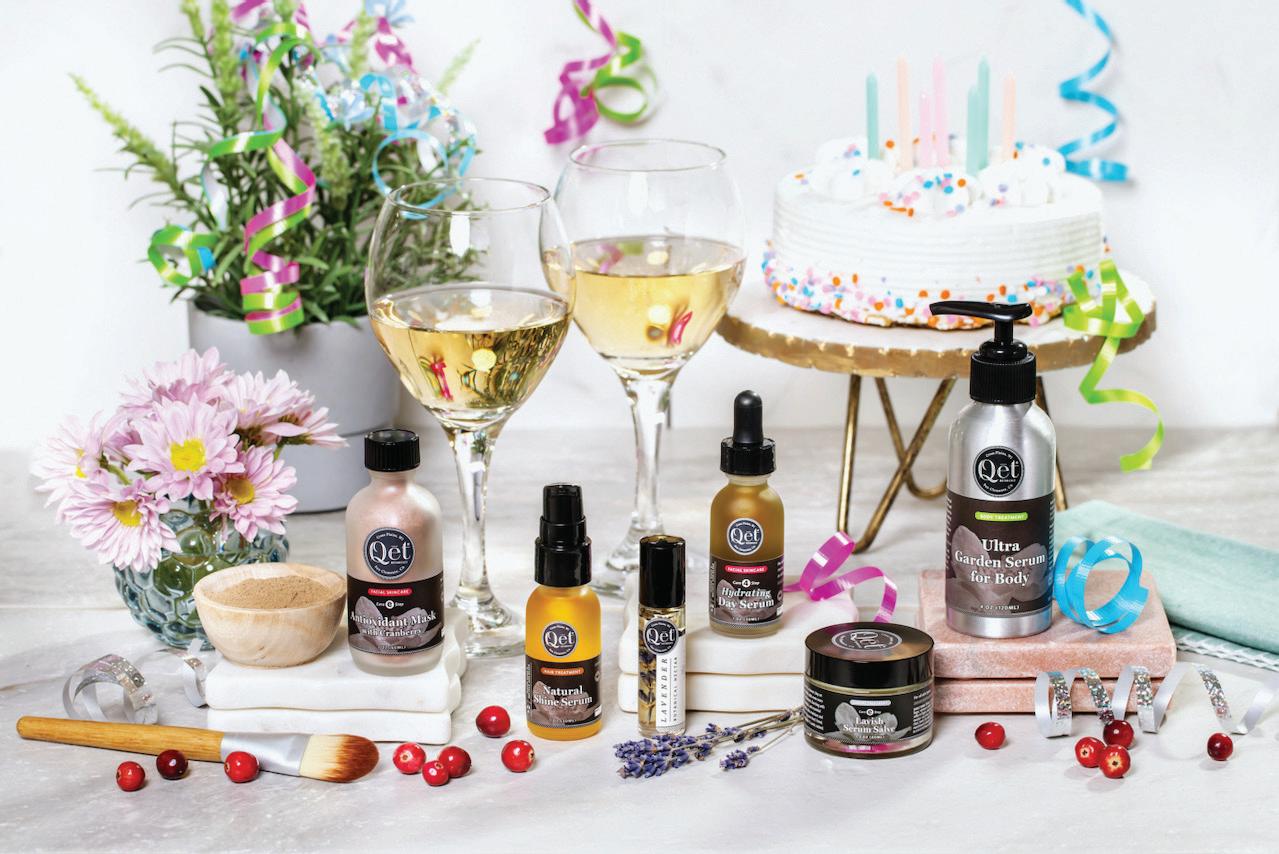
Thank YOU for your support! With over a dozen national awards for our skin, hair and body treatments, we’re honored to be continuing on this journey with you. Visit our site for specials, or pop into the Skin Studio. Cheers to clean beauty!
QET BOTANICALS
2018 Main St. Cross Plains, WI 53528
608.798.1738
QetBotanicals.com
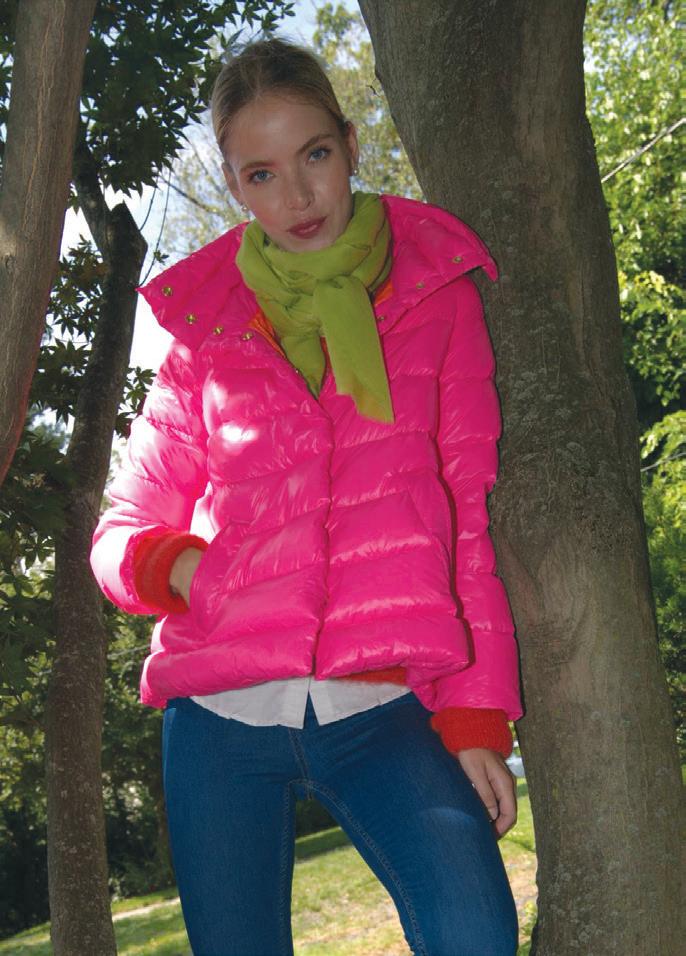
AND MORE
305 E Main St. Waunakee, WI 53597
608.849.2426
ciaobellaboutiqueandmore.com
Transition your wardrobe from winter to spring with bright, fun and fresh styles. Shop spring jackets, dresses, rompers, accessories, jewelry, shoes, men’s shirts and shorts and more!
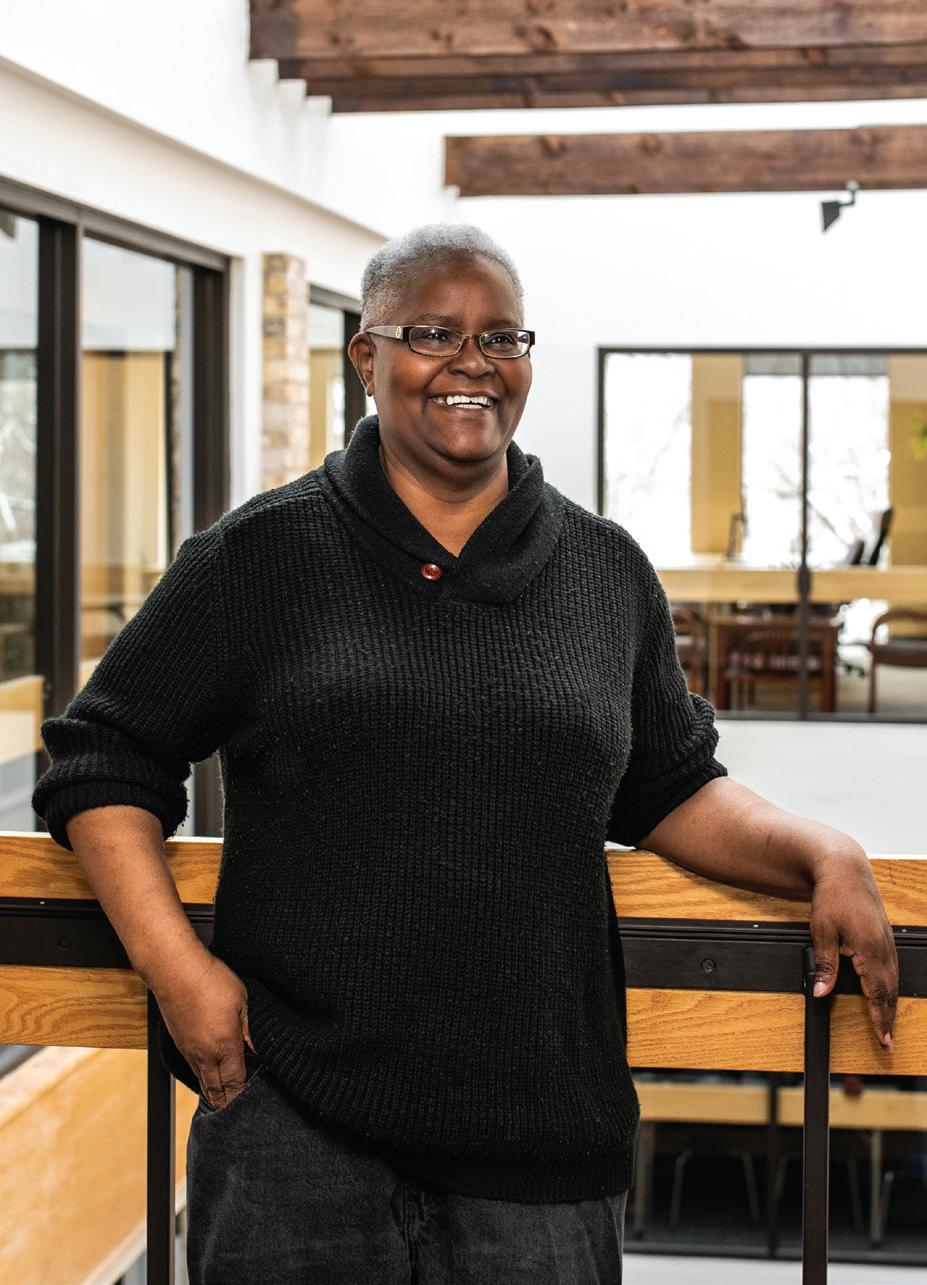

BRAVA MAGAZINE
951 Kimball Ln. Suite 104
Verona, WI 53593
bravamagazine.com
with white and male power and money, this matters greatly, and her intentionality, clarity and long-term focus creates the kind of equity among people that lasts and compounds... She’s amazing in her ability to create leverage, moving small projects and large enterprises alike in subtle ways that make Madison better,” says Austin.
Allgood’s future plans include increasing representation on area nonprofit boards, city committees and public positions through Madison Nonprofit Draft Day and expanding their reach with Social Good Accelerator to include immigrants and people with disabilities. And, she’s planning out a community development fund (which are funds used for improving the overall community, such as housing programs), fueled by the devastation and disparity she saw COVID-19 wreak on Black and brown businesses.
The pandemic also generated her partnership with Cook It Forward Madison, a collaboration between local restaurants and nonprofits to create an end-to-end distribution network to tackle food insecurity in Madison.
“I’m not one of those people that’s looking for some very dramatic change that spreads across the world. I’m very good at the types of changes that need to happen one person at a time or one group, one community at a time,” says Allgood.
Visit bravamagazine.com to learn more of Allgood’s thoughts on how nonprofits can operate even better.
Candice Wagener is a freelance writer who enjoys telling stories that inform, intrigue and inspire. Her 14-year career has taught her more than she could ever have imagined.
SPECIAL ADVERTISEMENT
BE SEEN IN BRAVA!
BRAVA Magazine’s sales manager Dena Frisch works directly with local businesses to get their messages in front of thousands of loyal monthly readers in our print publication and website. Marketing services include: print advertising, digital placement, email campaigns and special event planning. For more information please visit bravamagazine.com or call 608-220-2120.

MCFEE ON MAIN
400 E. Main St. Mount Horeb, WI mcfeeonmain.com
Tones of blues, patchwork prints and denim are core to your relaxed spring style.
Nothing peps up our step like a new Outfit! Stop in at McFee on Main and let us help you add some “spring” to your step.
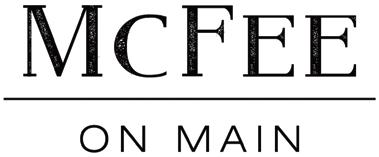

For many years, surgery was the only way to rejuvenate your aging facial skin, but that has changed. Now you can turn back time, restore younger skin and lost volume, and love what you see in the mirror with innovative treatments that harness light energy, skin chemistry and the natural regenerative potential of our own bodies. Shamila Gupta Rawal, MD, at The Rawal Institute for Hair Restoration and Aesthetic Medicine, specializes in the most effective non-surgical therapies to reverse and even prevent sun- and age-related damage to the skin. Younger patients can take advantage of a “Prejuvenation Plan” to address the earliest and often invisible skin changes that start in childhood to keep their skin glowing.
What is photoaging and how can I address it?
Photoaging is the result of cumulative DNA and inflammatory damage to our cells, caused by the harmful UVA (aging) and UVB (burning) rays of the sun. It is well known that daily use of a high SPF mineral sunscreen (zinc oxide and/or titanium oxide) will provide a physical defense against these damaging effects, but there are also tools to both prevent and treat sun damage from the inside out. Because the processes that trigger sun damage are oxidative stresses, involving free radical molecules, incorporation of antioxidants in our diet and skincare can both prevent and treat sun damage at a chemical level.
My very own medical-grade skincare line, tR(x)i, uses the most potent, highest purity pharmaceutical ingredients, with antioxidants like green tea polyphenols, all-trans retinol, apple stem cells, biomimetic ceramides and
cell-signaling peptides to repair your skin barrier, reduce inflammation, reverse uneven pigment, improve fine lines and wrinkles and optimize the integrity of your skin. I have created products that are suitable for both men and women and will address a variety of specific skin concerns, which we can target during your consultation. When coupled with healthy lifestyle choices in your diet, activity, sleep and stress response, your skin won’t just look better, it will FEEL better.
I keep hearing about Botox, fillers, lasers — how do I know what I need?
There is no one-size-fits-all plan for skin and facial rejuvenation. That is why an initial consultation is so important, during which I partner with you to develop a dynamic plan that will help you achieve natural, age- and gender-appropriate results. Paramount to our consultation is the setting of appropriate expectations and addressing the limitations of non-surgical rejuvenation strategies. Sometimes, non-surgical treatments may not be able to provide a tangible improvement for my patient’s level of photoaging, and I will refer him or her to a facial plastic surgery colleague for further management.
PRP, or platelet-rich plasma, is a regenerative medicine technology, whereby our body’s natural healing abilities are tapped to repair old or sun-damaged tissues and restore youthfulness. Because the cells are taken from your own body, issues like infection and rejection are almost non-existent, making the technology very safe and very effective where indicated.
Energy-based devices use energy to stimulate the repair and increased production of collagen in the skin, rev up cellular metabolism, break up and disperse abnormal pigment and even treat acne. At my practice, I am proud to offer the Venus Versa suite of energy-based technologies, which can be used individually or together in my 3-in-1 ultimate rejuvenating tRibella treatment.
I also offer a variety of injectables at my practice, including neurotoxins (i.e., Botox) for treatment of wrinkles, dermal fillers to help restore lost volume and assist with contouring, and deoxycholic acid (i.e., Kybella) for local fat destruction. Chemical peels can enhance the exfoliation of layers of damaged skin, in order to start with a fresh canvas that can then be maintained with skin care.
Because photoaging affects individuals uniquely, my approach is to identify YOUR particular needs and create a personalized treatment plan to correct them. These rejuvenation modalities, and for my younger patients “Prejuvenation” modalities, will help keep you...refreshed.

Interested in CBD? Here’s your quick primer about the range of products available.
BY JESSICA STEINHOFF PHOTOGRAPHY BY SHANNA WOLF
The cannabidiol, or CBD, market is growing at an exponential rate. According to Forbes, the market is expected to reach $24 billion in 2024.
CBD is a chemical found in the Cannabis sativa plant, also known as hemp or marijuana. Unlike the marijuana people use to get high, CBD extract contains only trace amounts of the psychoactive compound THC. For some people, it helps relieve anxiety, insomnia or chronic pain.
In Wisconsin, CBD has been legal since 2014 (the amount of THC allowed in products is capped at 0.3%), so you may have tried a CBD product by now. But if you haven’t, or are interested in the full range of CBD products out there, here are some types to consider, plus advice on choosing a reputable brand and the right formulation. And, don’t forget to consult your doctor when deciding whether to try CBD.
Not all CBD products are created equal. Whether you’re buying CBD oil, lotion or brownies, it’s smart to gather information about the chemical makeup of the product, if and how it was tested, and where the plants were grown.
Full-spectrum products contain the widest range of chemical compounds from the cannabis plant, including up to 0.3% THC. These compounds are thought to enhance CBD’s effectiveness and have health-promoting properties of their own. Broad-spectrum products are like full-spectrum ones, but without THC. Meanwhile, CBD-isolate products have no other plant compounds.
Testing is another factor to consider. According to Dave Knott, master herbalist and co-owner of Embrace Wellness in Middleton, full-panel testing by a third-party lab is one indicator of a high-quality CBD product.
“Third-party analysis verifies the potency of the product, and full-panel testing looks for contaminants that can make
Top to bottom: Hemplucid CBD Body Cream, $54.99, The Healthy Place; The Wisconsin Story CBD 1000 mg Orange Dream, $115, and 500 mg Pet Formula, $75 , Embrace Wellness; Charlotte’s Web Raspberry Sleep Gummies, $44.99, Wild Theory CBD Co Full Spectrum Cannabinoid softgels, $65.99, Wild Theory CBD Co Full Spectrum Cannabinoid 250 mg oil, $29.99, and Wild Theory CBD Co CBD topical cream, $56.99, all from The Healthy Place; and Charlotte’s Web Hemp Infused Balm, $39.99, Embrace Wellness

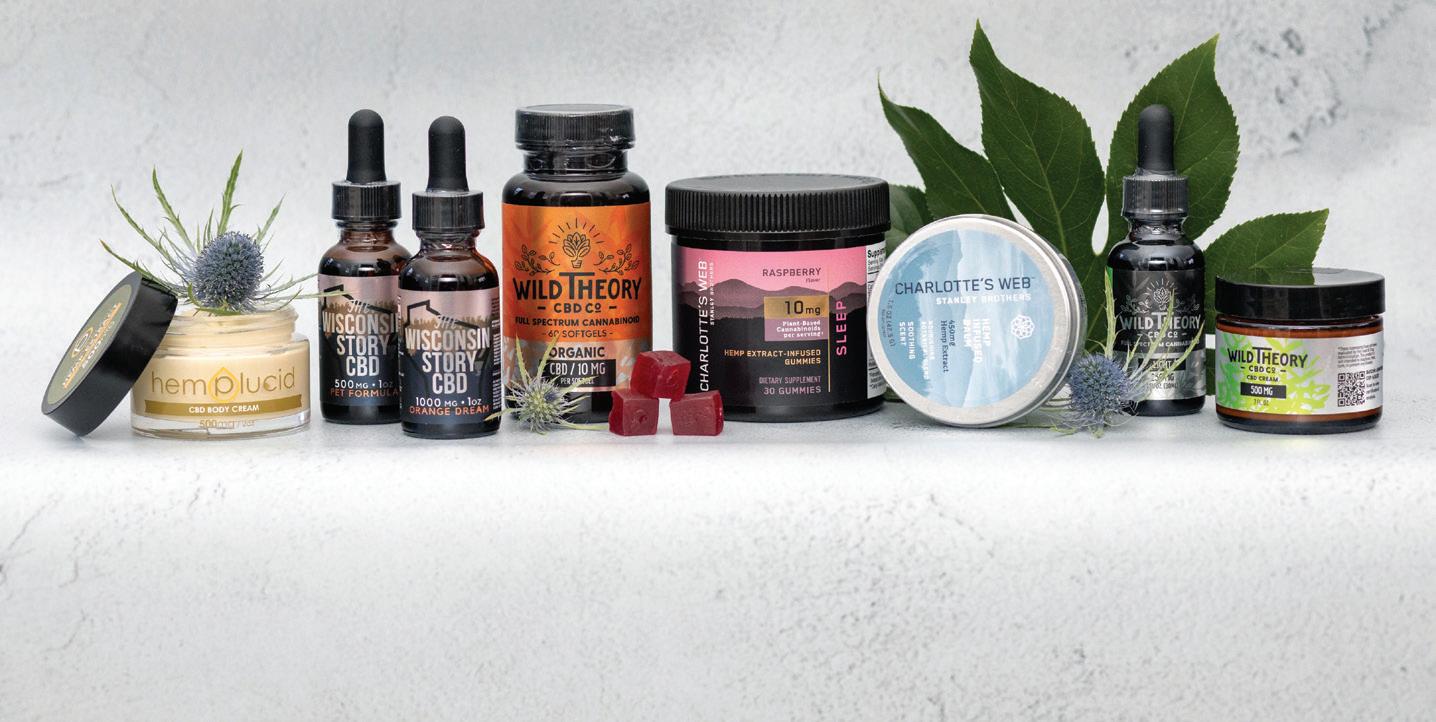
you sick,” he explains, including pesticides, herbicides, fungicides and even mold. “Pounds and pounds of hemp flower get concentrated in CBD products, and even the smallest amount of mold in there can harm your health.”
Knott also recommends asking where the product’s plant is sourced from and who grows it.
“If the product’s plants are from one farm, that’s ideal. You’re more likely to get the same results each time,” he says, noting that Wisconsin farmers have put a lot of resources and time into creating a high-quality product. .
Knott doesn’t just sell CBD at his shop. Along with several Wisconsin farmer friends, he grows the cannabis used in The Wisconsin Story CBD Formula. Available in four potencies, including a 500 mg variety for pets, this liquid formulation is custom-made to help ease anxiety and pain.
Kaitlyn Ganz, a wellness consultant at The Healthy Place Fitchburg often recommends versatile liquid products like Wild Theory Full-Spectrum CBD oil to first-timers.
“Many people respond well to oil-based tinctures that are placed under the tongue. The body tends to absorb CBD quickly when it’s ingested this way,” she says.
The effects of CBD supplements in capsule, tablet or gummy form arrive more slowly but last longer, Ganz notes.
“You can take these 45 minutes before going to bed to help you fall asleep. Since they stay in your system a little longer than an oil, they may be the best choice for helping you stay asleep,” she says.
At The Healthy Place, choices range from multipurpose Wild Theory Full-Spectrum
CBD softgels to specialized products like Charlotte’s Web Raspberry Sleep Gummies, which combine CBD’s anxietyfighting power with the sleep-inducing properties of melatonin.
A single CBD gummy might melt away insomnia, but what if you want a soothing snack during a stressful workday? At CBD American Shaman, you can find snacksize bags of gourmet gummy candies in several CBD-enhanced flavors. Or get your fix with CBD-infused honey, brownies or raisin-pecan Hermit Cookies.
According to Josh O’Neill, manager of CBD American Shaman Sun Prairie, these sweets can be used for an occasional burst of stress relief or simply to give CBD a whirl.
“Gummy candies can be less intimidating than a product you smoke,” he says.
“They make it easy to start with a small dose of CBD and see if you need more to relax, decrease pain or whatever your goal happens to be.”
Creams, lotions and other topical CBD products are popular among both skin-care enthusiasts and athletes. The Healthy Place carries Hemplucid Whole Plant Body Butter, which can help sore exercisers recover from tough workouts, while American Shaman’s CBD face cream promotes relaxation and radiance with the help of hemp oil. Have a friend who needs some serious R&R? American Shaman’s lavender-lilac CBD bath bomb could be just the ticket.
Jessica Steinhoff is a Madison-based writer and mom. She coauthored “Chromatic: The Crossroads of Color and Music” and is a former Isthmus editor.
Your guide to the many dairy-free milk varieties.
BY EMMY BAWDEN
The popularity of plant-based milks is evident in the numerous options lining grocery store shelves. And with such a vast variety, it’s hard to avoid getting totally overwhelmed while shopping. So, if you’re looking for a cow’s milk alternative because of dietary needs, or, to try something new, here is your go-to guide to find the best dairy-free fit for you.
With a creamy texture and slightly nutty flavor, almond milk is fantastic for replacing dairy in creamy soups and sauces. It lacks protein (it has 1 gram per cup versus about 8 grams in cow’s milk) and doesn’t offer much micronutrient-wise unless it’s fortified with vitamins D, E and calcium. This makes it a good choice if you already consume a varied, non-restrictive diet.
Soy is the closest cow’s milk substitute with its complete protein content (8 grams per cup) that includes all of your essential amino acids. It’s also a great source of antioxidants; calcium; and vitamins D, A and B. Its thick texture and neutral flavor make it great for everyday drinking, and it’s one of the most budget-friendly choices (along with almond milk) at $2 to $4 per half gallon.
THE HEART-HEALTHY CHOICE: HEMP MILK
If soy is a no-go for you, hemp is a good alternative, because it also provides magnesium; complete protein (4 grams per cup); and heart-healthy, essential unsaturated fatty acids. Its creamy texture and slightly nutty flavor work nicely in homemade ice cream (how fun!). However, it is the second most expensive on this list at $8 to $10 per half gallon.
Pea milk is great for vegan diets because it’s fortified with 50% more calcium than cow’s milk and has 100% of your vitamin B12 needs. It also has added DHA omega-3s and similar protein to
soy milk. It has a smooth texture and a mild taste, so it works wonderfully in smoothies.
Rice milk has the highest carbohydrate content and the thinnest texture, so it’s a great addition to a quick post-workout protein shake. It typically has less calcium than other milks, so it’s not the best pick for vegan diets, but it is on the more affordable side at $4 per half gallon.
Oat milk requires less water to grow and produces less emissions, so it’s considered more eco-friendly. It’s a popular choice for coffee drinks as it froths well and has a slightly sweet taste, as well as for those with nut or soy allergies. Unlike other milks, it has 1-2 grams of gut-healthy fiber, and it’s higher in protein than almond milk.
THE BEST TASTING: COCONUT MILK
Although coconut milk is the lowest sodium choice, it also has the highest saturated fat content. This gives it a creamy texture that, along with its sweet coconut flavor, works well in chia seed pudding and overnight oats.
THE NEWEST TREND: PISTACHIO MILK
This new product is great if you love trying food trends and are willing to shell out the cash ($14 per half gallon). Its light, nutty flavor works well in matcha lattes. Unfortunately, it offers little nutritional value, but it does have a smaller environmental footprint than almond milk.
Emmy Bawden , MS, RDN, CD and LDN is a registered dietitian nutritionist and owner of the Madison-based nutrition therapy practice Real Good Nutrition. As a patient-turned-provider, Emmy is passionate about supporting her clients’ health and relationship with food with personalized, evidence-based approaches.





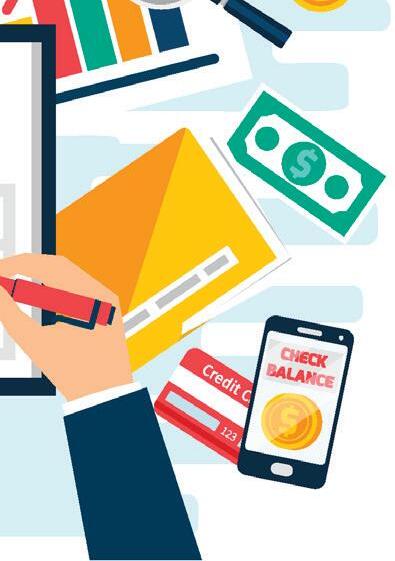
Tax time is upon us, and the pandemic may factor into your return.
BY KATY MACEK
Tax season is always stressful. Throw in a pandemic that has wreaked financial havoc on individuals and businesses and, well, financial experts are predicting filing taxes for 2020 will be a new beast.
Jennifer Damrow, who owns the Madison-based jewelry and rock company Exclusive Inspirations, LLC, knows this has been a crazy year. As complicated as it’s been, though, she says the anxiety around tax filing is simple.
“The biggest impact is actually paying the taxes,” Damrow says. “Because [the IRS] still wants the same dollar amount and I have less money in general.”
Damrow is not alone in that feeling, says Louisa Else, CPA, a tax practice leader with Fine Point Consulting in Madison. Else breaks down what to expect when filing your 2020 taxes.
Unemployment
Else predicts this will likely impact many Wisconsinites at tax time, as the state and country saw record levels of unemployment in 2020 due to the coronavirus. In Wisconsin, the unemployment rate reached an all-time high of 13.6% percent in April 2020, a staggering 10.3% percent jump from April 2019.
“That’s a big one to think about if you haven’t been unemployed before,” Else says. “Because [unemployment benefits are] taxable income, so be prepared to account for that.”
For those that chose not to withhold taxes out of their unemployment benefits due to financial need at the time — and Else expects many did — that income is included on a 1099-G form as unemployment wages and sent to you. When taxes
are filed, your tax return (if you get one) could be lessened because taxes are taken out at that time.
Those who typically take the standard deduction rather than an itemized deduction normally wouldn’t receive a tax benefit from charitable contributions, which is one difference this year.
The CARES Act is allowing people to deduct up to $300 in charitable contributions.
“The only caveat to that is it has to be cash — it can’t be $200 worth of clothes you donated to Goodwill,” says Else.
Donations need to have gone to a qualified nonprofit, and a list of qualifications can be found on the IRS website.
Expenses paid with the CARES Act’s Paycheck Protection Program loans are fully deductible on federal taxes. At the time of publication, however, that deduction isn’t applicable to Wisconsin state taxes — though lawmakers have drafted legislation to change this. If it doesn’t change, Wisconsin business owners would have to add back those expenses in their state returns.
“This is a trend we’re seeing in a number of states right now,” Else says. “I would hope it goes through and this becomes a nonissue, but, of course, there is no guarantee.”
The December 2020 stimulus package included an Employee Retention Credit, meaning businesses should maximize those funds when taking those deductions.
“For example, you can strategically assign $100,000 in rent paid with PPP funds, and another $50,000 of salaries for the ERC,” Else says.
For Damrow and her husband, their jewelry business had thrived off trade shows prior to 2020 — but then the pandemic curtailed all of that. Fortunately, they were able to pivot online, and tax planning for the business became “a centerpoint” of everything they did.
Not traveling for work saved money, Damrow says. However, in order to meet their business deductions, she said they had to find another place to put those funds.
“Our deductions were falling really far below what they usually are,” Damrow says. “It’s a balancing act — we can’t not pay our mortgage, but we have to spend money on the business.”
She’s had more conversations — and questions — with her CPA than ever before, but the planning paid off. They decided to invest those funds into organizing and equipment to improve their business.
Else’s final piece of advice: 2020 is over. Take stock, learn and prepare for 2021 — which she expects will be just as complex.
“The more you can start thinking about how you want to plan out multiple years in advance, the more that planning is going to help you,” she says.
Katy Macek is a copywriter and freelance journalist who enjoys hearing about her community through the stories she gets to tell.


Financial Advisor Beth Norman of RBC Wealth Management explains how you can invest based on your social and environmental values.
Consumers often speak with their dollars. Some focus on purchasing organic food or sustainable clothing brands. Others try to shop locally or support companies that have a history of paying employees a fair wage.
This idea can be extended to your investment portfolio through responsible investing. Simply put, the goal is to do “well” financially while doing “good” and contributing to a more sustainable society.
One of the most popular forms of responsible investing is ESG — an Environmental, Social and Governance criteria that is used to analyze investments beyond profit-making.
In other words, when you buy stock in a company, the power of active ownership can help create long-lasting change on a variety of issues, such as diversity, environmental protection and human rights. Investors have a seat at the table to collaborate with and influence policymakers.
Let’s break down each piece of ESG.
Environmental criteria can include things like the energy footprint of a company, waste management, the sustainability of transportation of goods, water supply issues or climate change strategy.
Social factors include things like consumer rights, labor conditions and the health and safety of all stakeholders — including employees, customers and communities where companies are located. Right now, many companies are laser-focused on their social impact. This could mean improving practices around employee diversity and inclusion and rethinking employee health and safety policies.
Governance refers to how a company is managed from the top down. How diverse is the board of directors? How is executive compensation structured, and does it incentivize long-term, positive policies? Are there any conflicts of interest that need to be addressed?
If you want to start the process of aligning your investments with
your personal values, there are a number of mutual funds and exchange traded funds (ETFs) that are managed with ESG criteria in mind. If you look up a fund on the company’s website and it doesn’t state that it is managed with an ESG mandate, then you can assume it probably isn’t. ESG isn’t just about buying clean energy companies and electric cars. It’s about investing in many different areas of the economy with the companies that are the best actors on ESG factors in that industry. If you are interested in building an investment plan that reflects your personal values or incorporates ESG factors, you can certainly research your existing funds or speak with a financial advisor that has expertise in socially responsible investing.
Due diligence processes do not assure a profit or protect against loss. Like any type of investing, ESG investing involves risks, including possible loss of principal.
RBC Wealth Management , a division of RBC Capital Markets, LLC, Member NYSE/FINRA/SIPC.
BROUGHT TO YOU BY:

By Sue Sveum
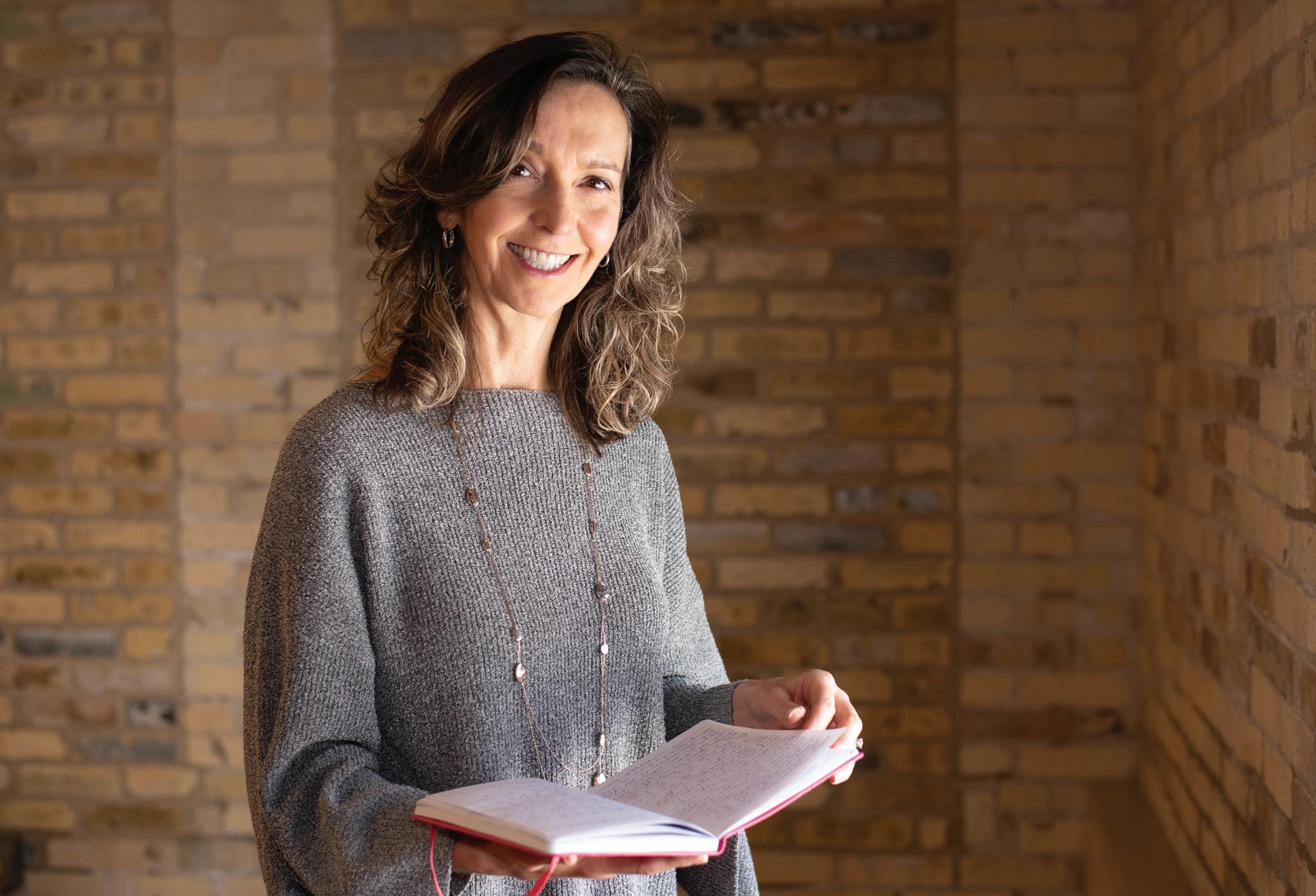
Narratives about breast cancer often revolve around the diagnosis and treatment. It’s rare we hear about the after effects of the disease. SSM Health surgeon Susan Charboneau, MD, and breast cancer survivor Jacy Allen-Boldebuck talk about what happens after breast cancer treatment — and how to adjust to a new normal.
Social worker Jacy Allen-Boldebuck was very familiar with breast cancer. Her mother and sister are both survivors, so she’s always gotten regular mammograms. “I discovered you can do everything right and still get cancer,” she says, describing her reaction to a Saturday morning call from her doctor. “When I saw her number I thought, ‘this is going to change things for me forever.’”
And she was right. “Your brain kicks into survival mode,” she says. “Luckily, my doctor and SSM Health were very fast and caring.”
Allen-Boldebuck had a needle biopsy followed by surgery and 20 radiation treatments. “It was a strange, allconsuming journey,” she recalls, but
her SSM Health team went above and beyond to make her feel informed and cared for.
From the very beginning of the process, Allen-Boldebuck says her care team at SSM Health were positive and straight forward, warm and attentive to every detail.
After surgery, her surgeon, Dr. Susan Charboneau, would call her personally with results and updates. “I loved and trusted her,” AllenBoldebuck says.
Dr. Charboneau says the cancer treatment journey can be harrowing and patients often express a sigh of relief after each phase. “I try to offer support and reassurance, hoping to empower them and alleviate their fears.”
After Allen-Boldebuck’s treatment ended, she says she experienced physical side effects including fatigue, burning and discoloration from the radiation, and a painful hematoma from the biopsy. But it’s the emotional effects that she believes hits people the hardest.
Depression and even PTSD (posttraumatic stress disorder) are common after cancer treatment, but Allen-Boldebuck says she mostly experienced anxiety and trouble sleeping. “It’s hard to return to the life you had before cancer,” she says.
“You have to choose to replace it with something better, so you don’t feel like your life was taken from you,” she adds. “You can’t just let go and

move on. Before each mammogram, I now have to reassure myself the odds are in my favor.”
Dr. Charboneau understands. “After treatment, there’ll always be the worry of recurrence which comes with living with cancer,” she explains. “But hopefully as time passes, the focus shifts to resuming a fulfilling life.”
“Be conscientious of your feelings,” advises Allen-Boldebuck. “Take something from the experience that made you feel better and continue doing it — meditate, go for a run, enjoy eating healthier.”
Dr. Charboneau concurs, adding, “There’s growing evidence that adhering to a healthy diet, and maintaining a healthy weight and active lifestyle with regular exercise are all important.”
And getting back to a sense of normalcy is also important, according to Allen-Boldebuck. “I’ve always had high energy and a strong sense of self, and those were gone for a while,” she
says. “So, I rated my anxiety from 1-10 each day and kept a daily journal.” She’s also found a sense of comfort and wellbeing from starting her day with calming meditation. “It’s part of my routine now, like brushing my teeth,” she laughs.
And don’t be afraid to accept support. “I had great support from my family, my friends and my church,” says Allen-Boldebuck. “I discovered women that I’d had no idea were breast cancer survivors who reached out to me.”
Family and friends are vital for support, says Dr. Charboneau, but there are also organizations, like Gilda’s Club and After Breast Cancer Diagnosis (a mentorship-based organization), that can help provide a sense of connection.
“There are definitely gifts from surviving cancer that are worth having,” Allen-Boldebuck says. “Things seem more precious now. This has been a reminder of how much I love my life.”


Community Pharmacy has natural remedies that alleviate many post-cancer symptoms and effects.

After completing cancer treatments, many people experience relief, but also anxiety or depression. Some also have trouble sleeping or have pain from scars or radiation burns. But there are holistic alternatives.
“We understand that many [men and] women still have fear and anxiety that lingers there after treatment,” says Jackie Nikolaus of Community Pharmacy. In her 35 years of working at the cooperatively-run pharmacy, she’s learned a lot about remedies of all kinds for post-cancer patients.
For anxiety, Nikolaus recommends herbal supplements such as the passion flower (which also helps to uplift mood), Albizia (also known in Chinese Medicine as the happy tree), B-complex vitamins and magnesium.
She also suggests Kava Kava to relax the mind as well as body, and lemon balm, which is a common plant of the mint family. “It’s an amazing nervous system tonic,” she says, “and because it tastes so good, it’s easy to take in any form — even tea.”
Adaptagenic herbs can strengthen the immune and nervous systems. Ashwagandha is great for adrenal support and keeping the body’s system in balance. Holy basil can have a calming effect and can also lower cortisol levels.
For sleep, Nikolaus recommends magnesium or CBD before bed. “Another of my favorites is California poppy,” she says, “It’s great for shutting down your mind at night.” But be aware — although it’s safe and nonaddictive, it may appear on a drug test.
Radiation burns and scarring are another common problem that respond well to natural remedies. “St. John’s Wort oil is effective by itself or in many healing salves,” says Nikolaus, “or look for calendula, comfrey and rosehip seed oil to promote healing.”

And for overall wellbeing, Nikolaus suggests essential oils or aromatherapy, especially lavender.
Community Pharmacy has a wide range of products, from from wearable oils and natural bath products to tabletop diffusers. —SS
It’s always wise to consult with your practitioner before taking natural remedies. Community Pharmacy’s staff and pharmacists are available to help check for potential drug interactions.
Go bold at home with a vibrant, can’t-miss-it palette of rich colors, wild patterns and a little shine.
PRODUCT CURATED BY SILVER LEAF INTERIORS
PHOTOGRAPHY BY SHANNA WOLF

Kelly Blanchar, lead designer at Silver Leaf Interiors, is ready for the next home décor wave: maximalism. The pandemic prompted this push, with many of us decluttering and saving only cherished items. “We are sharing our culture, our stories — and we long for travel and adventure,” says Blanchar. “An easy way to introduce maximalism into your home is to add wallpaper that speaks to you from a past travel experience, reminds us of a moment in time that is treasured or a special person in our lives; choosing an unexpected color and texture for an accent chair; or peppering in a mix of pillows and rugs with bold patterns.”
Kelly Blanchar, lead designer with Silver Leaf Interiors, shares what’s hot in interiors.

CR Laine Brinkley chair in Sable finish and Labyrinth fabric, crlaine.com

CR Laine Charm chair, crlaine.com

Sunpan Bow Lounge chair in Deep Green Sky fabric, sunpan.com


John-Richard Asymmetrical Azure bowls and John-Richard Faux Azurite table lamp, johnrichard.com

Four Hands Shadow Box end table, fourhands.com


Accent Décor Bellini vases, accentdecor.com; John-Richard Pomegranate table lamp, johnrichard.com

Arteriors Kelsie side table, arteriorshome.com
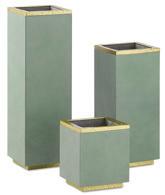

Currey & Company Mendocina green container set, curreyandcompany.com; John-Richard Emerald Green Etched glass table lamp, johnrichard.com.

John-Richard Cordes chest, johnrichard.com
Maximalism is on the cusp. This concept is the use of bold color, patterns and curated collections in the same space (see left and previous page). “We are seeing this design trend in wallpapers and fabrics and are starting to layer this into our designs. Many in the Midwest will embrace this more cautiously as they become comfortable with using color again, while others are so ready for this change.”
Color is trending. “The idea that color is back is exciting! Deep color saturation in blues, fuchsias and greens is fresh, and a look that can easily be layered into our homes with the right balance.”
Farmhouse is fading. “Don’t get us wrong — we love the modern farmhouse look. However, a design trend tends to last 7-10 years, and we are there with modern farmhouse.”
The pandemic influenced interiors. “The one word I keep hearing is cozy. How we use our homes has changed so drastically with the pandemic. Time spent at home is now more than just eating and sleeping — it’s become a place to work, attend school and exercise. During all of this, it’s also been about clearing out, removing clutter, tossing and donating, while maintaining a neutral and calm color palette. Now clients are looking to make their home feel lived-in again.”
Color is personal. “Color is never ‘out’ — it just reinvents itself! Design is constantly evolving, and getting to know our clients, their home and comfort level with color is how we shape the designs we present. Color is a very personal choice, and while you can love the color in a print or at a friend’s house, it doesn’t mean the same look will be comfortable for you to live in.”
However, if you’re ready to move past the “calm” and enliven your spaces with energy, maximalism is a great way to do so, she says.
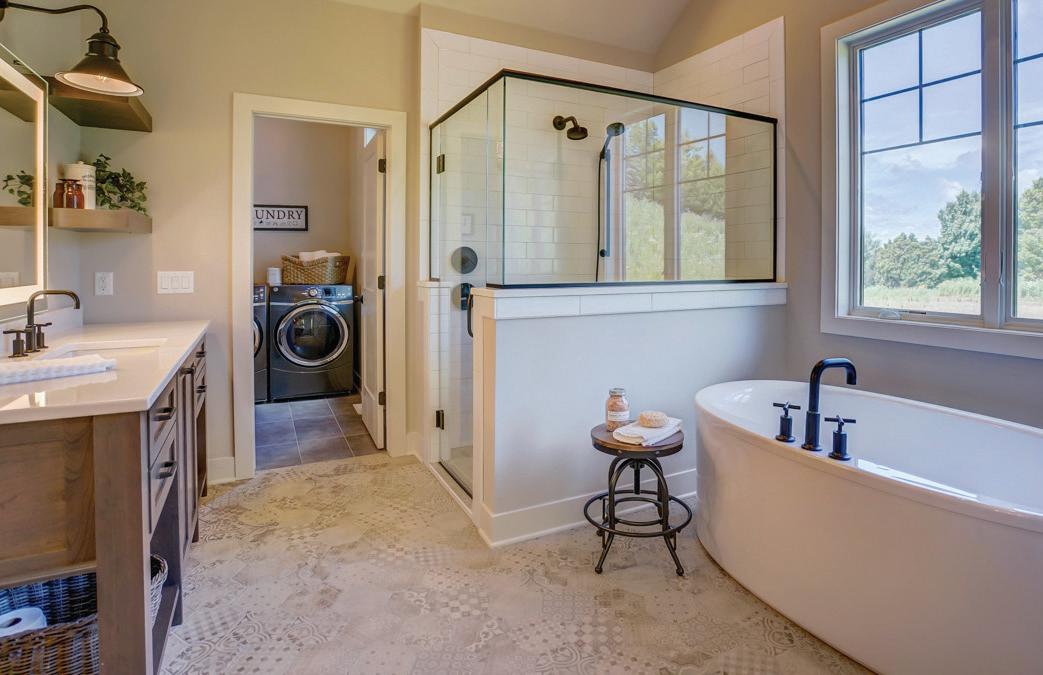


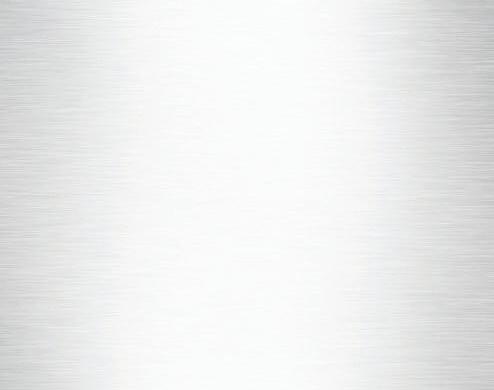






Cut down on throwaway products in your day-to-day with these sturdy, cool items that replace single-use options.
STYLING BY SHAYNA MACE | PHOTOGRAPHY BY SHANNA WOLF
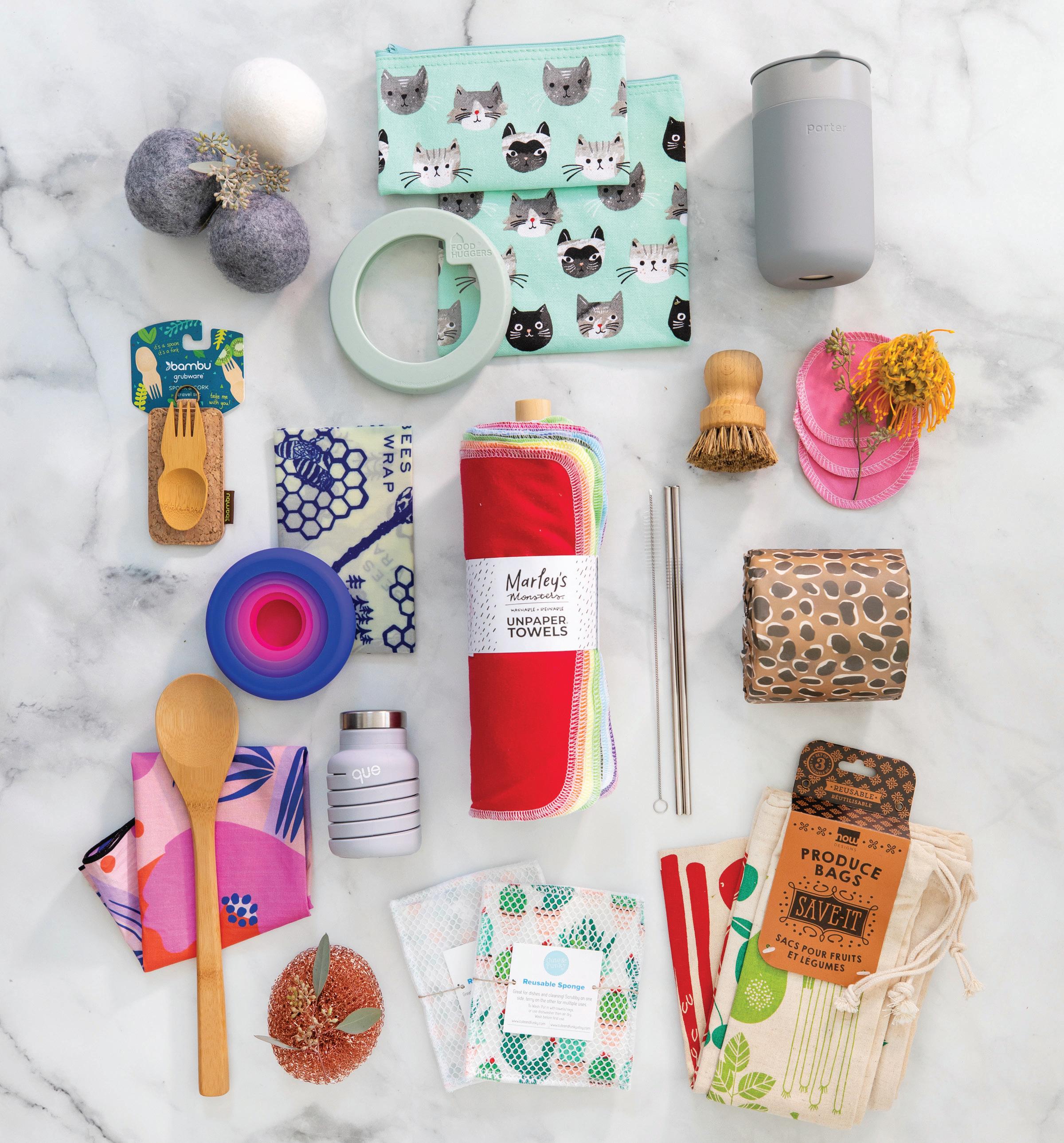
(Clockwise from top left) Wool dryer balls, $8 each, and Food Hugger extra small silicone glass bowl lid, $14.99, both from Green Life Trading Co.; Now Designs reusable cat snack bags (set of 2), $14, The Century House; Porter To-Go mug, $30, Hazel General Store; Cute & Funky reusable cotton rounds (set of 20), $15, scrub brush, $6.50, and bamboo toilet paper, $1.60, all from Green Life Trading Co.; Kikkerland stainless steel straws (set of 10), $9.50, The Century House; Now Designs produce bags (set of 3), $14.95, Orange Tree Imports; Cute & Funky reusable sponges, $8 each, Marley’s Monsters reusable paper towels (set of 24, includes stand), $84.99; Redecker copper cleaner (set of 2), $6.95, bamboo spoon, $5.49, 50 cm by 50 cm reusable wrapping cloth, $12, Que small collapsible silicone water bottle, $19.95, Food Huggers reusable silicone food savers (set of 5), $12.99, and bambu travel spork and cork set, $11.99, all from Green Life Trading Co.; and Bee’s Wrap washable, reusable food wraps (set of 3), $18.95, Orange Tree Imports



Dr. Wendy Jin, pediatrician for UnityPoint Health— Meriter Hospital, offers calming techniques that work for adults and children alike.
2. Add a spoonful of glitter glue (or glue and dry glitter) to the jar.
3. Shake to make the glitter swirl.
Families have been under an enormous amount of pressure these days.
Even though emotional challenges for youth were a growing concern prior to the pandemic, I've see a dramatic rise in mental health visits for children this past year.
We tend to overwhelm ourselves with multitasking and multi-thinking, which can spiral into a pattern of worry, self-defeating behaviors and eventually feelings of overwhelm. Mindfulness practices are an increasingly popular antidote to this distracted way of living. These practices can help kids and adults manage stress, pain and frustrations, as well as improve concentration, impulse control and self-esteem. So, where do we start?
Calm Your Mind and Thoughts with the Glitter Jar
Instructions:
1. Find a clear jar (like a Mason jar) and fill it to the top with water.
The jar is like your mind, and the glitter represents your thoughts and feelings. When we swirl the glitter around, it’s just like when you feel upset or excited about something. For example, if you get into an argument with your sibling, swirl the jar, or you find out some good news, shake the jar. Now, watch what happens. See how the glitter settles and the water clears? Your mind works the same way. There is no way to rush this because we can’t push the glitter down to the bottom. When our emotions settle, we feel calm and can see things much clearer.
To calm the churning of overwhelming thoughts and feelings, stop and find:
• 5 objects you can see right now.
• 4 objects you can feel or touch right now.
• 3 things you can hear right now.
• 2 things you can smell right now.
• 1 thing you can taste right now.
1. Sit or lie down comfortably. Let your body relax and close your eyes.
2. Take two to three big, gentle breaths. Feel the air move through the nose and out through the mouth. Place a hand on your belly and feel it move up and down with each breath
3. Start your scan. Beginning at the top of the head, scan down slowly through each and every part of the body, all the way down to the toes. Exhale, and also relax each part before moving on to the next area.
4. Spend a few moments paying attention to your whole body.
— Dr. Wendy Jin, MD, MPH, FAAP, is a pediatrician at UnityPoint Health—Meriter Hospital.
Though it’s the third “R” — along with reducing and reusing — recycling is important for the planet. Keeping up on city guidelines is thinking globally by acting locally.
BY HOLLY MARLEY-HENSCHEN
Recycling is one of those noncontroversial issues that we can all agree is a good idea — like donating to a great cause and buying local. As wonderful it is, recycling has its nuances. What remains elusive to many is which items can actually be recycled, particularly because recycling standards vary from city to city. For example, Madison accepts all-metal pots and pans, but Verona does not.
Wanting to recycle as many things as possible makes sense. Recycling extends the life of our household waste and may reduce our impact on the environment. At the same time, recycling can be complicated. Recycling guidelines at your workplace can be different than residential curbside standards.
Before digging into recycling, it’s important to remember that reducing and reusing can be an important precursor to recycling. Ideally, creating as little waste as possible is

the gold standard. That way, we’re using fewer resources to begin with. However, this isn’t always realistic in everyday life, so recycling is our second-best option.
To get the (not so) basics on recycling, we turned to Danielle Pellitteri, vice president of Pellitteri Waste Systems, a family-owned waste management business that’s operated in Madison since the 1940s. Pellitteri Waste Systems accepts curbside recycled materials from nearly 51,000 homes in Madison, Fitchburg, Sun Prairie, Waunakee and 25 other municipalities that are processed at their Kipp Street Materials Recovery Facility on the far east side of Madison.
For starters, Pellitteri says to look for packaging while shopping that’s more likely to be recycled. She recommends avoiding plastic packaging when possible. “Steel, aluminum, glass and cardboard are more recyclable than plastic,” she explains.
Buying products packaged in plastic is often unavoidable, though, and can be tricky, because there are so many different kinds, Pellitteri says. The most recyclable plastics are #1 and #2, particularly in the form of bottles and containers with lids. Plastics #3 through #7 are more difficult to recycle, though Pellitteri Waste Systems accepts them. Unnumbered plastic packaging and film that is placed in curbside recycling bins probably won’t be recycled, she says.
Remember when we said recycling was nuanced? Though we may think we know what’s recyclable, there’s one issue that Pellitteri Waste Systems encounters on a regular basis. It’s called “wishcycling,” also known as “aspirational recycling.” And it’s been on the rise in recent years.
“Wishcycling is when you put something in your recycling bin that you hope is recyclable and think should
be recyclable, but are not sure if it is,” Pellitteri says. About 20% of the recycling that comes through their facility ends up in the landfill, because it’s actually not recyclable. For perspective, 97 million pounds of mixed recyclables were sorted by Pellitteri Waste Systems in 2019.
“‘When in doubt, throw it out’ is a common slogan in many communities across the country to try to combat wishcycling,” Pellitteri says. Recycling the right way keeps operations running smoothly, avoiding hazardous circumstances for workers. For instance, sparks from electronics can cause a fire, or a loose plastic bag can

gum up machinery, causing machine shutdowns.
In general, when it comes to recycling rules, trust your local municipality’s information first.
“People will see national stories about recycling and think they apply to where they live. They do not. It’s a regional thing,” says Bryan Johnson, the City of Madison’s recycling coordinator. “We have really strong recycling mandates in Wisconsin that aren’t available in other states.”

1 2 4 3

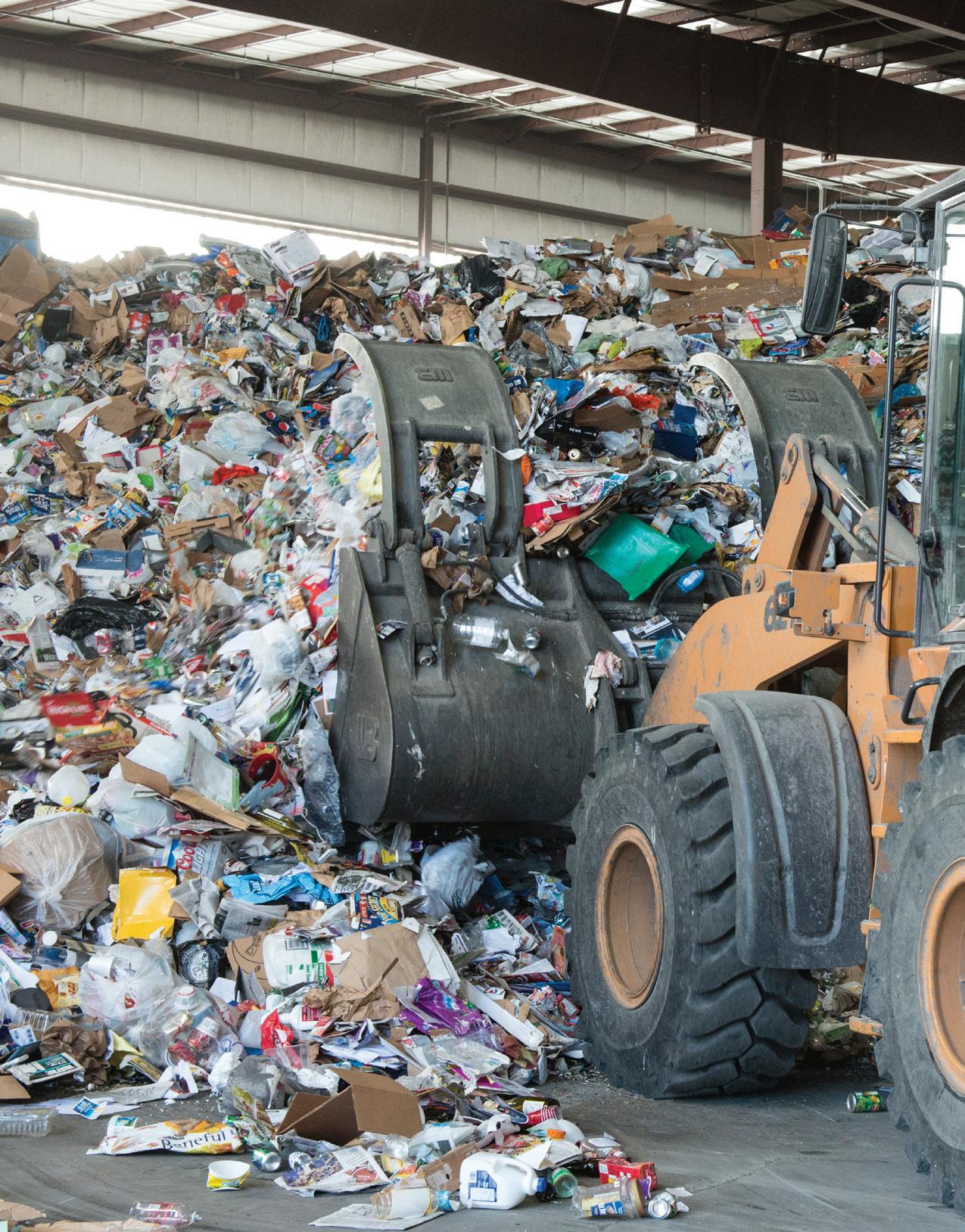


It is important to know what your specific recycling collector allows, as each sorting facility has specific materials they do and don’t accept.
– Danielle Pellitteri
1. If you live in Madison, Fitchburg, Waunakee, Sun Prairie or the 25 other municipalities Pellitteri serves, the sight of their garbage and recycling trucks is probably a familiar sight. But, our garbage and recycling doesn’t just disappear once it’s tossed in a bin and picked up by a these giant trucks.
2. When recyclables arrive at Pellitteri’s Kipp Street facility, the trucks unload material on to the tipping floor. Workers in front-loaders scoop up recyclables and load it into metering bins, which sorts the material initially and keeps the sorting equipment functioning properly, with a constant stream of recyclables.
3. Recyclables go up a conveyor belt and arrive at the presort station. Quality control workers remove unacceptable materials, like greasy pizza boxes and bags of garbage, at checks throughout the line. Materials continue to move through a single-stream system that carries the waste on a series of conveyor belts. Different materials are sorted by several methods. Waste runs over discs designed to let everything besides cardboard and paper fall through. To sort some plastics, the system shines rays of light at objects and reads how it’s reflected back. Other materials are hit with a shot of air that knocks them toward their appropriate sorting lines. Robotic arms use artificial intelligence to remove other types of plastic. Specialized magnets remove tin and aluminum.
4. The sorted materials are stored in bunkers until they’re compacted into large bales and sent to end users. Interestingly, much of the recycled goods from the greater Madison area stays in the region. Paper is shipped to
paper mills in Wisconsin or Indiana to be made into tissue paper. Cardboard goes to Indiana to be reshaped into cardboard boxes. No. 1 plastic water bottles are sent throughout the Midwest and made into new water bottles, carpet or clothing. Other plastics are made into new plastic products, such as lawn edging, drainage tile and plastic containers. Metals, including aluminum, steel and tin, are melted down at local facilities and made into new metal products. Glass goes to another facility to be sorted by color and used to make new glass bottles.
Recycling does make a difference, which is why it’s helpful to be as informed as possible so we can all do our part to make the processing of our recyclables smoother when they leave our homes, bound for the recycling facility.
“It is important to know what your specific recycling collector allows, as each sorting facility has specific materials they do and don’t accept,” Pellitteri says. “Additionally, the proper preparation of accepted recyclables can also vary.”
The information in this article pertains to curbside recycling for the 29 municipalities Pellitteri serves, including Madison, Fitchburg, Sun Prairie and Waunakee. Multi-family buildings that have shared waste receptacles may be collected by different companies with different standards. Often, there is a sticker with the basics of recycling rules on the receptacle. For more information, check the website of the company whose label is on the receptacle. For instance, Waste Management has a recycling guide (wm.com) as does Advanced Disposal (advanceddisposal.com).
Recycling items the right way is as crucial as the act itself. Soda bottles that aren’t empty and food containers that still have residue will be sent to the landfill, which is part of what led to China’s 2018 announcement that they would no longer purchase certain mixed paper and plastic recycling from the U.S., creating a conundrum for many facilities that relied on that market.
But don’t worry, this how-to guide will help make the process much more clear and straightforward.




Make sure the cardboard is clean. Remove plastic film and tape. Break down the box. Don’t put other recyclables in boxes, as they can fall out and contaminate the cardboard.
CARTONS and boxes of shelf-stable and refrigerated liquids: Rinse clean, dry and replace the cap.

PLASTIC JUGS & JARS

Rinse clean and dry before replacing the cap.
PLASTIC BOTTLES
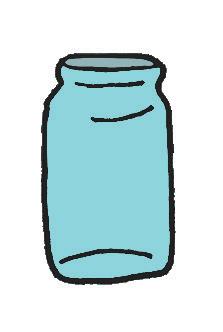

GLASS JARS
Empty, clean, dry and replace the lid.
WINE BOTTLES
Rinse and dry; remove aluminum before recycling.



Remove all liquid and food residue and replace the lid.
PLASTIC CUPS
Only cups that are #1, #2 and #5 plastic are recyclable. Look at the little triangle to determine the number.
SMALL METAL APPLIANCES that are no larger than a basketball: Remove any glass pieces.

Make sure the inside is clean. It’s OK to leave the label on. Put the lid inside and pinch the sides of the can together so equipment doesn’t think the lid is a piece of paper.
ALUMINUM CANS Make sure it’s free of liquids and put don’t flatten or crush it, or it will be treated like a piece of paper.
Place inside of a larger container like a tin can and crimp the edges closed so the items don’t fall out.
It’s preferred that you don’t bag your recyclables. If you must bag your recyclables, use a clear bag. Leave the bag open rather than tying it shut.
Don’t place smaller items inside larger containers., except for bottle caps and keys (referred to above under tin cans). It makes them hard to sort.
Keep the lid on your recycling cart closed so water and snow don’t contaminate the recyclables inside.
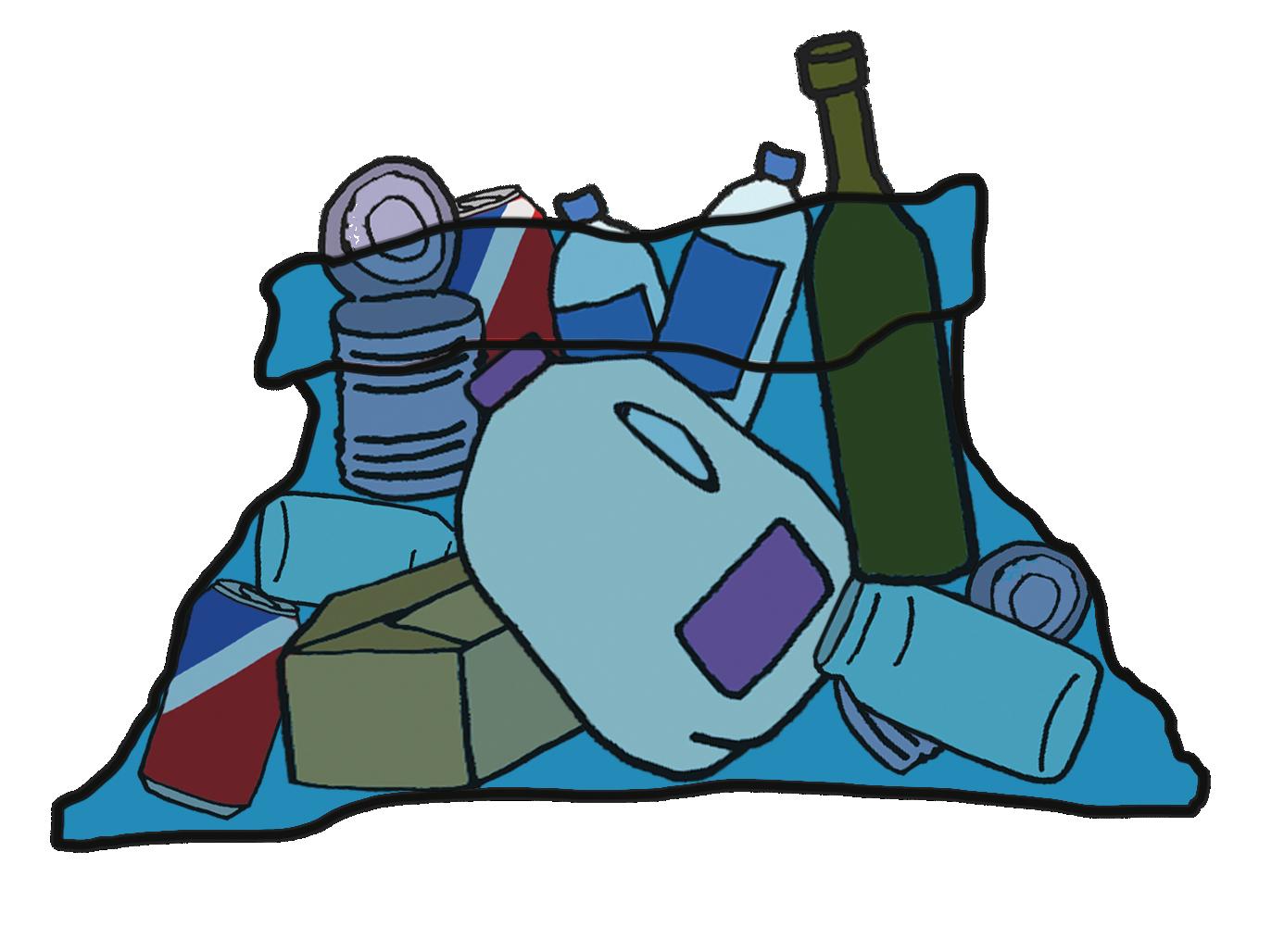
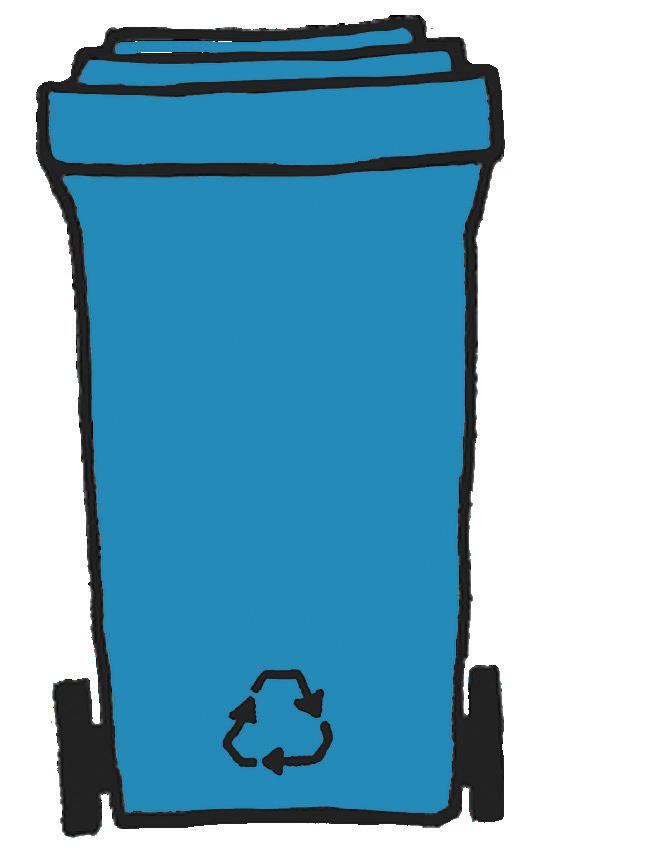
Wishcycling, or “aspirational recycling,” means placing an item in your recycling bin because you think (or hope) it can be recycled — but you’re not quite sure if it can be. Danielle Pellitteri of Pellitteri Waste Systems says these are the most frequently wishcycled items that they encounter. In other words, don’t recycle these items.
Recyclable containers with liquids or food residue (like pizza boxes)
Frozen food or microwave dinner plates, plastic film, plastic wrap or fishing line
Styrofoam and packing peanuts
Deli containers (except No.1 plastic)
Food
Batteries and electronics
Glassware and ceramics
Mirrors and windows
Carpet
Clothing and shoes
Diapers
Hoses and ropes
Motor oil and gasoline containers




Approximately 10,000 tons of food waste is collected by the City of Madison Streets division through curbside hauling, which ends up in the Dane County Landfill each year. Twenty percent of the annual total of all waste streams that come into this landfill is food waste — and it means a lot of food is being left on plates and going bad in fridges.
In January 2021, Madison was accepted into the Food Matters Regional Initiative Natural Resources Defense Council, a program that aims to cut food waste. Madison is part of the Great Lakes cohort, which also includes Chicago, Cinncinnati, Detroit and the Columbus, Ohio region. As part of the NRDC program, the city will also build on its decade of research and work locally in sustainably disposing of food waste, as well as glean insight into other regions’ food recycling programs.
Stacie Reece (below), Madison’s sustainability program coordinator, says the city’s first goal is to raise awareness the community on food waste and which foods are recyclable, because recycled food scraps can be used to make nutrient-rich topsoil and renewable energy sources. “The idea behind recycling food waste is that you can compost it … [and] get those nutrients back into the topsoil,” says Reece. “Instead of taking [food scraps] to a landfill and burying it and having [it produce] methane gas, [we can] turn it into a resource.” In Madison, fruits, vegetables, dairy products, coffee grounds, baked goods and pasta are all accepted in the food waste program.
Madison’s food scraps recycling program is scheduled to reopen April 5 at three city waste drop-off sites. Read more about the program at cityofmadison.com/streets/food-scraps.



Those that work in healthcare are more valuable than ever. They are front-line heroes every day during the COVID-19 pandemic. It might not be war in the typical sense, but they are fighting this deadly virus head-on while risking their health, too.
Pre-pandemic, no one could have predicted how vulnerable we could be, and it’s reminded us of what is truly important.
In Madison, healthcare provider Associated Physicians is reflecting on all of these changes as they celebrate their 75th anniversary, and it’s also been a time to realize how grateful they are that what is most important has remained the same.
Even as they’ve had to quickly pivot in response to the COVID-19 pandemic — now taking on the new challenge of streamlining the administration of vaccinations — Associated Physicians has enjoyed reconnecting with past and present patients and staff.
Over the last 75 years, Associated Physicians has maintained strong patientprovider relationships on a foundation of caring and listening. They also believe in the importance of being a resource to patients, supporting them to make the best choices for their own healthcare.
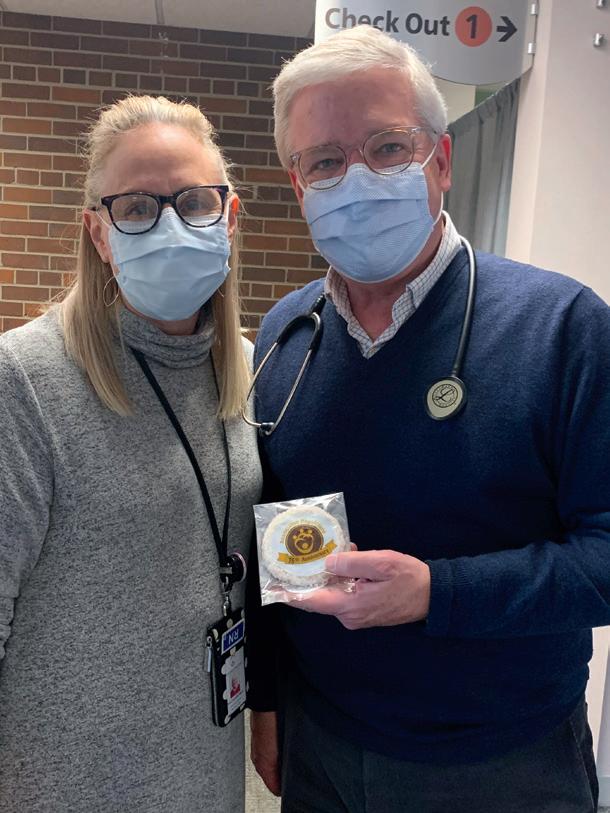
Patient feedback has confirmed this. Retired physician Dr. Thomas Ansfield shares the core values developed all of those years ago: to treat each patient like they are family. This starts with actively listening, taking the time to develop relationships and showing compassion. According to a patient, Abbey, she confirms this. “They really listen, and they know you!” she shares. Another patient, Harold, echoes, “At Associated Physicians, they take the time to get to know you as a person.”
“We want patients to feel supported, and to know that we have their backs,” says Executive Director Terri Carufel-Wert. “Through 75 years of growth, we have always embraced all walks of life and we have grown our workforce to reflect that. It started in the early days with hiring female providers. Now, it’s a sea of amazing and diverse faces that captures what our community is all about.”
Something that is unique to Associated Physicians is that they operate under an independent model that is different from many other healthcare providers. This means choices can be made quickly, in-house. “With many specialties and resources on-site, that independence gives us the ability to make the quickest, most effective decisions,” says CarufelWert. “We are able to involve doctors from any department to improve patient care. Because we are under one roof, our staff works closely as a team toward one common goal: our patient’s total health and well-being.”
A recent example is during the COVID-19 pandemic when the group saw an increased need for mental health support for their patients and community. Associated Physicians responded by making the decision to add behavioral health provider Gil Roth, LCSW, SAC to their team, who specializes in adolescent and adult care, to better assist patients through this difficult time.
“There’s nothing like being able to practice medicine the way we want, while helping our patients, community and staff along the way. We’re a family, and we treat our patients as a part of that family,” says Carufel-Wert. “Our staff gets to know patients, and we develop a bond with them. Part of the family sense of the clinic is knowing that we are always there for each other. Even during the difficulty of the COVID-19 crisis, we lift each other up.”
Associated Physicians looks forward to providing healthcare to the Madison area for generations to come.
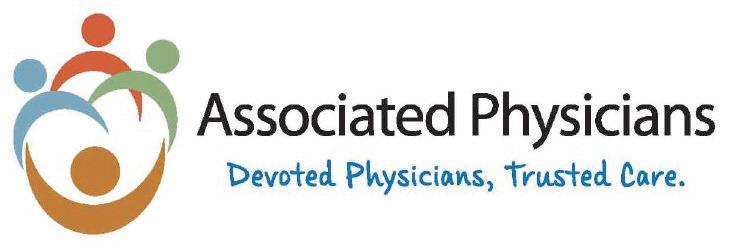
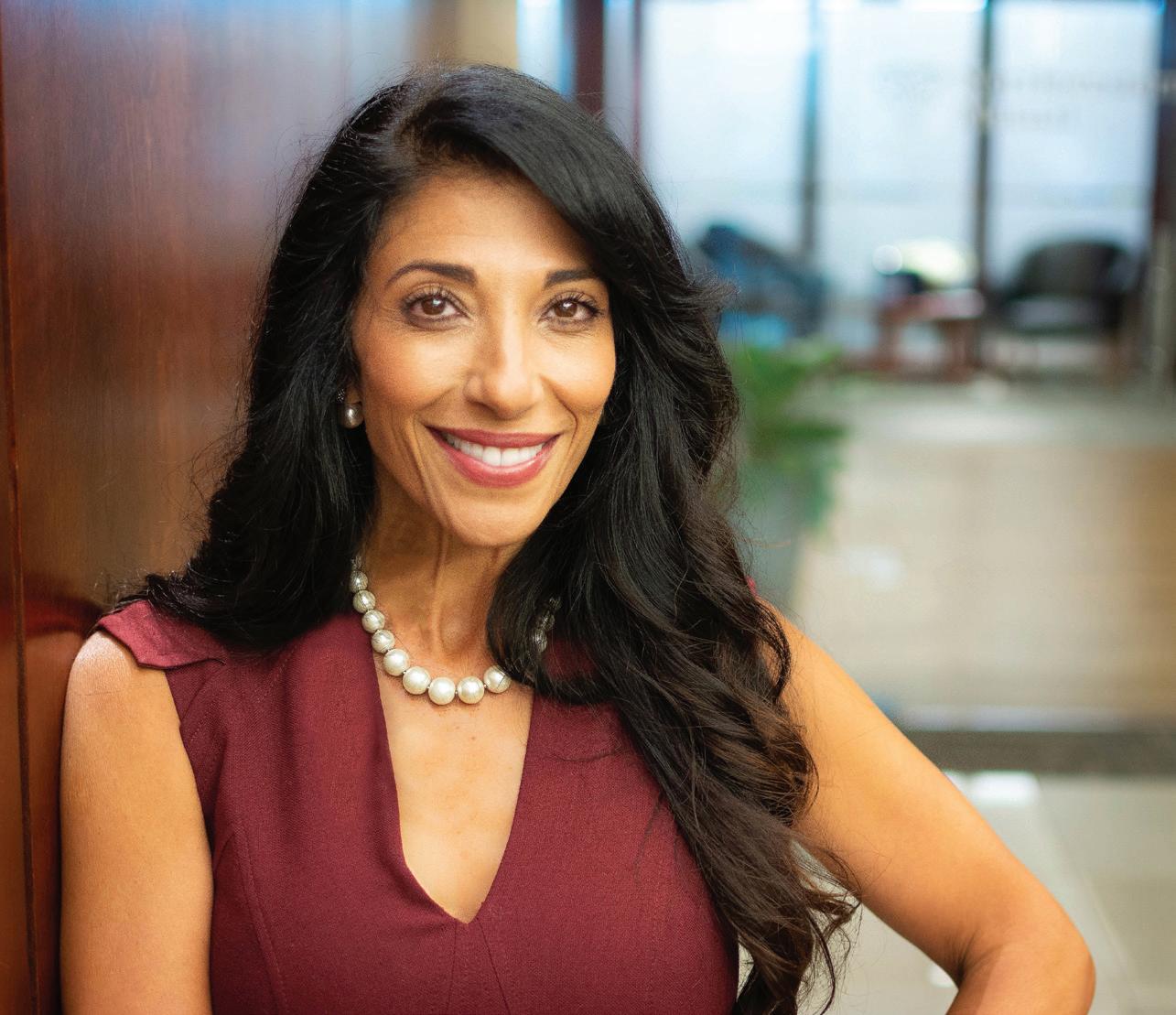
By Joanna G. Burish
What is a financial plan and when is the right time to plan yours? Most resources on this topic start with “know your budget,” or, “how much do you make, and how much can you save?” Yes, these aspects are part of the plan, but they’re not where one should start.
My advice is to start financial planning today as the longer you wait, the more costly it can be as you age, and you may pay more in taxes overall than without a plan.
When I work with my clients, I encourage them to make smaller, wise decisions today, rather than waiting and having to make big decisions later. A financial plan is a helpful tool to track your progress, and keeps your emotions grounded and not reactive when the market becomes volatile. Your plan is not meant to be static — it changes as life changes. It is to be reevaluated after life milestones, such as getting married, having a baby, starting a new job or losing someone you love. A great holistic financial advisor will help you build this comprehensive plan today, and work with you when it needs to be updated.

Contact Joanna Burish directly at 608-658-3482 or Joanna.burish@nm.com
joannaburish.nm.com/areas-of-expertise.htm linkedin.com/in/joannaburish
The Brauds Network – Founder, Coach, COI thebrauds.com
1. Ask yourself: How do you want to live your life in the next three years personally, professionally, and financially? Three years is far enough to set impactful goals, yet short enough to be agile as life changes. We start here because all other decisions and planning actions will come from these goals.
2. Take inventory of all of your assets. This includes your income, savings capacity, retirement accounts, investments, home, any personal assets and your cash value life insurance.
3. Know your budget. Factor in current monthly expenses, as well as saving for long-term goals. Below is a formula my clients love, the 50/30/20 budgeting model. It breaks down your take-home pay like this:
a. 50% is for fixed costs — mortgage/rent, utilities, groceries, transportation, home, term life and disability insurance.
b. 30% is for lifestyle expenses (variable expenses) — dining out, travel, shopping and hobbies.
c. 20% is for your future retirement accounts and lifestyle protection like cash value life insurance.
4. Debt reduction. Restructure good debt versus bad debt where you can, as every penny counts. What debt should you pay off prior to creating an emergency fund or investing?
5. Understand how to protect your lifestyle. Plan for what you want, as well as the unexpected. If you’d like to learn how these strategies can work for your specific planning, or if you’re curious about a second opinion, my team and I are happy to coach you on what that looks like for you, your family, and business.
6. Plan for retirement today — don’t wait!
a. Retirement savings need to be a priority today versus an afterthought. If you can, allot 15-20% of your income to go toward retirement savings, or, budget for this level over time. Knowing how to build your holistic plan around this percentage will be the key to securing your future versus potentially running out of money when you need it most.
b. Understand your risk tolerance. If you’d like to learn what yours is, email me for our Investor Profile analysis.
c. Key goals: Include tax mindfulness, diversification and lifestyle protection so you can enjoy your retirement without worrying about running out of money, or not being tax efficient. These are only a couple of topics to consider among others.
To learn what your key goals are and the specific tools to integrate into your financial security and retirement strategy, connect with me and my team. We’re here to help!
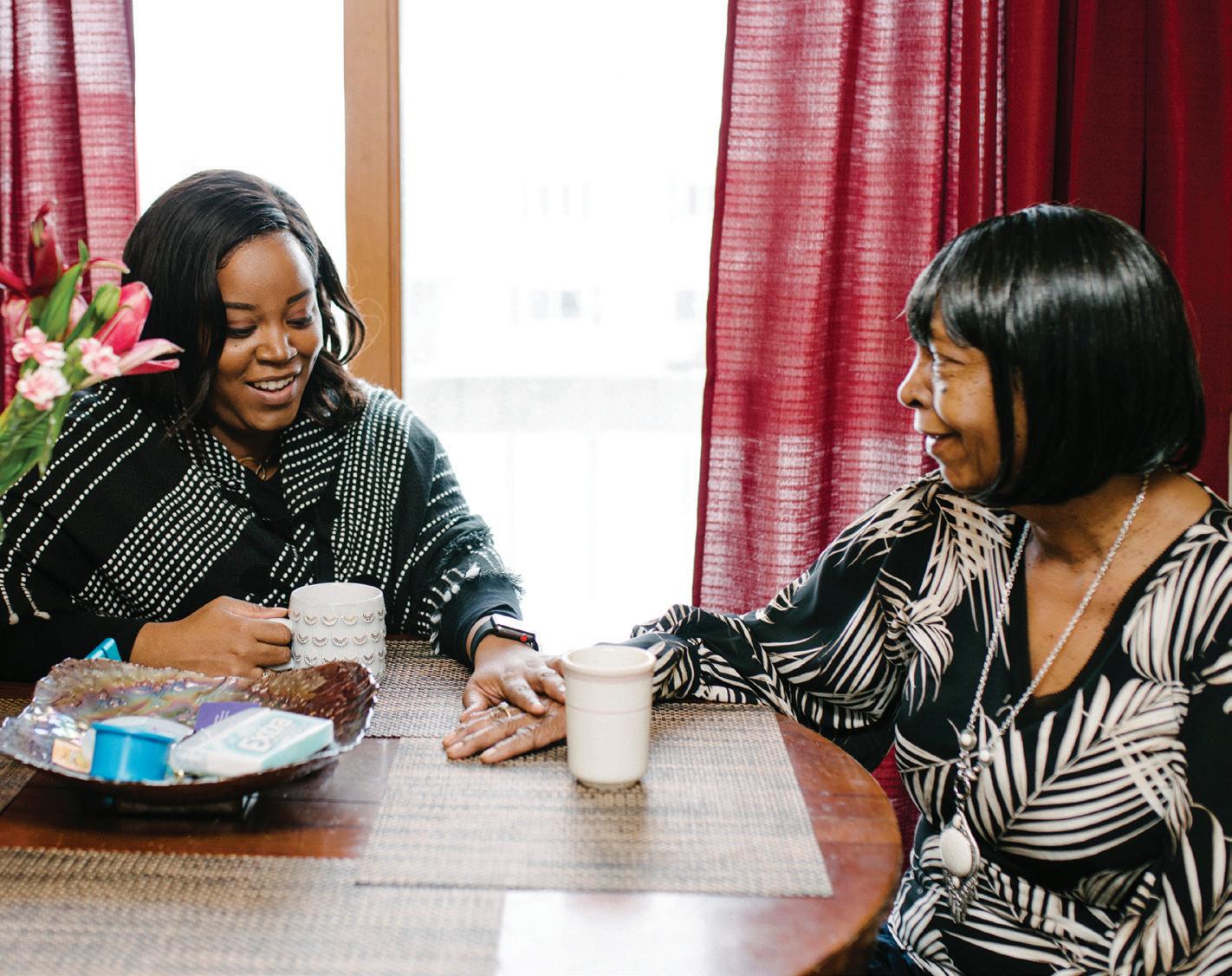

Being a caregiver for an older relative is one of the most important jobs we’ll ever have. Here’s what to consider if you have to step into this role.
BY HANNAH WENTE PHOTOGRAPHY BY HILLARY SCHAVE
IT’S AN INESCAPABLE FACT OF LIFE:
WE ALL AGE. We hope that we’ll be able to take care of ourselves forever, but it’s inevitable that the majority of us will need some varying degree of help with daily tasks as we get older, whether it’s housework, running errands or maintaining our finances. Until then, many of us (the vast majority of which are women) are tasked with caregiving for our own loved ones as they age.
According to a 2020 report by the National Alliance for Caregiving and AARP, nearly 42 million U.S. adults provided unpaid caregiving services to adults 50 years and older, most of which (89%) were relatives. In Wisconsin, there are 578,000
caregivers (according to a 2013 Respite Care Association of Wisconsin report, the latest available). It’s estimated that families provide 80% of all care for an average of four years, according to the Wisconsin Family and Caregiver Support Alliance.
Since the pandemic, more families in the U.S are choosing to cohabitate in order to care for an aging family member (a common practice in other countries), according to Jennifer Fischer, director of the Aging & Disability Resource Center of Dane County.
“You don’t have to live with someone to be a caregiver,” she says. “You still have that stress and feeling of being responsible.”
Whether a family lives together or on
opposite sides of the country, Fischer says having those important conversations about where a family member should go if they can’t live independently anymore are crucial.
“The decisions you make during a crisis are not the same as if you had time to sit down and make a plan,” she says.
If this scenario comes up for your family, case managers are available at senior centers to help you. And, if you end up needing to provide caregiving services to a family member, you’ll want to consider the following:
• First of all, discuss your relative’s wishes as they age — what do they envision? What setting would they ideally want to live in? How will this impact the entire family?
• If an older family member needs to move in with you, what accommodations would you need to provide within your home to make it accessible for them? For example, they may need a zero-entry shower, grab bars or a bedroom on the main floor.
• Will your work schedule allow flexibility for you to be home or check on your family memer frequently?
• Talk with your siblings, extended family and family friends about how to split caregiving duties to cover vacations and self-care time.
“We’ve all gone through family caregiving issues,” says Cheryl Batterman, manager of the Dane County Area Agency on Aging (AAA). “If you’re not a caregiver now, you will be a caregiver in the future. The hardest part is to identify that you are a caregiver.”
Being a caregiver doesn’t mean you have to go it alone. Many agencies, such as the ADRC and AAA, support family caregivers so they don’t experience burnout, and also help retain the dignity of care recipients.
Lisa Schneider, co-chair of the Wisconsin Family and Caregiver Support Alliance and the Executive Director of the Respite Care Association of Wisconsin, says family caregivers often seek in-home care to help with lifting, transfers, bathing and grooming, and transportation to medical appointments.
However, many are hesitant to accept services. A 2016 survey of 500 Wisconsin caregivers found that 93% of caregivers worried the quality of support would go down for a loved one if they were not there.
“Caregivers are the last ones to ever ask for help,” Schneider says, “because there’s guilt connected to that.”
Not feeling alone is important. We talked to three Madison-area caregivers about their experiences caring for older family members, and the challenges and joys that this oh-so-important role allows them.

ZOLONDA EUBANKS , 61, was living with her two kids years ago when her mom (who asked to not be named) moved in.
After Eubanks’ mom retired, she moved back to her hometown of Birmingham, Alabama, but it wasn’t long before she returned back to Madison to live with Eubanks, due to health reasons.
“I have family members in denial that she needs care,” Eubanks says. “The only time they’ve ever seen her is when she’s ‘mom.’”
She recommends that others with aging parents get support and family buy-in early on.
“I did not realize that I would not have the support of my siblings except for my sister,” she says. “If we were all in this together, it would be an easier journey for all of us. I would never advise anybody to try and take it all on by themselves; it’s near impossible.”
As medications are adjusted and health issues arise for both Eubanks and her mother, every
THE AGING & DISABILITY RESOURCE CENTER (ADRC) OF DANE COUNTY is a one-stop resource for all aging-related needs and planning. ADRC social workers provide case management at area senior centers and can even facilitate family meetings. Spanish, Hmong (through The Hmong Institute) and interpreter services for all other languages is available. daneadrc.org
NEWBRIDGE has three locations in Madison and provides inhome needs assessments for older adults, case management and home chore support. In non-COVID times, they provide weekly meals and socialization. newbridgemadison.org
day is new and challenging. She often puts her own care on the back-burner.
“I have congestive heart failure, and I’m trying to get my diabetes under control,” she says. “But I live under stress every day.”
Caregiving during COVID-19 has provided even more challenges.
“This past year has been such a big challenge,” says Eubanks. Prior to the pandemic, her mom would attend exercise class twice a week, but now she says, “I can count on one hand the number of times she has left the house.”
Eubanks is a budget and policy analyst for the State of Wisconsin and says going into the office a few days a week is therapeutic. She’s grateful for coworkers and supervisors who understand her caregiving situation and give her the flexibility to handle issues as they arise.
“I am going to do this ’til the day she dies or I die,” she says, because she wants to be close to her mother until the end.
RESPITE CARE ASSOCIATION OF WISCONSIN (RCAW) supports family caregivers who are caring for loved ones across the lifespan. They recruit and train respite care workers and offer grants that pay for respite and other services that provide relief to family caregivers, such as hiring out snow shoveling and lawn care, or minor home adaptations. respitecarewi.org


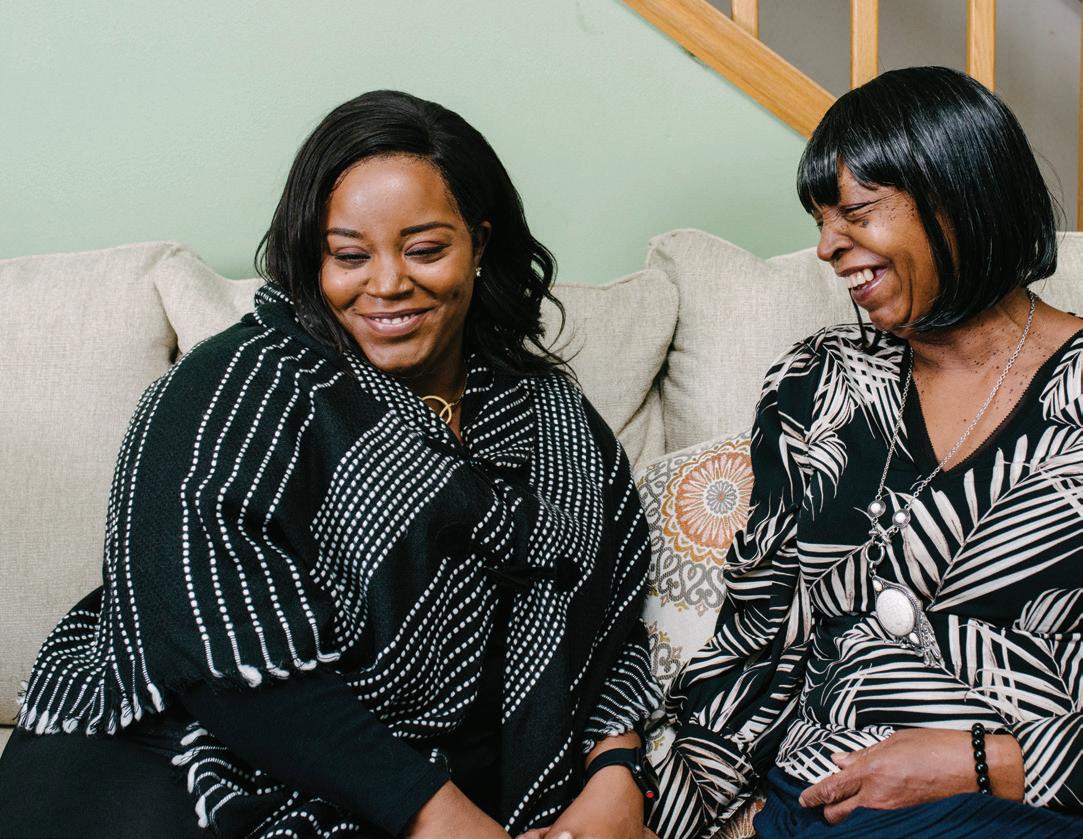
QYTINA TRIPLETT was in high school when she knew she wanted to work in healthcare. Today, the 38-year-old shares caregiving responsibilities for her father, Terry Triplett, with her mother, Shirley Triplett. Caregiving is something she was eased into when her mom was caring for her mother (Triplett’s grandmother) and her nieces. She’s thankful that a previous job as a resident assistant taught her skills to manage many of her dad’s medical issues at home.
“It’s a known fact that you take care of your loved ones,” says Triplett. “I know I get a lot of flack from a lot of people, like ‘you just can’t catch a break.’ But it is an absolute pleasure to take care of the people you love.”
When COVID-19 hit last spring, Triplett lost her job in customer service. She also put pursuing her bachelor’s degree in healthcare management and business at Concordia University on hold to help her mom provide care for her dad.
“As an only child, I knew that I would eventually be in this role,” Triplett says. “It has had very scary moments and frustration, because sometimes you just don’t know what to do, and you’re scared. You’re watching them change, and you don’t necessarily know what to do in that moment. But I’m so grateful to have worked in the places that I have worked, to see the changes. Being a resident assistant, working for a durable medical equipment company ... I think everything has worked full circle.”
AREA AGENCY ON AGING (AAA) administers caregiver grants of up to $1,200 per year for families to try out weekly adult day care, grooming/bathing support, home modifications or respite care for one week a year for the caregiver to take a vacation. Trualta is a free online caregiving database offered by the AAA. It includes information on safety skills, like how to help someone shower, and what to do for self-care. The AAA also runs a Facebook group called the Dane County Caregiver Alliance. aaa.dcdhs.com, facebook.com/servingcaregivers.
WISCONSIN FAMILY CAREGIVER SUPPORT ALLIANCE (WFACSA) offers virtual support groups and the Powerful Tools for Caregivers class. Find out more at wisconsincaregiver.org/alliance

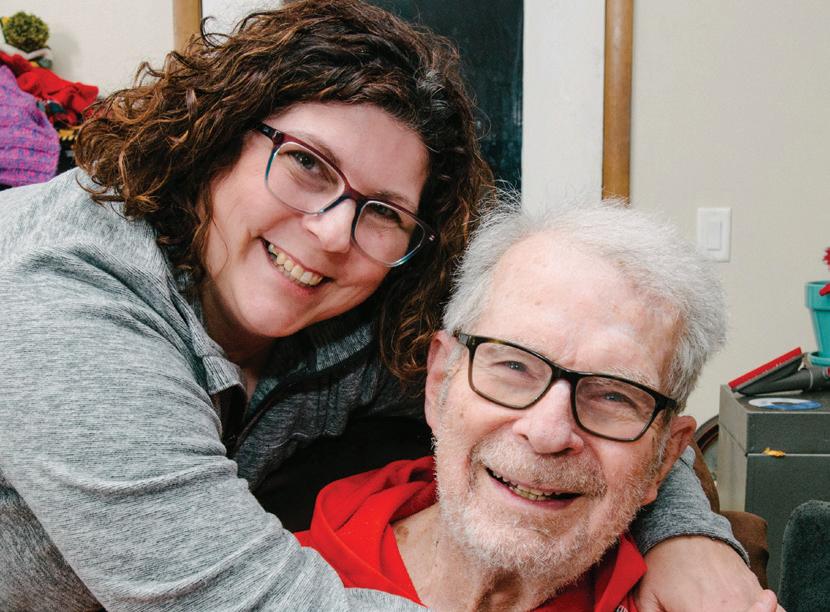
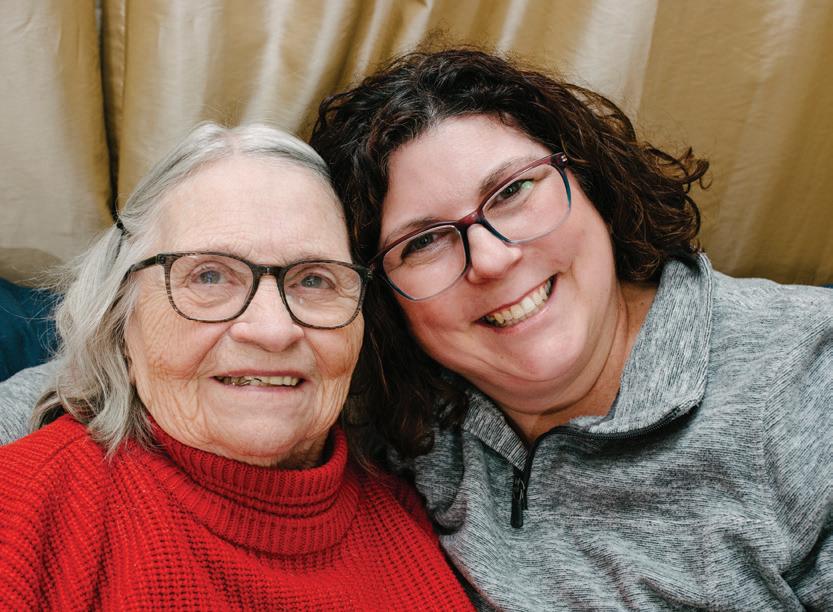
MAUREEN BERIGAN is the baby of the family, but at 51, her five older siblings finally respect what she does for their parents. As a single mom of two sons and a daughter, she started living in adjacent apartments to her parents when her kids were growing up. Three years ago, they all decided to move in together to consolidate bills and transportation.
“I’ve always had a good relationship with my parents, but even now it’s more of a positive [experience],” she says. “My kids (21, 18 and 14) are able to see how things are, and it’s nice for them to experience this as well.”
Maureen works part-time at LensCrafters. As a caregiver for her parents, Jeanne and Leroy “Skip” Berigan (who are both 88), she keeps track of their medications, transportation and medical appointments. A selfdescribed “helper,” she feels fortunate that she doesn’t have to manage dementia or other major medical issues (her dad gives a thumbs up upon hearing this during our interview). But there are still days when she feels overwhelmed, and she requests 20 minutes alone to decompress in her room, which everyone obliges. There are also days she walks for miles with their new puppy to have her alone time.
“[My parents] help me if I’m having a rough day and need to talk to an adult that’s not my child,” says Berigan. “Sometimes I don’t want to tell [my mom] things because she’s my mom and then I’m like, ‘I’m 51 years old, I can talk to my mom as an adult.’ I’m becoming more like friends with my mom than a mother-daughter relationship. I’m having more adultlike conversations with them than I would have had as a younger person, or if I wasn’t living with them.”
Hannah Wente builds community through her freelance writing and nonprofit work.

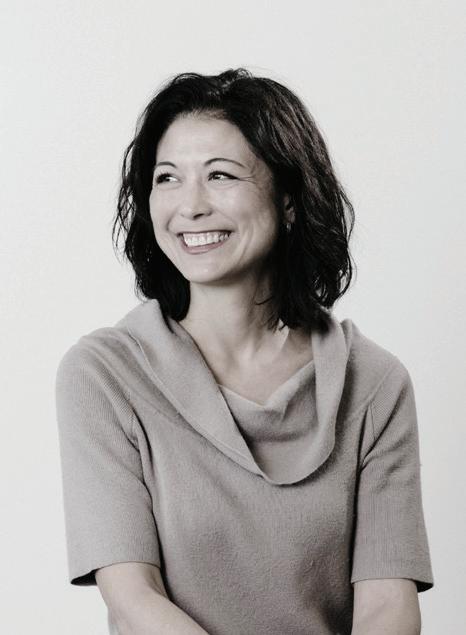


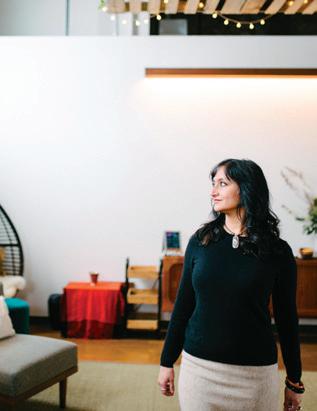
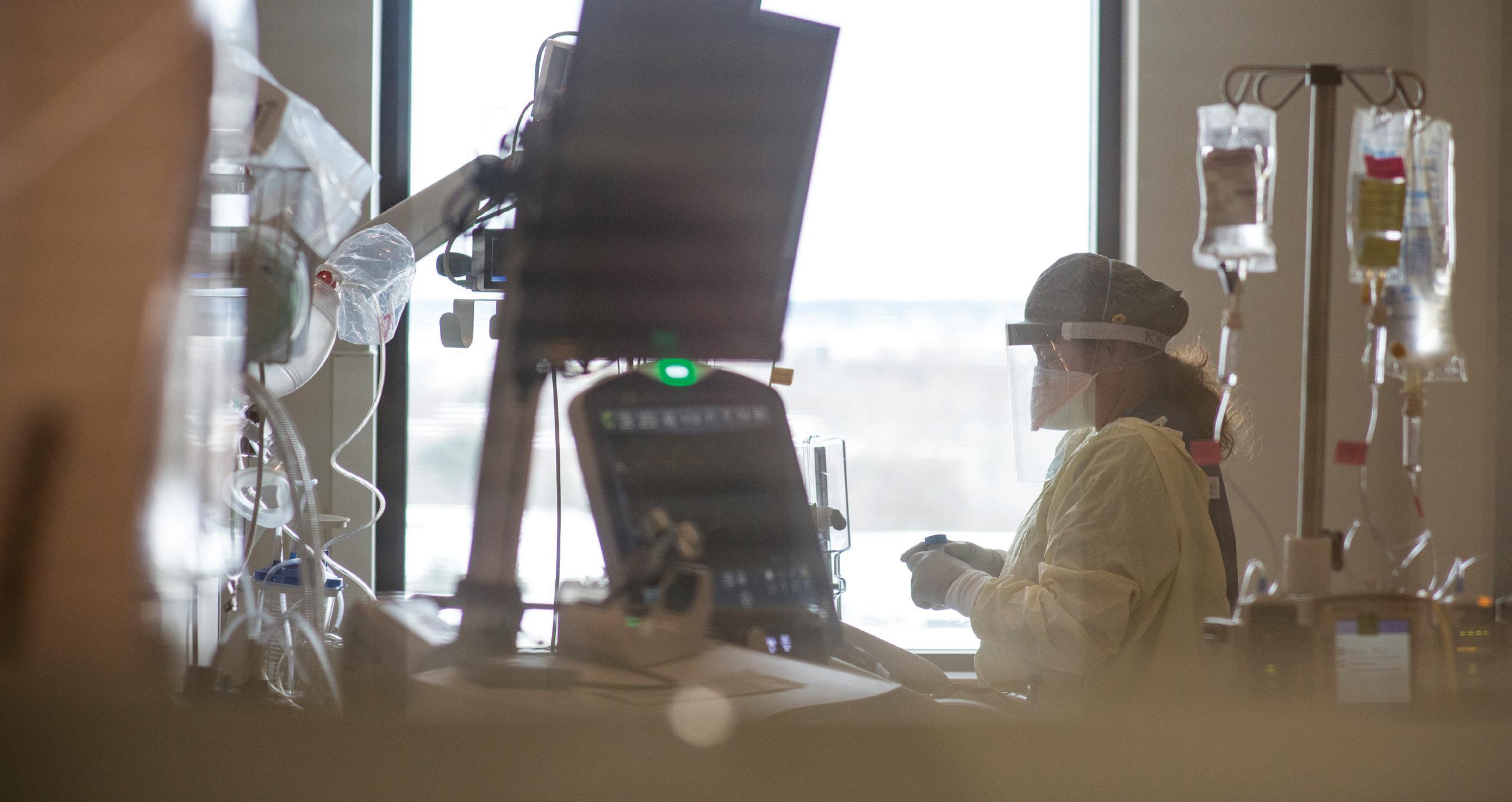
It’s never completely quiet. Sometimes it’s just the distinctive, rhythmic sigh of the ventilators, beep of the tube feeding machines or the click of a door closing shut. Other times it’s the alarms of a code, crinkling of a PPE paper bag and frantic feet.
In the heart of Madison, the ICU staff at UnityPoint Health – Meriter are both exhausted and determined to help patients beat COVID-19. Coming and going from shifts, they are greeted by the masked and the maskless outside, but inside, on this floor of the hospital, everyone has learned to read each other’s eyes. And those eyes tell heartbreaking stories.
For one day, for only a few hours, we documented our ICU; a brief moment in a battle that is still raging to stop a deadly pandemic. COVID-19 has not followed any normal rules, and when the fall surge hit, it was like nothing our veteran staff had ever seen.
“We have always cared for the sickest of the sick in the ICU. We have cared for patients during their most vulnerable moments. What’s different with COVID-19 is the sheer number of patients who are so close to death. At shift huddle, the mood is dark, because we know the chances of patients getting better and living a quality life is slim,” said one UnityPoint Health ICU nurse.
The act of preparing to enter a room is fraught with challenges, and in some ways, feels like a race. A patient is coding — “Hurry!” The internal dialogue checklist is on repeat: gown, gloves, N95, and face shield.
Personal safety means limiting exposure, but even with our steady supply of PPE, the need to keep a patient alive means hours on end sweating and managing multiple equipment alarms in a single room.
calls, feeling helpless as they explain to family
members the necessary visiting policy restrictions, offering only a Zoom call — as if that can adequately replace being with a loved one in a time of need.
In the Zoom call a nurse tries to carefully explain the patient’s status and turns the camera toward someone who is paralyzed with tubes attached to every orifice. The nurse watches, heartbroken, as a family tries to sing “Happy Birthday” through tears, and the patient is too delirious to recognize the voices.
This is where we are, and the emotional toll is real. Our mental health specialist normally spends her shifts with patients and families in crisis, now, it’s the staff that she supports in order to cope and grieve the loss they are seeing.
We have always cared for the sickest of the sick in the ICU. We have cared for patients during their most vulnerable moments.
Going home isn’t a reprieve. Being exhausted and frustrated results in snippy arguments at best, and ostracized family members who think COVID-19 is fake at worst. Through it all, our staff try and stop their mind from floating back to the unit, and the code they saw last. The tears are unstoppable.
“I think to myself that we just need to hang on a little while longer, and then another surge hits.” These are words spoken from another UnityPoint Meriter staff member.
Our staff hopes that this window into the ICU reminds our community that we are all in this together. Wearing a mask, physical distancing, staying home and getting the life-saving COVID-19 vaccine when it is available to you is the only way we save lives. Be a hero at home, and help our healthcare heroes at work.


More than ever, people are expanding their focus beyond traditional medicine to holistic practices that can augment and improve their health.
BY EMILY MCCLUHAN

Self-care is certainly a buzzword right now, and we’re incredibly aware of how crucial it is to our overall health picture. In addition to self-care, more natural, holistic ways of taking care of ourselves —— things like meditation, adaptogenic herbs and eating for mood (the gut-mind connection) —— aren’t fringe topics anymore. Seeking ways to take better care of yourself with complementary medicine might be another way to take charge of your health.
Complementary medicine refers to a range of therapies, such as acupuncture and massage therapy, that complement traditional medical therapies. It shouldn’t be confused with alternative medicine, which is the idea of replacing a standard medical approach with a natural or holistic method. Complementary medicine services might even be offered through your health insurance plan.
We explored a few complementary services to understand how they can enhance the standard, compartmentalized approach we’re used to —— a primary care doctor supported by specialists for different conditions and systems of the body —— and tunes our bodies into the energy and environment around us to promote healing.

For some, the idea of voluntarily inserting needles into the skin is cringeworthy, yet the practice of acupuncture has been around for thousands of years as part of many types of traditional East Asian medicine.
Acupuncture is based on the idea that more than 2,000 acupuncture or pressure points connect the various pathways or meridians in the body, like the organs, skin, muscles and lymphatic system. When the energy flow along these channels is out of balance or obstructed, issues may arise, such as irritable bowel syndrome, hormone imbalances or even pain. These are the most common reasons patients come in to see her, says Kathryn Coppola, a licensed acupuncturist and owner of Wild Blossom Acupuncture & Wellness.
At a patient’s first visit, Coppola seeks out the root of a patient’s issue by learning their full health history. Often that root cause is affecting other channels in the body, creating a web. By releasing or unblocking those other channels, the main issue can be addressed.
“If someone comes to me with neck pain, I might press on a specific point on the hand for example, and ask her to turn her head,” Coppola says. “If the pain is still there, I’ll find another pressure point and press there. When she turns her head again, the pain may be lessened, and that’s how I know where to focus my attention it’s all connected.”
But what about those needles?
“I sometimes call it a ‘tap’ instead of a needle,” explains Coppola. “The majority of the time, patients don’t feel anything, but some do. It may feel like a mosquito bite, but I adjust the tap if they feel anything. Most people feel a deep state of relaxation afterward.”
Coppola explains that acupuncture also pairs well with chiropractic, massage therapy and physical therapy. “For example, someone seeing a physical therapist will get more out of that therapy if they are also doing acupuncture,” notes Coppola.
Acupuncture has been scientifically proven to release endorphins, our natural pain killers, and serotonin, the “feel good” chemical. As these chemicals are released the muscles and nervous system are able to heal more easily. Acupuncture has also been used to complement cancer treatments to help relieve nausea.
However, it’s a good idea to talk with your doctor before exploring acupuncture, especially for those who are at risk for infections, have chronic skin issues or are pregnant.
What drew Coppola to acupuncture was the benefits it brings as a preventive approach to health.
“Instead of using acupuncture as a last resort to try and fix something, try incorporating it to maintain balance,” she says, and suggests exploring maintenance treatments once per month to stay on top of the disruption that stress and anxiety bring, or those nagging aches and pains.

Kathleen Raven Wildwood, clinical herbalist and founder and director of Wildwood Institute, describes herbs as “plants that you use” that we can extract their natural benefits from. For example, echinacea is commonly used to treat or prevent colds and flus; ginger for nausea, motion sickness and to ease digestion; and ginkgo to improve memory.
But knowing how to use herbs is as important as knowing their benefits. Prolonged use of echinacea could negatively impact some people’s immune systems, but may be useful for others. Actual ginkgo seeds contain toxins that may cause seizures, so only ginkgo leaves should be used — if you’re preparing the ginkgo yourself.
For those who want to dig deep into herbalism, Wildwood’s apprenticeship program, herbal walks and online content educate people on how the chemical makeup of an herb, whether it’s medicinal, nourishing or even poisonous, determines the most effective preparation. She notes, for example, that nettles are rich in calcium. A long infusion, or steeping the nettles in water, for at least four hours extracts the most nutrition. However, herbs like chamomile and black tea can be toxic if steeped that long and are safer and more effective as a traditional tea that you’d drink. When used correctly, Wildwood says there are many herbal alternatives to overthe-counter products for common health problems like indigestion, poor immunity during cold and flu season, skin rashes and joint pain. She notes that there is a plethora of online content about herbalism, but it may not be complete or accurate.
“If you are taking one or more prescription medications or have a chronic illness, it is in your best interest to consult a clinical herbalist who can work with your healthcare practitioner … rather than trying to experiment with herbs on your own,” she says.
Wildwood gives other examples of herbal remedies, such as taking a tincture (an herb extracted in alcohol and water) like meadowsweet for acid reflux, or arnica and rosemary-infused oil applied externally for sore joints. In her online store, explore a variety of herbal teas, tinctures and things like her 3 Herb Medicine Kit, that includes a St. John’s Wort oil used as a natural sunscreen, a Yarrow tincture used as an antibacterial and to stimulate digestion and kelp fronds used as a source of rich vitamins and minerals.
“Learning about and using herbal medicine … is a powerful tool for healing,” says Wildwood. But, she reinforces the importance of starting with a reputable source, if you’re ready to explore herbs to complement your diet or as alternatives to over-thecounter medications. This ensures the correct preparation for maximum effectiveness, and avoids potential interactions with prescription medications.

Reiki is an ancient East Asian practice based on the idea that energy or qi (pronounced “chee”) powers our bodies. When physical or emotional trauma, illness or stress block that energy, that power or lifeforce becomes imbalanced or diminished. The purpose of a Reiki practitioner is to help boost the qi or unblock those disruptions so that energy can flow, helping the body to heal emotionally, physically, mentally or spiritually.
“Reiki can help you move off a plateau. Or perhaps there are stressors from a job loss, a car accident — any kind of physical trauma. Those things all affect your energetic field,” says Kathleen Stoneman, who has practiced Reiki for over 20 years and taught it for nine, and owns Metamorphosis Holistic Health.
She notes that someone who is looking for a quick fix from a life stressor or pain may not see improvement in a single session typically, Reiki takes a few sessions. Stoneman also stresses that Reiki only works if you’re open to it, and if you’re ready to let go of physcial or emotional trauma.
What can you expect during a Reiki session? The practitioner will either use sweeping motions over your body or placement of hands to create a space for your energy to flow. An open palm resting on the stomach and mirrored on the back creates a “Reiki sandwich,” balancing the qi in the core of the body.
“Some people may feel an opening or shift as different chakras, or energy areas of the body, are addressed. Others may just feel a deep relaxation, bordering on sleep, allowing the chattering in the brain to quiet and subconscious thoughts to surface,” says Stoneman.
Many Reiki practitioners like Stoneman also teach Reiki so that through training, people can learn to run it on themselves as a way to maintain balance.
“You might run Reiki on yourself before you do a meditation or before or after yoga,” she says. “Or perhaps with your child at bedtime to calm the energy from the day.”
Stoneman says Reiki is an easy way to keep the energy flowing and the light shining on thoughts or traumas that often fall into the shadows and keep us from being our best selves.
In Sanskrit, Ayurveda means “science of life.” It assumes that we are made up of all the things of the universe water, air, earth, space, fire. Those elements combine into three principle energies in our bodies (or Doshas), called Pitta, Kapha and Vata. We are all born with a certain balance of these three Doshas. Within that combination, each of us typically has a predominant Dosha.
“We are constantly digesting everything our emotions, toxins in the air, energy from others, weather, food,” says Shilpa Sankaran, founder and owner of Kosa Spa.
“When our natural alignment of Doshas is thrown off, that’s when our body can’t keep up with the toxins, and disease sets in. [But] understanding this mind-gut connection can address many issues like rashes, bloating, headaches, fatigue, insomnia and anxiety. If the mind and body can align with the environment, those imbalances … can often be prevented.”
Many of the basic principles of Ayurveda are simple and driven by the seasons and diet, such as eating organic produce, getting quality sleep and exercising but the key is to tailor these practices to your specific Dosha. Working with an Ayurvedic health counselor, like Tanya Anderson of Kosa, can help to personalize recommendations even further and bring balance back into your life when stress or work throws it off. To understand your predominant Dosha, Anderson suggests starting with an online quiz, like the one on kosaspa.com.
Kosa offers health counseling, meal plans based on the current season, Ayurvedic wellness necessities and body treatments. Their Ayurvedic hair and body products are made in-house and address specific imbalances based on your Dosha.
“We don’t offer cookie-cutter treatments for our guests,” Anderson says. “It’s simple to just offer a massage, but if you understand what’s going on with the guest, you can tailor the oils, the type of strokes and the pressure specific to the imbalance that they’re experiencing.”
For example, Sankaran says if you are the fire element, or predominantly the Pitta Dosha, Kosa’s massage therapists would use cooling elements in the oil like sunflower, aloe and mint during the treatment. Someone who is more rooted in the earth elements, or Kapha Dosha, tends to be more slow and stable. A massage for this Dosha will be more stimulating, using Gharshana, or silk gloves, to brush the skin and wake up the cells.
Sankaran notes that chronic issues should always be addressed by a medical professional, but Ayurveda can complement conventional treatments.
Many of the practices we covered also perform multiple therapies, which can even be paired together.
KOSA
SPA
In addition to Ayurvedic health counseling…
• Seasonal cleanses
• Meal planning and cooking classes on-site
• Massage therapy

METAMORPHOSIS
HOLISTIC HEALTH
In addition to Reiki sessions…
• Acupuncture, especially for infertility
• Herbal medicine
• Reiki training from level 1 and 2 through Master levels
FORWARD
HEALTH
In addition to naturopathic medicine…
• Chiropractic care
• Functional neurology or brain-based therapies
• Homeopathy
WILDWOOD INSTITUTE
In addition to herb education…
• Herbal apprenticeships toward becoming a clinical herbalist
• Holistic health consultations

Holistic, functional, naturopathic. There are many names for the practice of medicine that aims to treat the whole person mind, body and soul but the most common is naturopathic.
“The training for naturopathic doctors and medical doctors is very similar through the first couple of years of medical school with a focus on basic and clinical sciences,” explains Dr. Ashley Woyak, a naturopathic doctor and owner of Forward Natural Medicine. But when the focus shifts to treatment, medical students learn about pharmacology and surgery while naturopathic students begin focusing on diet, lifestyle, supplements and homeopathy as ways to address the root of a problem.
At her clinic, Woyak says she sees many patients who have been on medication for a prolonged period for things like diabetes, depression or migraines, or those who’ve dealt with digestive issues or weight gain and have been passed around to different specialists in the medical community. Since naturopathic doctors are not licensed in Wisconsin, primary care physicians can still refer patients to her, but her clinic is considered out of network. Often, she has treated patients whose primary providers also suggest naturopathic to complement other treatments.
For patients who see her, Woyak says it’s a lot of detective work to fit the pieces of what’s ailing them together: a review of symptoms and history, a physical exam, current and past medications and supplements, and extensive blood work. Her goal is to treat the root cause, not just the symptoms.
“Usually during the evaluation I’ll have patients say things like, ‘Wow, no one has ever asked me this many questions about my health. It feels like you’re really listening,’” she says.
Care plans at Forward Natural Medicine can include herbal supplements and IV therapies to address
deficiencies or hormone imbalances, brain-based therapies for things like mental illness or ADD, or chiropractic work if muscles and joints are misaligned. Woyak works with patients that have thyroid issues who are looking for a natural alternative to medications through diet, exercise and supplements to address symptoms like fatigue, sadness and trouble losing weight. For diabetic patients, she starts with a full exam and lab work to identify small issues that may be exacerbating the overall illness.
While naturopathic medicine is a well-known and trusted practice on the East and West coasts, availability and licensure is more limited in the Midwest. Woyak says this makes it even more important when looking for naturopathic doctors to ensure the person attended an accredited naturopathic school.
She adds that one of the biggest barriers in a nonlicensed state for naturopathic doctors is insurance coverage. As part of her patients’ care plans, Woyak ensures there is a financial plan as well, often using flexible spending accounts for office visits and therapies, and insurance coverage for labs.
“In general, my patients must be motivated to get better,” she says. “The care plans we put together are not Band-Aids or a quick fix. I care about how the whole body works together and how everything that impacts us on the outside, affects us on the inside as well.”
Emily McCluhan is a program manager and freelance writer. She considers herself a Madison native now that she’s been exploring, running around, eating in and paddling the city for 13 years.
You’ve been diligently looking after your physical health through complementary approaches — but don’t forget another aspect that’s just as key — your mental health. BY
SHELBY DEERING
Everyone can benefit from therapy, whether you’re dealing with a stressful period in your life, struggling with grief or could use a tune-up with an alreadydiagnosed mental health condition. These Madison providers have you covered.
• MAJOR PROVIDERS. Madison has a wealth of major medical providers, where mental health services are plentiful. Group Health Cooperative, UW Health, UnityPoint Health and SSM Health offer a wide range of approaches and specialists.
• PRIVATE PRACTICES. Local private practices additionally provide different forms of therapy. Journey Mental Health Center has 29 programs available, from individual therapy to substance abuse treatment to programming for patients of African descent (the Ujima Program) and Clinica Latina, for Spanish speakers. Rogers Behavioral Health assists children through adults with things like eating disorder recovery and depression and offers online options, like a virtual OCD support group. Mental Health Collective includes several therapists with varying specialties. Play therapy? Couples counseling? Therapy for those with disabilities? It’s all here.
As a complement to a therapy regimen, there are other ways to look after your mental wellbeing. Through gentle movement and self-care sessions, you may breathe that much-needed sigh of relief in no time.
• MEDITATION. Meditation also has its roots in bygone centuries and can be discovered in Madison. From online Meditation at Monona Terrace classes, livestreaming sessions from Kadampa Meditation Center to The Studio’s Kathleen Slattery-Moschkau’s guided meditation livestream, “The Kathleen Sessions,” you’ll be in a Zen-like state before you can say om.

• MINDFULNESS-BASED STRESS REDUCTION. Studies show that Mindfulness-Based Stress Reduction works. Offered through UW Health, for eight weeks, you’ll participate in weekly twoand-a-half-hour-long classes focused on mindfulness activities, like body scanning and meditation.

• SUPPLEMENTS. Many vitamins are known for their stress-busting abilities (check with your doctor first). One option is the Chill Pill. With ingredients like magnolia bark and chamomile, these calming capsules come from the Madison-based Lively Vitamin Co.

• TAI CHI. As a Chinese practice that’s thousands of years old, tai chi is still a viable way to combat stress. Practice slow and purposeful movements through Tai Chi Center of Madison, which is holding classes on Zoom.

• GIFT BOXES. A just-for-you box with self-care necessities is a lovely way to lift your spirits. There’s the Curated-For-You Gift Box from Good Day Shop, if what you need is a good soak or a luxurious body oil.
A Room of One’s Own has subscription boxes for bibliophiles, if your form of selfcare is settling in with a page-turner.
• MUSHROOM COFFEE. Adaptogens, or herbal substances known for their stabilizing effect on the body, have been getting a lot of buzz. They can be found locally in the form of mushroom coffee — yes, you read that right. Inlands crafts a ground mushroom coffee made with adaptogenic reishi, which can enhance mood.
Visit bravamagazine.com to learn about wellness storefronts in Madison you’ll want to check out.







In my earliest memories, my mother had me and my younger brother out in the garden every possible day, at the bottom of the hill behind our house. She raised carrots, peas, tomatoes, peppers, lettuce and two little veggie bandits. (We used to eat fresh okra right off the plant until she’d catch us and chase us away.)
Gardening with her taught us to be patient, detail-oriented, and optimistic about the future. Sure, working in the dirt under a hot sun seemed insufferable. Making certain each plant was exactly positioned for maximum success. Of course, my brother and I didn’t understand that these little plants were also helping sustain a family making less than $10,000 a year.
In 1984, Mom got a part-time job working for a charming, young man named Gordy Kopke on his farm in the pastoral township of Dunn, just outside of Oregon, Wisconsin. His talent for spotting beauty was not just limited to flowers,
and he eventually convinced her to make the move into the countryside. Over the next 35 years, they planted and harvested. Gordy built additional greenhouses and Mom helped fill them with the plants and flowers they loved. All the while, my brother and I watched, played in the dirt, and learned of growth, compassion, patience, and joy. Today, Mom and Gordy still ensure we focus on the details and are helping mentor the next generation of our family. There are a few more of us hanging around now, and we’re grateful for the privilege to be a part of it all. Thank you both for helping us plant some memories.
(Love ya, Mom!)
…also, we sell gorgeous flowers and amazing veggie plants you’ll really enjoy. Please check us out!
- Josh Smith















Building a home is very personal — both a project and an adventure for the soonto-be homeowners.
Bryan Sipple, owner of Custom Homes of Waunakee recognizes that, and with 40 years of building experience, he’s dedicated his business to giving you the experience you deserve when building your dream home.
“There’s a myth in our industry that building a new home is hard and stressful,” says Jennie Sipple, who’s also Brayan’s wife and a CCH interior designer. “This simply is not the case here!”
The Morse family of Wisconsin Dells can attest to that, after turning to CCH of Waunakee to design and build their dream home.
“They were involved throughout the entire process, from drafting the home to picking
out interior selections,” says Jennie.
The result? A striking, modern farmhouse-style home that sits atop a beautiful bluff overlooking downtown Wisconsin Dells.
“Two of my favorite elements of the Morse house are the high ceilings in the entryway and the natural floor-to-ceiling stone fireplace,” says interior designer Breanna Bartelt, pointing out how the natural elements pair beautifully with the tones in the wood flooring, adding another layer to the space.
The main level features an office, mudroom with lockers, sizable walkin pantry, playroom and a TV room alongside the living room to fit their lifestyle.
There’s a myth in our industry that building a new home is stressful and this simply is not the case here!
Upstairs are three bedrooms, including a master ensuite with a large walk-in closet and a laundry room complete with sink and area for hanging.
When working with clients, there are several factors the CCH team takes into consideration when transforming a project from an idea to the client’s dream home, says Nicole Hartmann, job operations manager for CCH of Waunakee.
The first is location, she says, including how a house would fit into that spot.
The second is budget — combining their needs (such as number of bedrooms, bathrooms, bonus rooms, etc.) and wants (typically more cosmetic desires).
The third factor is the style you want to achieve — which involves sitting down with an interior designer to talk about exterior and interior finish options.
“We’ve always held ourselves to the highest of standards in everything we do,” says Jennie. “That includes the quality of the building products and certainly the craftsmanship and talents of our crew.”
But the most important thing? Giving you that experience you deserve — and a dream home you’ll love for years to come.



Today’s bedrooms are much more than the sleepy bedchambers of evenings past. Because homeowners are spending more time at home, master bedrooms have evolved into distinctive spaces, complete with stone and marble fireplaces, sitting areas, coffee and wine bars, media centers and enormous his-and-hers dressing-room closets.
And while gourmet kitchens rank first in the list of most desirable rooms, master bathrooms aren’t far behind.
The team at Dream House Dream Kitchens, a remodeling firm serving Madison and the surrounding region, works with consumers to create master suites that also include bathrooms with invigorating spas; entertainment centers; and heated floors, towel racks and toilet seats. Move over basic white porcelain and chrome — and make way for vaulted ceilings; freestanding soaking tubs;
whirlpools for two; USB ports; and walk-in, glass block showers featuring multiple massaging showerheads positioned at different levels.
According to Jerry Schmidt, sales director at Dream House Dream Kitchens, today’s homeowners are looking for master bathrooms that feature smart storage solutions, including cabinets with outlets for shavers, toothbrushes and other chargeable items.
When working with homeowners on a remodel, the “Dream team” meets at the client’s home to review the space’s existing layout and learn more about the homeowner’s vision. This site visit entails the design team evaluating the space that
We are with the clients to help them make all of the right choices so the space comes together.
will be renovated and taking images and measurements of the area.
“We then take a couple weeks to put together an initial design and presentation with the clients at the showroom,” Schmidt says.
At the presentation the Dream team presents the concept floor plan as well as full 3D color renderings of the proposed design, so the client can envision how the new bathroom or master bedroom space will look and feel.
“This really allows the client to see how the space will look with actual color and features depicted,” Schmidt says. Any design tweaks will be made at this time, prior to the selection of finishes for the space.
Dream House Dream Kitchens then works with customers on all of the various selections for their project, including tile, plumbing fixtures, cabinets, countertops, hardware, lighting, mirrors, paint colors and beyond.
The final stage is the actual remodel, which is performed primarily by Dream staff who do the work on-site, from demolition to completion. “This puts the customer in a position to have the same team through the whole project,” Schmidt says. “We are with the clients to help them make all of the right choices so the space comes together.”



The Rubin’s Furniture name is familiar to many Madisonians. Its first store is located just off the Capitol Square, the business is almost as much a fixture in downtown Madison as the Capitol itself.
When Ben Rubin arrived in Madison from Russia, he opened Rubin’s Furniture back in 1931. Ninety years and four generations of Rubins later, the business is still family owned and operated. Today it’s run by current owner Bob Rubin, who oversees day-to-day activities. His daughter, Tama Thomas, serves as CFO and human resources manager, and son Bill is the store buyer and website expert. Their secret to staying in business so long? “We offer a vibrant and diverse shopping experience, while continuing to be a trendsetter for Madison and the larger Midwest area,” explains Bob. Sales manager and interior designer Danielle Curti adds that Rubin’s brings
new products to the showroom floor or refreshes vignettes on a weekly basis.
A second store was opened on Madison’s west side in 1993. “The two stores carry furniture by the same manufacturers but the styles are very different — so it’s always worthwhile to check out both locations,” says Curti.
Curti says the client to designer relationship is paramount at Rubin’s, and that sets them apart from other stores.
In fact, Rubin’s offers their customers complimentary design services, which include floor plan layouts, color and material selection for furniture, as well as lighting and accessory suggestions.
The pandemic has affected how Rubin’s staff works with their clients — but luckily they’ve found effective and
We offer a vibrant and diverse shopping experience, while continuing to be a trendsetter for Madison and the larger Midwest area.
fulfilling ways to still connect with them. “Before COVID-19, our designers made weekly house call appointments,” says Curti, “but since that’s slowed down some, we’ve found other ways to help our clients design their space through FaceTime, Zoom and email.”
They also found creative ways to communicate with clients who couldn’t stop by for in-person shopping. “We’d take photos of pieces we had on the floor that were available for sale and immediate purchase,” Curti says.
The pandemic has caused the need for a few other adjustments as well.
“We’re limiting the number of clients in the store, and we’ve increased our sanitizing between appointments,” says Thomas. Despite the pandemic, Thomas says they’ve enjoyed the continued opportunities to connect with their cleints.
“The most rewarding thing to come from the pandemic would have to be the continued business from both new and loyal clients,” she says. “We love bringing unique and affordable design to the community and feel very fortunate that our customers trust Rubin’s with the very important task of personalizing their home.”


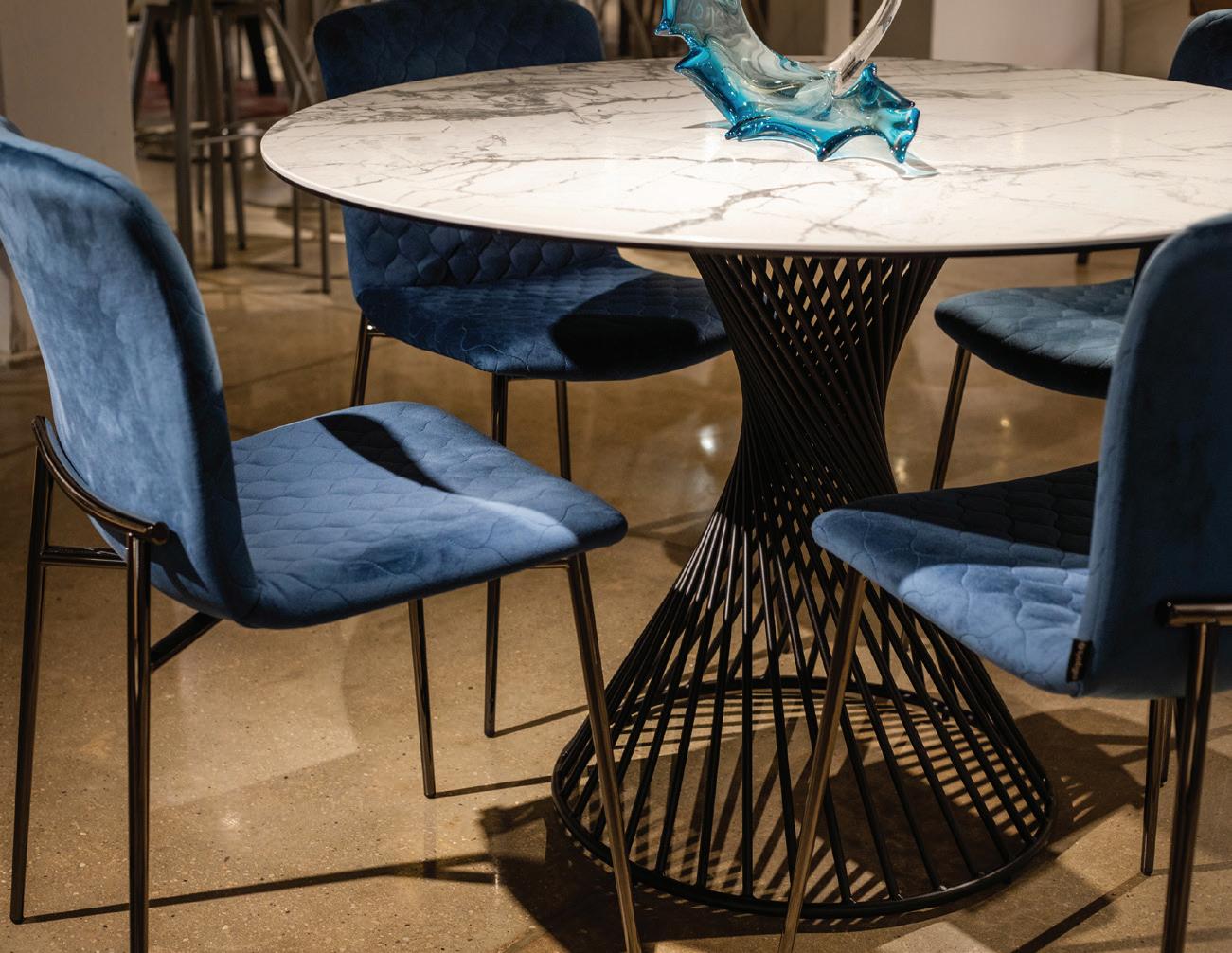


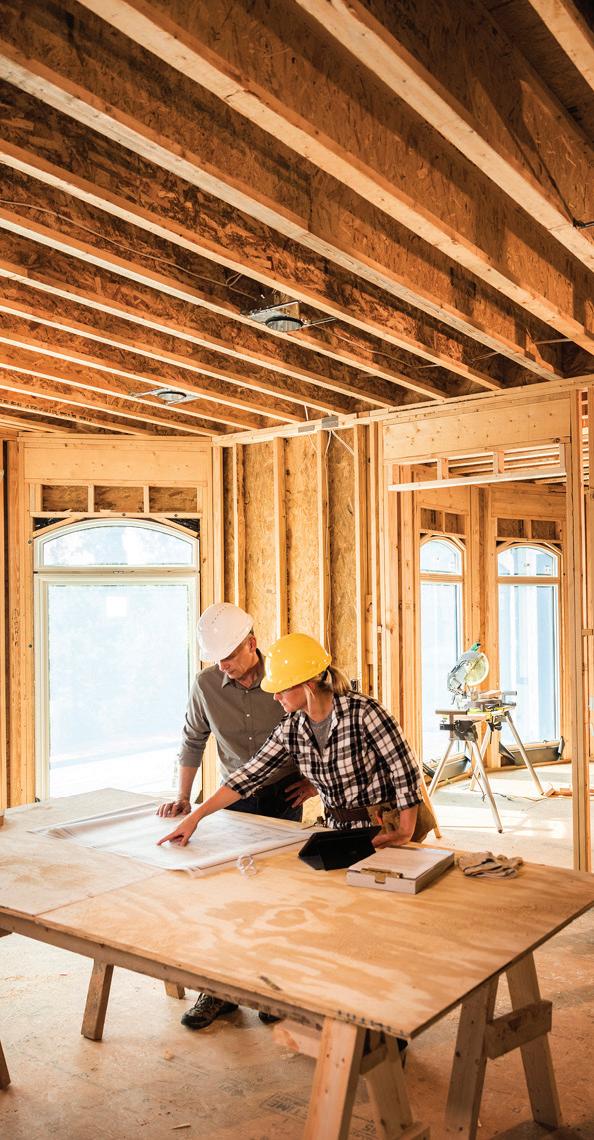
So, you’ve decided to purchase a home. Before you find that oh-so-perfect Cape Cod or embark on the adventure of building a new home, you’ll want to begin by determining your buying power and the type of home loan that works best for you.
That’s where the professionals at Park Bank come in.
According to Benjamin Samson, assistant vice president, mortgage advisor at Park Bank, there are some key considerations for purchasing or building a home. These include establishing a realistic budget and timeline.
“As your lender, it is our job to qualify clients for a loan that meets underwriting guidelines and their expectations for a monthly housing expense,” Samson says. To assist clients through the process, Park Bank recently implemented a completely digital application portal where home buyers can apply, upload and sign documents up until the day of closing.
“Many of our clients have made the transition to a somewhat paperless financial world, so they can upload their pay stubs, bank statements and other
financial documents securely instead of dropping off paper documents at one of our nine branch locations in Dane County,” Samson says. “Having the digital platform allows us to collect the documents and signatures needed for underwriting more quickly, and in turn, move to approval and closing faster as well.”
In the local market, the inventory of homes for sale is the biggest issue the experts at Park Bank are seeing. This is why many of their clients are turning to new construction.
Whether you are building, buying or simply need to know what comes next, Park Bank can help you get there.
“Our role as your lender is to work as part of the team building your new home. I’m not going to give you recommendations for design — but finding the best financial solution to meet your needs is where I come in,” Samson says.
One of the biggest mistakes Samson sees homeowners of new home construction projects make is not planning for overages during the construction process.
To assist with this, Park Bank shares its Track Along Budget System with their clients.
“This allows our clients to input their construction budget into a spreadsheet and track their expenses for their new home construction as they work through the process,” Samson says. “This helps eliminate any surprises at the end of the build.”
Because buying a home is typically the biggest purchase that most consumers make, it is important to choose a financial institution that you trust and is going to be with you for the long haul.
“The relationships we have built over the years at Park Bank help create a smooth building process for our clients,” Samson says. “Whether you are building, buying or simply need to know what comes next, Park Bank can help you get there.”













































































































































































Mediterranean Cafe’s delicious eats are featured on this page, such as their hearty, satisfying vegan lentil soup and tasty pistachio baklava.
This refreshing Greek salad is comprised of spring mix, tomatoes, cucumbers, Kalamata olives, pepperoncini and feta cheese, and drizzled with a mustard vinaigrette.
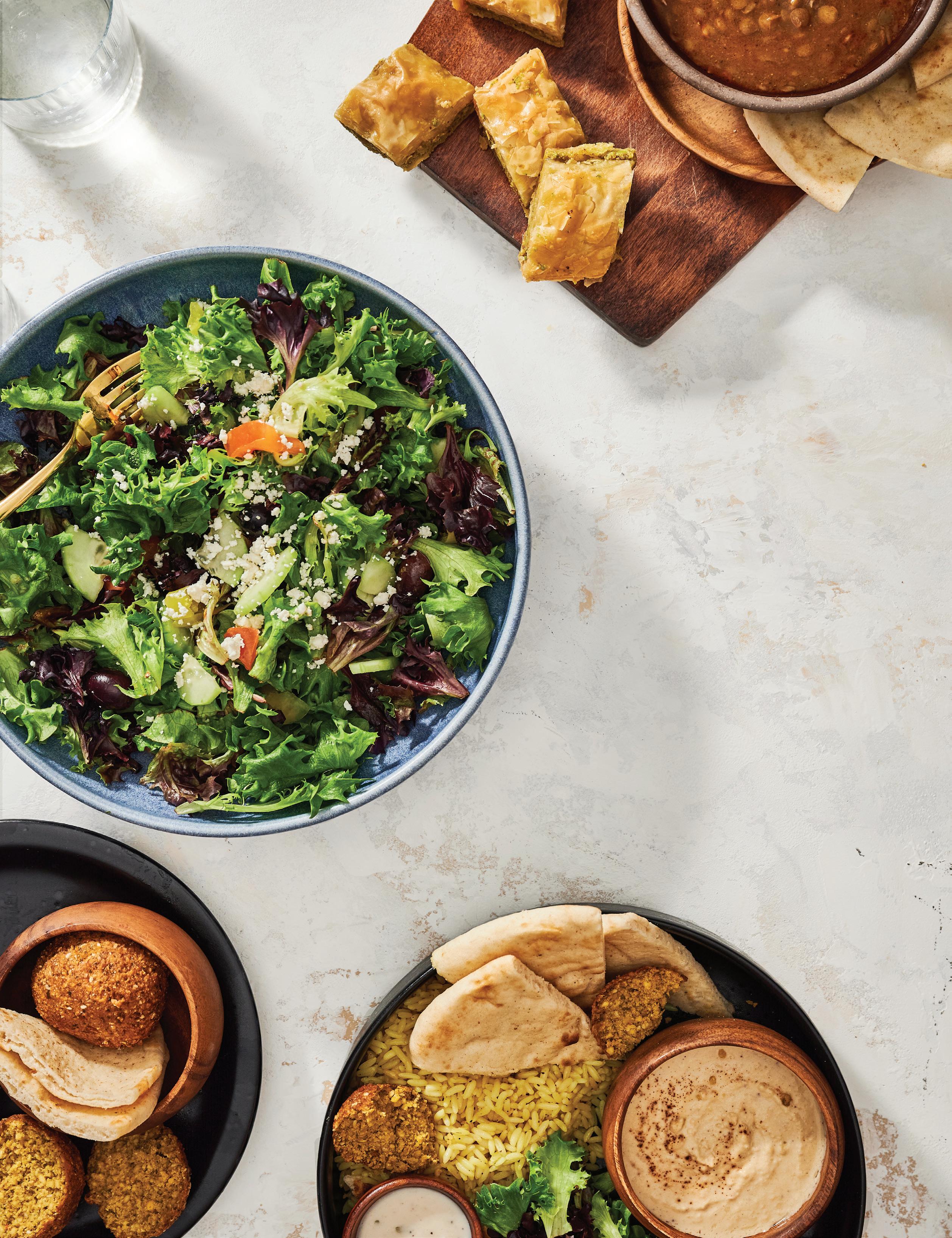
No meat? It’s no problem with Med Cafe’s falafel balls made with a mix of grains, olive oil and herbs. Your falafel fix is paired up with rice, salad, pita bread and tahini for a filling meal.
The city’s best vegan and vegetarian spots offer ethnic cuisine, comfort food and even sweet treats.
BY CANDICE WAGENER
PHOTOGRAPHY BY SUNNY FRANTZ
Amere 5% of Americans consider themselves vegetarian, but the desire to consistently eat more plant-based foods is on the rise in an effort to reap health benefits like reduced risk of heart disease, diabetes, certain cancers, depression and increased wellbeing. We’ve rounded up some spots in Madison to celebrate meatless Monday — or any day you’re feeling veggie-forward.
ADAMAH NEIGHBORHOOD TABLE
Tucked away in the University of Wisconsin–Madison Hillel building, Adamah may be off your radar, but it’s open to the public. As a participant in REAP’s “Buy Fresh, Buy Local” program and the only kosher-certified kitchen in Madison, Adamah offers a menu of Jewish staples like matzo ball

soup and challah bread, which they’ve even made vegan. If you’re craving a little Southern heat, dive into the vegan Nashville “chicken” sandwich, which will have you second-guessing whether you’re eating the real thing.
Holiday specials, like their Shabbat in a Box meals, feature “brisket” seitan with everchanging side dishes. And don’t miss out on their Vegan Date Night, when you and your honey can feast on flavorful lentil “chorizo” tacos, amplified by chunky guacamole and crisp escabeche, a vinegar-laced raw veggie salad. adamahmadison.com
This family-owned Indonesian spot is known for their house-made tempeh, which are soybean cakes with a bit more chew and a nuttier, earthier flavor than tofu. Order the simple Satay Tempeh, marinated in a blend of spices, skewered and grilled. It’s complemented with a sweet peanut sauce, served on a bed of steamed rice cakes and a side of crisp cucumber salad. Our go-to at Bandung is the Indo Mac — thick, savory rice noodles, bathed in a creamy red curry sauce with stir-fried green and yellow onions, bamboo shoots and mushrooms mixed in. bandungindorestaurant.com/order
The Green Owl has been the spot for vegan food for years. In fact, everything on their menu can be made vegan upon request! Their vegan chili — with flavors that rotate regularly — is top-notch and just as good as the real thing. They’re also known for
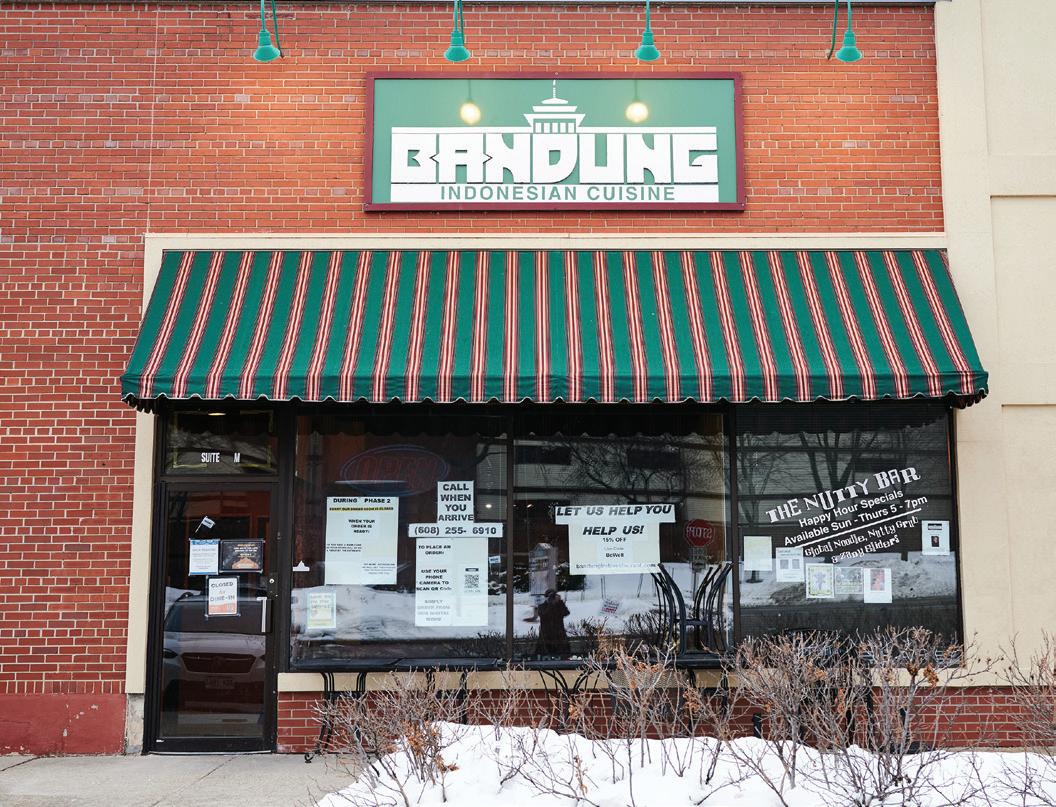
The mixed vegetable curry from Lao Laan-Xang features chunks of tofu cooked in yellow curry with coconut milk and butternut squash, carrots, onions, potatoes, Thai eggplant and string beans.

their weekly burger special, where their house-made vegan patty gets dressed up as a Pizza Burger, German Apple Hearty Burger or a Fettucine Alfredo Burger — to name a few. Or opt for a plain old bacon cheeseburger, but make it vegan with a Beyond Burger patty, tempeh bac’un and vegan cheese. And, save room for dessert: vegan cheesecake delicacies like white chocolate raspberry and roasted pineapple are too good to pass up. greenowlcafe.com
A State Street mainstay that has stood the test of time with a menu that is largely vegetarian, Himal Chuli has been serving Himalayan dishes that are simple, yet elevated for over 35 years. The dal and roti combo is a meal of sustenance — a mixed bean soup served alongside warm, dip-worthy flatbread. The Tarkari is another nice option, a mix of fresh vegetables simmered with warming spices like cumin, coriander and turmeric. himalchulimadison.com/42106
Another Madison standby for several decades, Lao Laan-Xang serves up dependable Laotian cuisine that will make any diner happy. Choose tofu as an alternative to meat in any of the dishes, most of which are bursting with vegetables and flavor from herbs
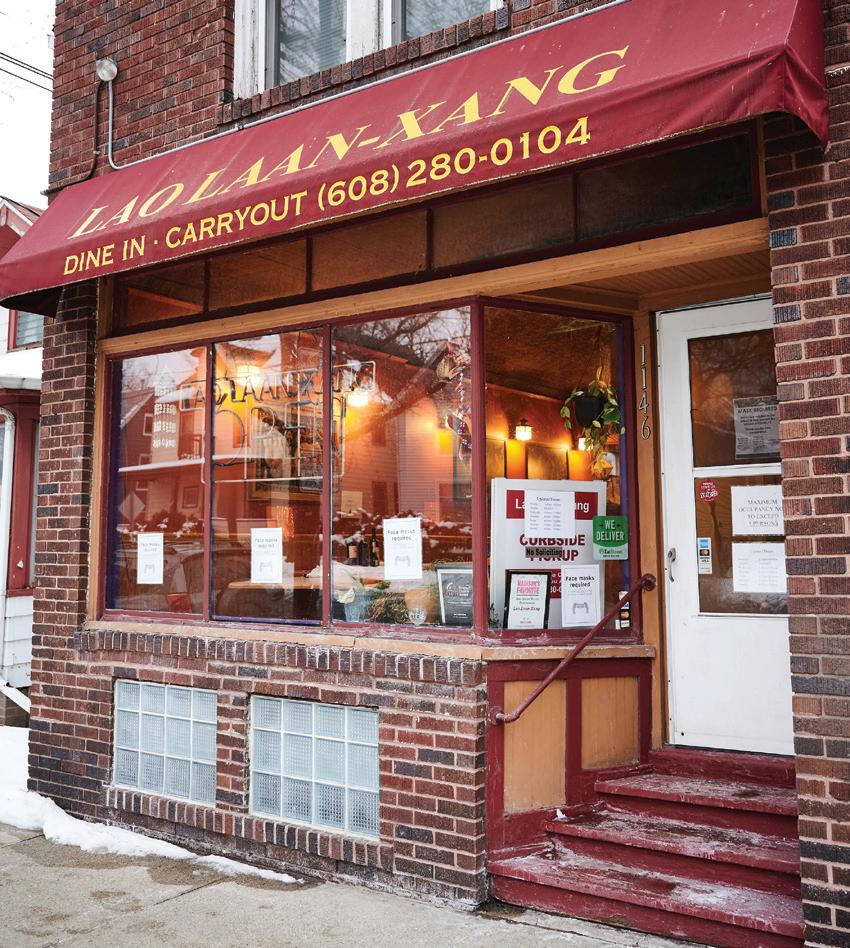
and seasonings. There are so many good curry dishes here, all of which can be made vegan. The curry squash is a favorite, made up of chunks of acorn and butternut squash, slices of zucchini and Thai eggplant, simmered in a flavorful curry sauce made creamy with coconut milk and fragrant with basil. laan-xang.com

Head to Ledger Coffee Roasters in Garver Feed Mill and decide between Level 5 Donuts in fun flavors like espresso churro or Heirloom Bakery’s salted caramel apple scones. Westsiders can get into the game at Bloom Bake Shop with vegan cupcakes, doughnuts and more.
Don’t let the hole-in-the-wall appearance throw you: Mediterranean Cafe has been providing some of the most hearty, comforting, economical dishes for a long time now. Their vegan lentil soup will warm you and fill you up with a plentiful mix of beans and veggies. And their falafel is crispy, crunchy goodness accompanied by a zippy tahini sauce, a fresh salad and a generous amount of rice. medcafemadison.com


Welcome to Biaggi’s Ristorante Italiano, where one bite will transport you to a cobblestone paradise. Conveniently located in Middleton, Biaggi’s offers a vast array of dining options.
Whether you want to dine in or carry out, dozens of meal options are available, including monthly features like Peroni Beer-Battered Walleye, Gooey Butter Cake and Penne Sardi.
Want a no-fuss dinner for four?
Check out Biaggi’s Pronto Packs, which include a salad and choice of pizza, pasta, or entrée.
In order to protect guests and staff, Biaggi’s has rigorous cleaning and sanitation procedures that align with guidance from the CDC. Staff are monitored daily for changes in health and are frequently washing hands. So, you can enjoy that fried ravioli and eggplant Parmesan at a spaciously distanced table.
For Curbside Pick-Up
Call 608-664-9288, or order online biaggis.com
Sun.-Thurs. 11 a.m. to 8 p.m. Fri.-Sat. 11 a.m. to 9 p.m.
Biaggi’s Ristorante Italiano Greenway Station 1611 Aspen Commons Middleton, WI 53562
Camps for ages 3 - grade 9!
Arts & Enrichment • Dance • Fitness
Youth & Adult Sports
Adapted Rec • Nature • Paddling


Special Events • Swimming and more! Visit mscr.org or call 608-204-3000. Camp Guide available March 15!
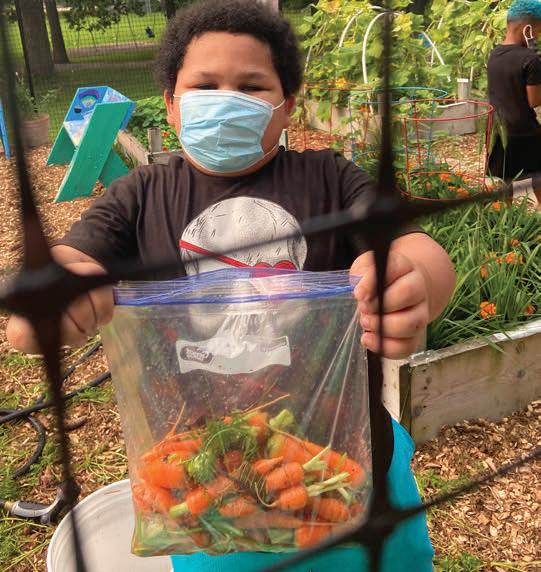




Three lush indoor locales beckon visitors to soak up green scenes, observe wildlife and take a break from cool outdoor weather.
BY SHELBY DEERING

Even though spring is almost here, those beautiful blooms and balmy breezes can’t come soon enough for many of us. Get your fix by visiting these three Wisconsin indoor gardens, all with their own distinct vibe.
Each locale has sturdy COVID-19 safety measures in place, including required face coverings, one-way walking paths and limited capacities. To confirm that they are indeed open, be sure to double-check the hours before going.
Since 1961, the Milwaukee County Zoo has been wowing adults and kids alike with its bevy of beasts. From lions, tigers and bears to some antelope, gorillas and lemurs for good measure, it’s always been a wild place, so to speak — that is, until you reach the oh-so-peaceful Herb and Nada Mahler Family Aviary (above). It’s like ducking into an island oasis right in the middle of Milwaukee. Outfitted in verdant, warm weatherloving plants, it’ll feel as if you’ve stepped right into summer, with one difference — you’ve likely never seen this many birds all in one place. Cardinals live in harmony alongside penguins, boat-billed herons wade in water next to whooping cranes and vibrant turquoise tanagers and fairy bluebirds add color to the scene.


If you need an escape to the tropics, albeit temporarily, look no further than the Bolz Conservatory (above) at Madison’s Olbrich Botanical Gardens. With more than 650 plants from all over the world, it might give you a taste of that international travel you’ve been dreaming about — and it doesn’t hurt that it’s always a balmy 65 to 80 degrees. Rare orchids, banana trees and ferns galore are on display while canaries, Japanese koi and even some elusive toads and geckos dot the environment. Linger over the 20-foot waterfall, meander the paths and park on a bench for a mini vacation made even better with a book in hand.
Reserve tickets to visit the famed Mitchell Park Domes. With their futuristic, geodesic design that’s punctuated the Milwaukee skyline since 1967, these glass structures hold entire ecosystems. There’s the Tropical Dome where you’ll feel as if you’ve jetted off to Bali with its hibiscus flowers, guava trees and rainforest vegetation. The Desert Dome (opposite page) is warm and arid with cactus-laden scenery reminiscent of the American Southwest, the African Sahara and beyond. To see kaleidoscopic blooms in all their glory, go to the Show Dome where floral designers display their talents within themes that change five times a year.
Shelby Deering is a Madison-based lifestyle writer specializing in home design, wellness, mental health, and travel, among other topics. She has contributed to Good Housekeeping, Martha Stewart Living, Domino and more. When she’s not writing, you will find her hiking a local trail or spending time with her husband and corgi, Dolly.


If you’d prefer to admire the beauty of the gardens (and learn a thing or two) from the comfort of your home, you can take part in these virtual experiences and classes.
Olbrich Botanical Gardens is offering a virtual lecture series with topics ranging from “Bumble Bee Basics” to edible landscaping. Register for a class and you could learn how to make a Pakistani vegetarian feast, paint an abstract landscape or discover how to properly care for orchids. olbrich.org/education/virtuallectureseries.cfm
The Mitchell Park Domes have a website section called The Domes @ Home that’s filled with family-friendly, educational videos; virtual tours; and kid-approved activities. milwaukeedomes.org
You can visit the Milwaukee County Zoo from your laptop. Their webcams featuring jaguars, lions and penguins are sure to put a smile on your face as you watch from home. To support the zoo from afar, you can always pick up toys and tees through the online gift shop. milwaukeezoo.org; zooview.tv







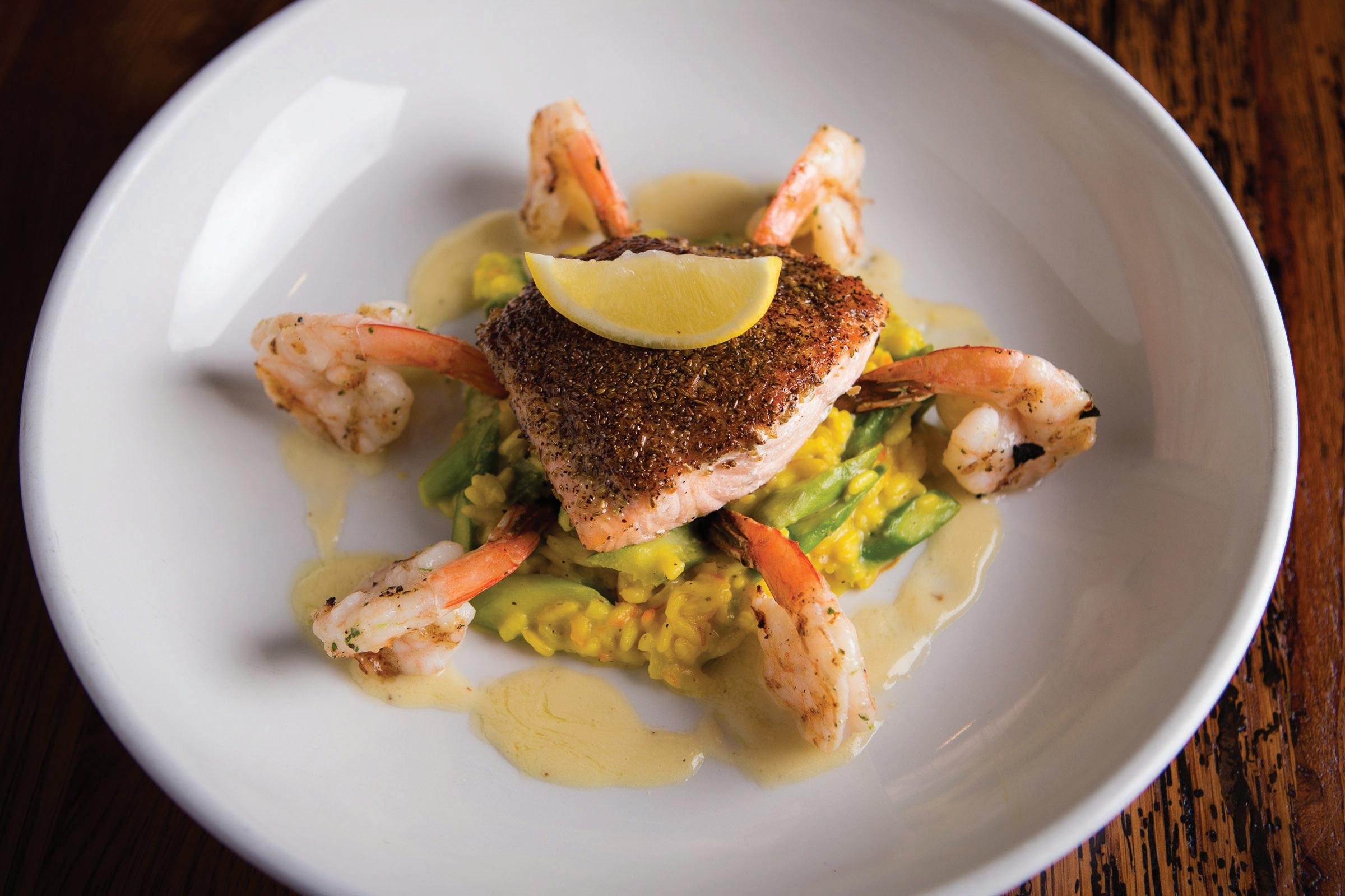




Artist Luisa Fernanda Garcia-Gomez — whose artwork is created under the moniker Mompoxino — uses art to communicate the contradicting emotions that always pull her back to Colombia, a place that was filled with love and violence.
BY SHELBY ROWE MOYER
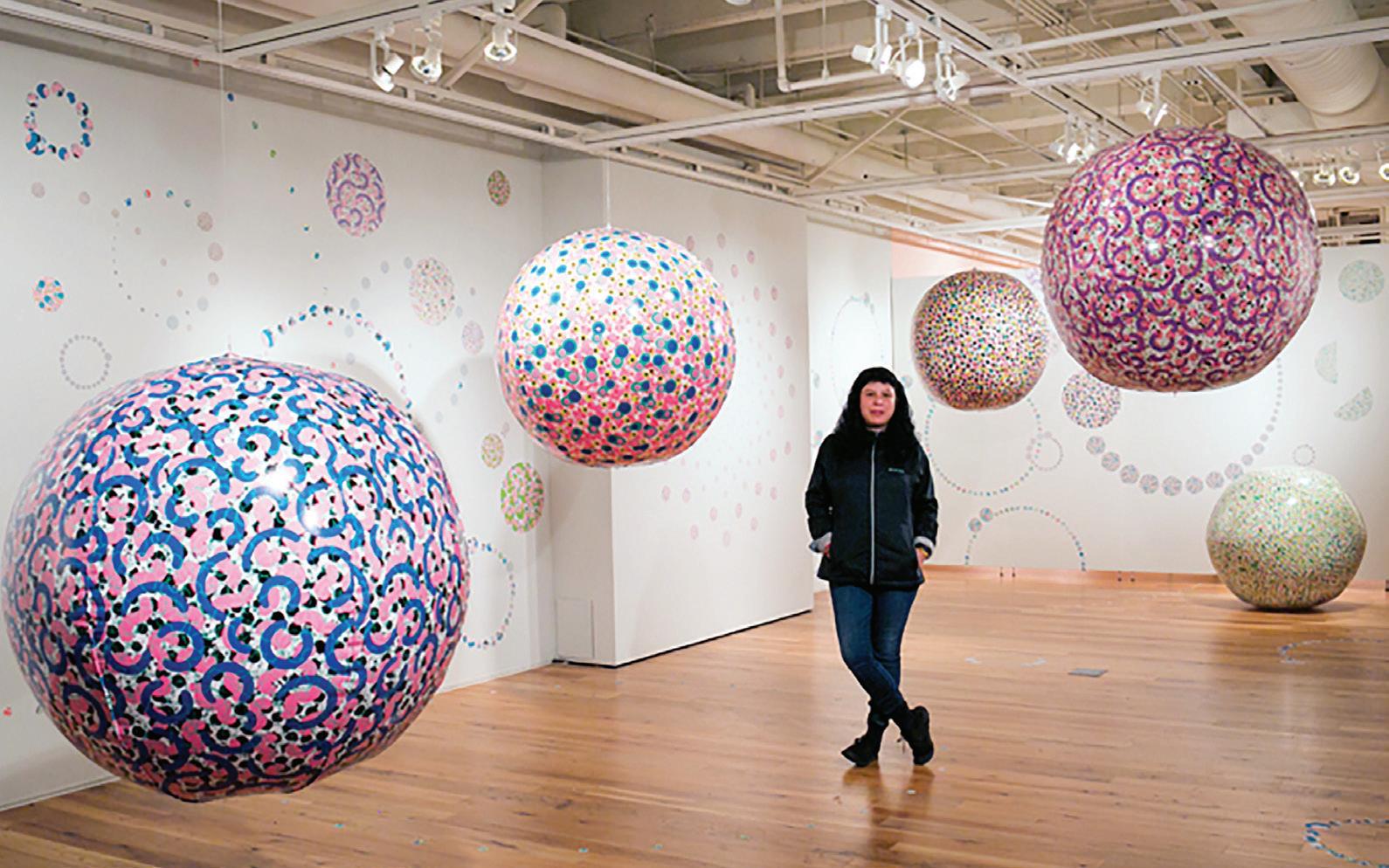
The illustrations by Madison-based Luisa Fernanda Garcia-Gomez are a hurricane of shapes and colors.
What the drawings depict aren’t always clear, but that’s not really important. As an abstract artist, it’s Garcia-Gomez’s desire to take people on the mental and emotional journey that urged her to create each intricate series.
All of her art comes from the feelings that are thwacking around inside her body — her way of releasing the mental and emotional tension.
Because her art is so playful and bright, most wouldn’t guess that much of her work is inspired by her hometown of Mompox, Colombia. Garcia-Gomez grew up during the height of the Colombian cartel drug wars, and describes an idyllic picture of painterly Spanish architecture and vibrant people — contrasted with intense violence and regular bombings.
“You never knew if you were going to make it home that day, but life didn’t stop.
Sometimes I was I was in the wrong place at the wrong time. I remember getting groceries and the store explodes, or I’m in a restaurant, and it explodes,” she says, noting that she always made it out OK. “I don’t want to be morbid; I just want to set a tone. At the same time, it was lovely. I had amazing friends, and when you live in that tension, you appreciate life more than anything.”
One of her previous exhibitions, entitled “1980,” incorporates colorful beach ball-esque installations suspended from the ceiling — her interpretation of the bombings that took place in a country she loves like a “toxic boyfriend.”
With her current series, “Gallitos,” (which translates to “little rooster”), she’s exploring the conflicting patchwork of cultures that are living inside of her — Latin, European and American.
In Colombia, the culture is free and expressive. Having lived in France and now the U.S., Garcia-Gomez became
accustomed to a more structured lifestyle. She moved to Madison in 2014, so it’s been over a decade since she’s lived in Colombia.
The first image in the “Gallitos” series depicts a cockfight — a visual summary of her feelings about Colombia. She’s been working on the series for about a year now, and the images are getting kinder and more tender. This is her way of coming to terms with herself and what it means to be a Latina woman.
“Gallitos” will eventually be on display at Overture Center, once the arts hub can return to its regular programming — which is important to Garcia-Gomez.
“Part of my artistic path is very community-based — I need to share,” she says. “We live in such a lonely time. I think my role as a human, as an artist, is to try and create something better or create a scenario where you can hear and listen and think about something other than yourself.”

When you’re entrenched in experiential art with other people, she says, you’re more likely to strike up a conversation with them and develop more empathy for those around you. In this sense, the isolation of the pandemic has been especially difficult for her.
“Something weird I’ve been feeling lately is how we can live without bridges and buildings,” she says. “But we can’t live without other humans.”
To honor and celebrate Women’s History Month in March, we asked Sydne Conant of A Room of One’s Own Bookstore to curate a list of her top, female-centered titles.
“There are continually new feminist voices and points of view to explore,” she says. “Especially now, I think reading young writers and nonwhite writers is important. Those are the people changing the world.”
Crack open these tomes for some fiery wisdom, history and inspiration.
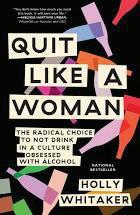
“Quit Like a Woman by Holly Whitaker”
In a society where most events and celebrations center around drinking, Holly Whitaker decided to create a sober community and resources for anyone who wants to cut out alcohol. It’s a timely read during the pandemic, when alcohol use has skyrocketed.
“Wayward Lives, Beautiful Experiments” by Saidiya Hartman
An exploration of forgotten history, “Wayward Lives” shares intimate histories of Black women in New York and Philadelphia at the beginning of the 20th century.
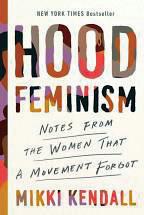

“Hood Feminism” by Mikki Kendall Mikki Kendall addresses modern feminism and how women today are overlooking their Black and brown counterparts.
“Run to Win” by Stephanie Schriock
A guide for any woman who wants to change the world or wants to help others. Stephanie Schriock has coached several prominent women in politics.

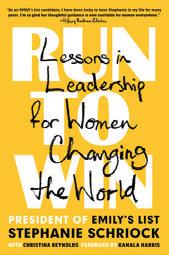
“Sisters in Hate” by Seyward Darby
An eye-opening report on how white women propagate and normalize white supremacy, racism and extremism.
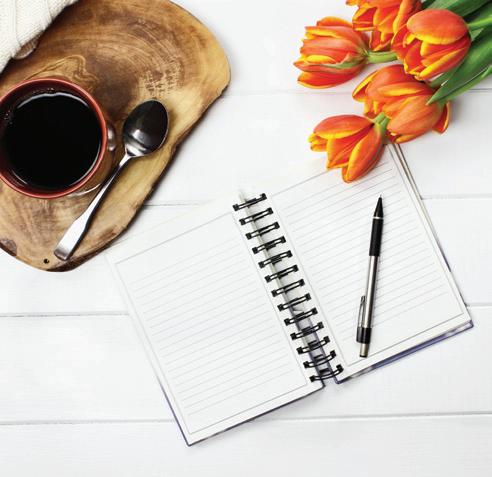

Overture has announced a lineup of live Broadway shows that will kick off in November and run through summer of 2022. Some of these shows were originally scheduled for the 2019-20 season, and well, we know what happened there. The current lineup begins with “Fiddler on the Roof” Nov. 16-21 and follows with “Mean Girls,” “Hairspray” and “Hamilton” — to name a few.
“Announcing our Broadway season indicates there is light at the end of the tunnel,” says Tim Sauers (above), vice president of programming and community engagement. “It gives us hope for a safe reopening of Overture Center and return to live performances, and it gives us something to look forward to over the next several months.”
The only way to guarantee your seat is to become a Broadway Overture subscriber. Find details at overture.org/programs/broadway.
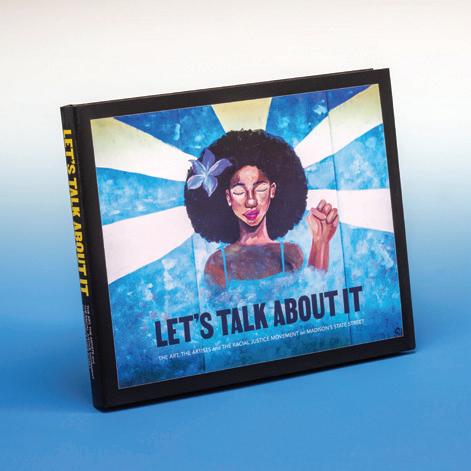
In order to preserve the 100-plus social justice murals displayed all over State Street, a coffee table book with imagery of the murals and thoughts from the artists has been curated and released.
The book, entitled “Let’s Talk About It,” was coordinated and funded by the American Family Insurance Institute for Corporate and Social Impact, a philanthropic arm of the insurance company “to help close equity gaps and support marginalized communities.”
Part of the aim of this book is to help continue the conversation surrounding race and equity and provide further visibility of the artists, says Karin Wolf, program administrator of the Madison Arts Commission, who led the mural project for the city.
The book isn’t available for purchase, but copies can be viewed at all Madison public libraries, Madison Metropolitan School District school libraries and area colleges.
The impact of the pandemic feels heavy now, but in a few years, the details may begin to fade from our memories. In order to preserve what COVID-19 and the isolation of lockdowns looked and felt like, the Wisconsin Historical Society is asking people to create written, audio, video or art-based COVID journals, so that people 100 years from now will have an intimate understanding of what life was like.
The historical society has a history of doing this. In 1861, the WHS founder asked soldiers at Camp Randall in Madison to document their Civil War experience, complete with their daily happenings and thoughts. To this day, it’s one of the state’s most important wartime archives. Interested in keeping and donating a COVID journal? You can find the details at wisconsinhistory.org/journalproject

ONE OF A KIND | During Women’s History Month we honor Vel Phillips (1923-2018), the first Black woman to serve as secretary of state of Wisconsin from from 1979-1983, and a Civil Rights leader. She was also the first Black woman to graduate from the UW–Madison School of Law in 1951, as well as the first African American and woman to serve on the Milwaukee City Council and become a Wisconsin judge. A proposal to place a statue of Phillips at the Capitol on South Hamilton Street is moving through the approval process now, and placement could happen as early as this summer. It would be the first statue at the Capitol honoring a person of color.








